With a Song in our hearts
Discovering one of the richest periods in Chinese ceramics
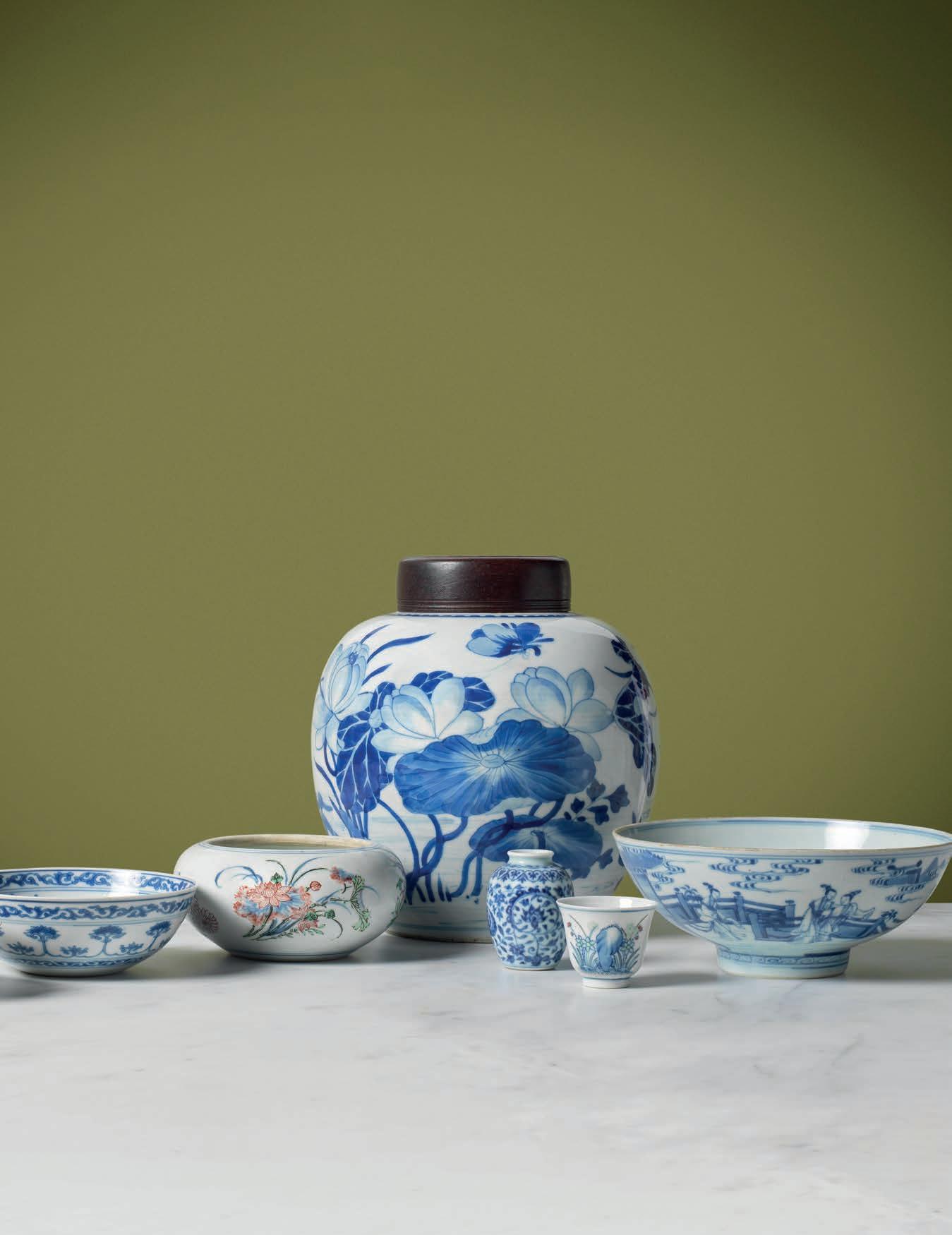
Inside:
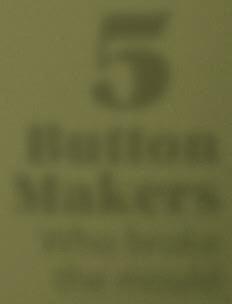
HAUNTED HOUSE BEHIND THE SCENES OF A SPOOKY SALE AT AN ESSEX AUCTIONEERS
GLAZE OF GLORY THE DESIGNS OF AN UNSUNG FEMALE POTTER ON SALE
OCTOBER 2023
FRESH PAINT
From the studio to the saleroom, works by 11 artists go under hammerthe
5 Who broke the mould
Button Makers
GILDING the LILY
Furniture expert David Harvey brings an ornate Regency console back to life
THE CLIVE & JANE WAINWRIGHT COLLECTION ROCOCO IS BACK IN VOGUE ALSO INSIDE Book offers • London fairs preview •
all ANTIQUE COLLECTING VOL 58 N0.5 OCTOBER 2023
Charles Hanson reveals
A FRENCH TOUCH
More than 6,000 auctions across Europe
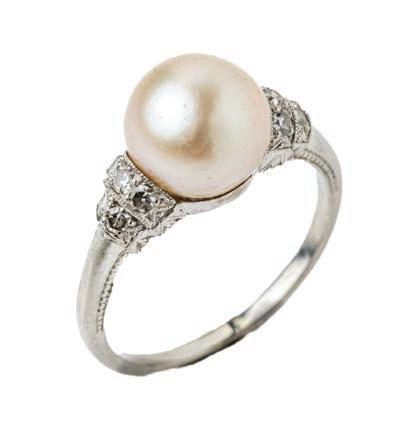

Old Masters paintings - Furniture - Jewellery - Books...


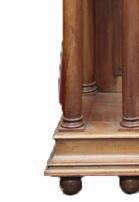





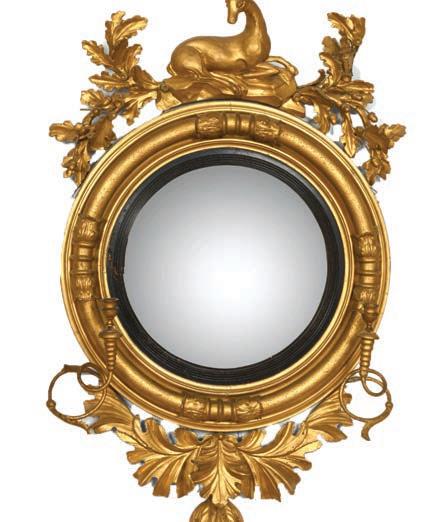
Welcome
I wonder if you remember your mother’s sewing box with the same photo-like clarity I do mine? It was old even in the 1970s, in the form of a red-and-green hexagonal biscuit tin and, like the cocoa, appeared every night.
Half a century ago, unlike today – when any threadbare jumper is consigned to land ll as quickly as its replacement is next-day delivered – my mother used to mend things. Every evening, as she settled down in front of the TV, out came the darning needle.
Aged seven I was less interested in the mending (just another one of those boring, mystical tasks grow-ups did ) but I was fascinated, and I mean fascinated, by her button jar.
Dozens and dozens of shiny orbs, so interesting they were almost human. I lined them up in tiny legions of colour, size and shape – devastated when one of them received the call up to leave the jar and return to a shirt. So I was delighted when Kettle’s Yard announced buttons as the subject of its latest exhibition. But these are not the mass-produced nuggets of my youth, but rather small beauties made by some of today’s best-known contemporary artists, including Antony Gormley and the Chinese dissident Ai Weiwei. Buttons, of course, also make a great subject for collectors, have a look at our feature on page 44.
Back in the ‘70s, with no internet, AI or chatGPT, if you wanted to learn about something you actually needed to read a book. And thank goodness our sister publisher ACC Art Books continues to produce a range of magni cent titles on the arts and visual culture. Its latest landmark publication is by the furniture historian Christopher Payne and called British Furniture 1820 to 1920: e Luxury Market. Over 600 pages he charts furniture design from the early Victorian era through to the advent of art nouveau and, on page 52 of this magazine, he reveals which of the pieces – of the hundreds he came across – are his favourites (you will also nd an exclusive subscriber o er on the price of the book).
Elsewhere in the magazine, on page 30, we consider the new trend for the rococo, go behind the scenes of two exhibitions devoted to the Antiguan artist Frank Walter (page 24) and, with Halloween on October 31, preview one of the spookiest sales you will see all year. Enjoy the issue.
BARBARA PACA
The art historian and curator reminisces on the Antiguan artist Frank Walter, page 24
ADRIAN BIDDELL

Reveals why he’s spearheading a whole new type of auction, page 36
 Georgina Wroe, Editor
Georgina Wroe, Editor



KEEP IN TOUCH
Write to us at Antique
Collecting, Riverside House Dock Lane, Woodbridge, Suffolk, IP12 1PE, or email magazine@accartbooks.com. Visit the website at www.antique-collecting.co.uk and follow us on Twitter and Instagram @AntiqueMag
FRANCESCA YOUNG
Goes behind the scenes at the sale of an eclectic collection in North Yorkshire, page 42
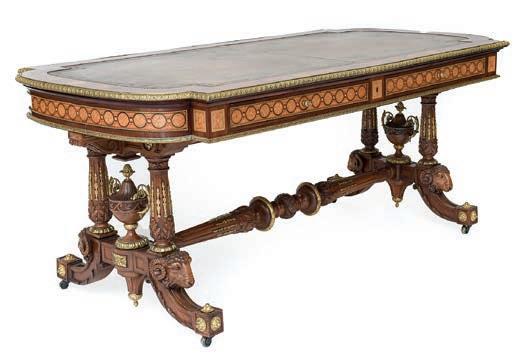
Editor: Georgina Wroe, georgina. wroe@accartbooks.com
Online Editor: Richard Ginger, richard.ginger@accartbooks.com
Design: Philp Design, james@philpdesign.co.uk
Advertising and subscriptions: Charlotte Kettell 01394 389969, charlotte.kettell @accartbooks.com
ANTIQUE COLLECTING 3 IN THIS ISSUE
THE TEAM
PAUL FRASER
Our memorabilia expert assesses the impact of the recent Freddie Mercury sale, page 8
SUBSCRIBE TODAY TO ANTIQUE COLLECTING Call 01394 389969 or email charlotte.kettell@accartbooks.com FIRST WORD is library table attributed to Holland & Sons which has an estimate of £3,000-£5,000 at Tennants Auctioneer’s sale on October 14 We love! ONLY £38 for 10 issues
TheTreatyofRyswickcommemorativepewterporringerandcover:anexceptional Englishpieceofpewter,circa1697-1722. estimate:£5,000-£8,000



WEDNESDAY18&THURSDAY19OCTOBER2023
viewingforthisauctionwilltakeplacefromSaturday14October2023, pleaseseeourwebsiteforfullauctiondetails

www.bishopandmillerauctions.co.uk

19CharlesIndustrialEstate,Stowmarket,Suffolk,IP145AH
enquiries@bm-auctions.co.uk01449673088
THEOAKINTERIOR
Porcelain from the collections of Sir Ivor Philipps and Barry C. Tattenhall, offered at Bonhams Knightsbridge Asian Art sale on October 30-31
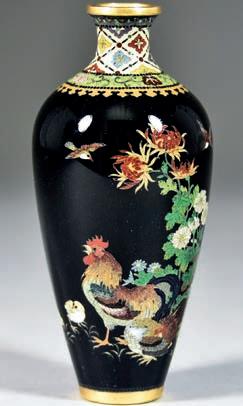
REGULARS
3 Editor’s Welcome: Georgina Wroe introduces this month’s issue with a look at the tiny world of button art
6 Antiques News: A round up of all the events taking place this month, including three must-see exhibitions
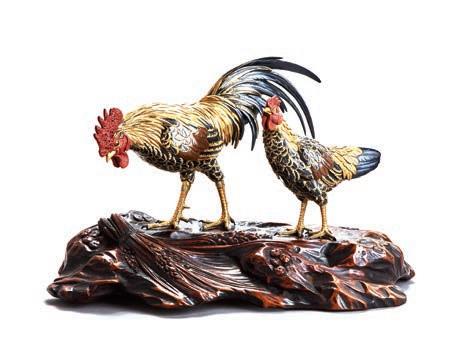
10 Your Letters: e debate over imperial or metric measurements rumbles on and there’s information on an experimental Su olk school
12 Around the Houses: ree summer sleepers take the UK salesrooms by storm and a collection of Carry On lm posters has gone under the hammer
20 Waxing Lyrical: David Harvey uses some gentle elbow grease to restore a magni cent Regency console which returned to his saleroom after 40 years
22 Subscription O er: Save up to a third on the annual cover price and you, or a friend, receives a free book and bag
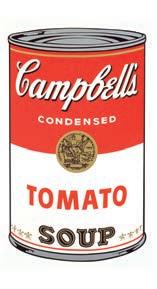



29 Top of the Lots Halloween: We preview the spookiest online sale you will see all year, set to end on October 31
40 Puzzle Pages: Two more head scratching conundrums from our crossword and quiz editor Peter Wade-Wright
42 Saleroom Spotlight: A look at the sale of an eclectic collection of midcentury designs and paintings set to take place in North Yorkshire
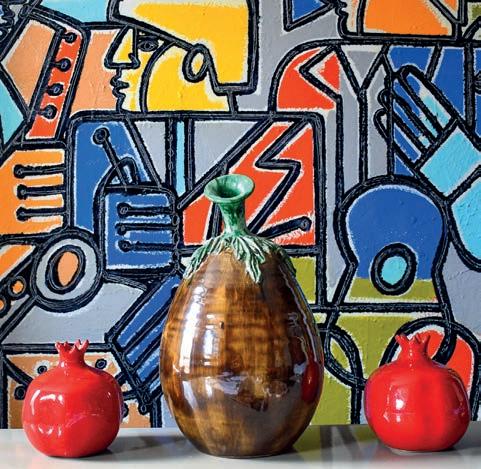
47 An Auctioneer’s Lot: Charles Hanson pro les the work of one of the unsung heroines of 20th-century ceramics –Julia Carter Preston
48 Top of the Lots: A focus on a very special sale of gothic pieces taking place in Essex, plus a rare clock goes under the hammer in Doncaster
50 Book O ers: Save more than a third on the latest titles from our sister publisher ACC Art Books, including the tell-all autobiography of Geo rey Munn
57 Fairs News: ree popular London events go under the microscope as well as a must-visit fair in Chester
58 Fairs Calendar: Discover all the latest events from around the UK with our essential listings
60 Auctions Calendar: Sales from the UK’s leading auction houses are at your ngertips with our must-read guide
66 Marc My Words: Antiques Roadshow specialist Marc Allum reveals another slice of life as a TV expert, auction valuer and author
FEATURES

16 Going for a Song: e exquisite ceramics of the Song dynasty are put in the spotlight as we reveal the most sought-after pieces
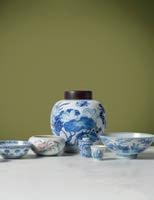
24 Being Frank: e astonishing work of the reclusive Antiguan artist Frank Walter goes on display at two exhibitions in London and Hong Kong. Antique Collecting lifts the lid
30 Rococo Pops: e ornate and whimsical style of roroco is back in vogue at art fairs and with interiors specialist. What makes it so special?
36 Studio Session: A new sale of artists’ work consigned direct from their studio and estate takes place this month in London. Antique Collecting goes behind the scenes
44 Breaking the Mould: As an exhibition of buttons made by contemporary artists is unveiled in Cambridge, we consider what makes the mini works of art so fascinating
52 Ebony and Ivory: On the eve of the publication of his landmark book, author and furniture expert Christopher Payne reveals his favourite piece in a century of design
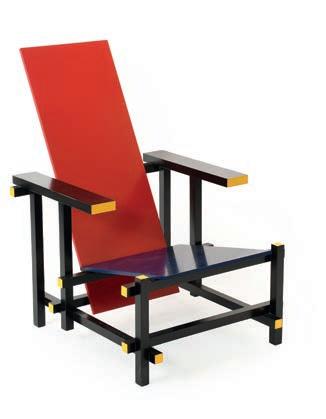
ANTIQUE COLLECTING 5 THIS MONTH Contents COVER
VOL 58 NO 5 OCTOBER 2023 ALSO INSIDE Book offers London fairs preview Charles Hanson reveals all FRESH PAINTFrom the studio to the saleroom, works by 11 artists go under hammerthe OCTOBER 2023 GILDING the LILY Furniture expert David Harvey brings an ornate Regency console back to life With a Song in our hearts Discovering one of the richest periods in Chinese ceramics Button Makers 5 Who broke the mould Inside: THE DESIGNS OF AN UNSUNG FEMALE FOLLOW US @AntiqueMag
TO SUBSCRIBE TODAY VISIT WWW.ANTIQUE-COLLECTING.CO.UK/SUBSCRIBE WEEKDAYS FROM 9.30AM TO 1PM,
42 42 12 57 6
WHAT’S GOING ON IN OCTOBER
A NTIQUE news
Above A view of the ames by William Marlow (1740-1813) went on to sell for £9,500
Above right e team of experts on the programme Millionaire Hoarders, image courtesy of Channel 4

Right e medieval seal has gone on show at Mottisfont in Hampshire
Below A bronze statue of omas Wolsey is situated close to Ipswich town centre where the cardinal was born

Cardinal win
Some 550 years after Cardinal omas Wolsey (1473-1530) was born inIpswich, the Su olk town is at the centre of more than a year ofevents devoted to its famous son.
October 22, as part of Wolsey 550, sees a curated tour of the town highlighting theareas and buildings the cardinal would have known.
Wolsey was the closest advisor to Henr known as “alter rex” or “other king ” , he was arguably the most important man in Tudor England.
His fall from grace occurred from 1529 when he failed to persuade the Pope to annul Henry’s marriage to Catherine of Aragon and he was stripped him of his government o ce and property – including Hampton Court .
Left only with the title of the Archbishop of York he headed north but was accused of treason when he reached Cawood in Yorkshire. He died of a stomach ulcer on his return to London, aged 57, and is buried in Leicester Abbey. For more details on all the events taking place go to www. thomaswolsey550.co.uk
Chairman of the hoard
After playing a key role in discovering an Old Master on the Channel 4 series Millionaire Hoarders, the owner of an online valuation service is urging home owners to search their attics for forgotten treasures. Antiques specialist Iain Brunt, owner of www. antiques.co.uk, was asked to authenticate a painting of the Thames by William Marlow (1740-1813) discovered in the guest room of Craufurdland Castle in Scotland which went on to sell for £9,500. He said: “The owner had no idea where this scene was set because it was painted before the current Houses of Parliament were built.” In the same episode a Constable painting, previously discounted as a fake, went on to achieve a potential price tag of £2m.

Brunt told Antique Collecting: “There is treasure troves of antiques in people s own homes. They just don’t know it yet.” Anyone with an antique to value can upload an image free of charge to his website.
SEAL OF APPROVAL

A seal matrix used to authenticate medieval indulgences and offer a fast track to heaven in exchange for cash is to go on display at a Hampshire priory after spending 500 years buried in a field. The small carved mould, dating between 1470 and 1520, was found by a metal detectorist two miles from Mottisfont, an Augustinian priory and site of pilgrimage near Romsey, Hampshire, that is now owned by the National Trust. It would have been used to authenticate indulgences – written pardons for sinful behaviour granted by religious institutions in return for a financial donation. They removed one year and 40 days off the purchaser’s time in purgatory after death while they waited for entrance to heaven. To discover more go to www.nationaltrust.org.uk/ mottisfont
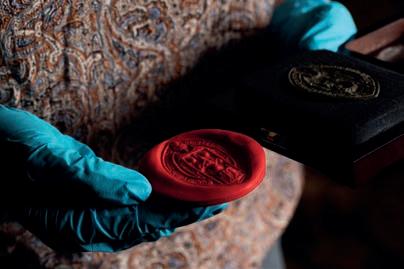
NEWS All the latest
With autumn fast approaching, there is still much to warm the hearts of antiques and ne art lovers this month
6 ANTIQUE COLLECTING
1Pop-tastic
Ireland’s largest ever exhibition of the works of the American pop art artist Andy Warhol(1928-1987) opens this month in Dublin.
Hugh Lane Gallery will host Andy Warhol Three Times Out from October 6 to January 28 made up of 250 Warhol paintings, prints, photographs, films and installations.
Five years in the making, the exhibition showcase some of the Pittsburg-born artist’s most iconic works, as well as a section devoted to the collaboration both he and Francis Bacon had with the US artist and wildlife photographer Peter Beard who died in 2020. Beard and Warhol were regulars onthe Manhattan party scene in the 1970s, frequenting the famous Studio 54 nightclub.
Hugh Lane Gallery isone of Ireland’s leading museums of modern art and located on Parnell Street.
3Tale of two cities
e Holburne Museum in Bath this month unveils the rst retrospective of the artist Gwen John (1876–1939) in 20 years, taking as its focus two cities in which she lived and worked.
Gwen John: Art and Life in London and Paris, which opens on October 21 and runs until next April, traces the artist’s artistic development from London’s Slade School of Fine Art to her permanent move to Paris in 1904. It also explores the relationship of her work to that of her brother Augustus John (1878-1961) and her 10-year a air with the sculptor Auguste Rodin (1840-1917).
e exhibition also challenges the idea of an artist as an eccentric recluse. By highlighting her connections with her contemporaries and women
Left Andy Warhol, Marilyn Monroe (Marilyn), 1967, screenprint © 2023 e Andy Warhol Foundation for the Visual Arts, Inc. / Licensed by Artists Rights Society, New York

Right R.B. Kitaj (19322007) in his studio, 1973 © R.B. Kitaj Estate, courtesy of Piano Nobile, London
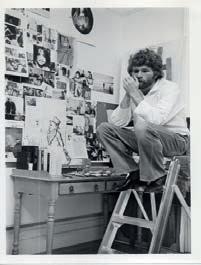
Below left Andy Warhol, (1928-1987) Self-Portrait, 1966, silkscreen, © 2023 e Andy Warhol Foundation for the Visual Arts, Inc. / Licensed by Artists Rights Society, NY

Far left Andy Warhol (1928-1987) Campbell’s Soup I: Tomato, 1968, screenprint © 2023 e Andy Warhol Foundation for the Visual Arts, Inc. / Licensed by Artists Rights Society, New York

2 American dream
e rst major retrospective of R.B. Kitaj (1932-2007) in the UK for a decade opens this month featuring more than 40 paintings, pastels and drawings from his student days at the Royal College of Art, to his nal years in Los Angeles.
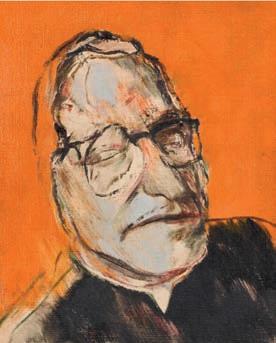

Running until next January, R.B Kitaj: London to Los Angeles opens at the London gallery Piano Nobile on October 25. Ohio-born Kitaj arrived in London in 1958 and was at the centre of a peer group including David Hockney.
He blamed criticism of his work at a 1994 Tate exhibition for the death of his wife Sandra who su ered a brain aneurysm which he claimed was due to stress and provoked his move back to the US.
Below Gwen John (18761939) A Corner of the Artist’s Room in Paris, 1907-1909 © She eld Museums Trust
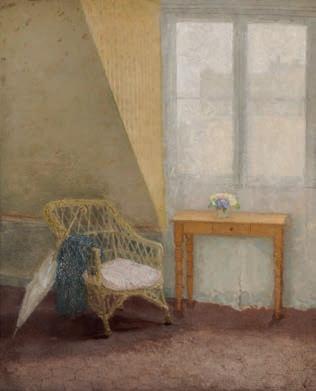
Below right Gwen John (1876-1939) Mère Poussepin, c.1915-1920 © e Henry Barber Trust, e Barber Institute of Fine Arts, University of Birmingham

artists of her time, such as Ida Nettleship (18771907) and Ursula Tyrwhitt (1878-1966), John is revealed as a socially-engaged and radical modern woman.
e nal part of the exhibition considers her later works made in the village of Meudon, near Paris, the place she made her home.
to see in October 3
ANTIQUE COLLECTING 7
Below R.B. Kitaj (1932-2007) e Architects, 1981 © R.B. Kitaj Estate, courtesy of Piano Nobile, London
Above R.B. Kitaj (1932-2007) Monsignor Ungar, 1952, © R.B. Kitaj Estate, courtesy of Piano Nobile
Green light
Box clever
If you believe auction houses are purely the domain of dusty Old Masters and priceless antiques – it’s time to think again.
The Staffordshire auction house
Cuttlestones recently sold a number of empty Nintendo game boxes for a very fulsome £200.

Auctioneer Dave Eglington said: “We’re used to seeing games consoles and games of all eras commanding decent sums, but even we were somewhat taken aback by the interest generated by the empty game boxes!”

FRUIT LOOP
A painting by René Magritte (1898-1967), is expected tobecome the most valuable surrealist work ever togo up for auction.
Hesitation Waltz depicting large turquoise apples wearing eye masks, has an estimate of €10m–€15m when it goes under the hammer on October 16 at Sotheby’s in Paris. It is the second time one of Magritte’s eight “masked-apples” has been offered at auction, and the first time the work will be seen in public since 1979. Apples were an ongoing motif in Magritte’s work, his 1966 painting Le Jeu De Morre, owned by Paul McCartney, inspired the Beatles to name their record companyApple Corps.
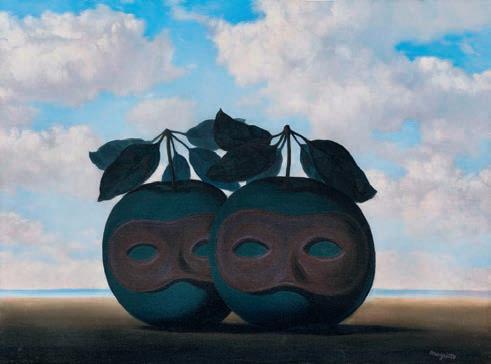
30 seconds with...
We asked memorabilia expert Paul Fraser of the significance of the recent record-breaking sale of the Freddie Mercury collection
How big was it?
Huge. The collection of his personal items and memorabilia blew the roof off Sotheby’s selling for a total of £12.2m. 59 lots crossed the block, including handwritten lyrics, jewellery, costumes, instruments and artworks. The white glove sale attracted bidders from around the world with, in some cases, lots selling for 100 times their estimate.
Was there a star lot?
The star lot of the sale was Mercury’s 1973 Yamaha G2 baby grand piano, on which he wrote many of Queen’s most famous songs. After a dramatic bidding war it sold for £1.74m. To put that into perspective, it’s now more valuable than Elton John’s 1970s stage-used piano, which sold in 2021 for $915,000 and John Lennon’s white Imagine piano, sold in 2000 for $2.1m.
Any other highlights?
Mercury’s handwritten song lyrics. The figures they achieved were remarkable. Somebody To Love sold for £241,300, We Are the Champions sold for £317,500. And Queen’s most famous song of all, Bohemian Rhapsody, sold for £1.4m. Only Bob Dylan’s lyrics to Like A Rolling Stone
London antiques dealer turned interior designer Rose Uniacke has launched a natural paint range.
e brand teamed up with London paint maker Graphenstone to develop a range of mineral-based paints, free from chemicals.
She said: “Many house paints contain chemicals that are hazardous to the environment and health. We have developed a range that is virtuously odourless, sustainable and durable; acrylic, microlastic, formaldehyde, trace VOC and reservative free.”




plastic, trace VOC and preservative free.”


The daughter ofantique dealer Hilary atstone, was herself a dealer r many years before successas an interiors specialist designing David and ictoria Beckham’s house in Holland Park and renovating a Regency townhouse in Marylebone for the fragrance and lifestyle brand Jo Malone.
Batstone, Rose was herself a dealer for many years before success as an interiors specialist designing David and Victoria

are more valuable, having soldfor $2m at Sotheby’s in 2014. A Cartier onyx and diamond ring, a gift from Elton John, sold for £273,000, nearly 70 times its estimate.
What does it mean for Queen memorabilia?
This auction was a watershed moment for the market. Freddie Mercury is now one of the most valuable names in music memorabilia. Queen signed albums are also soaring. In 2018, a signed copy of their 1973 self-titled debut album sold for $1,840, in 2020 we sold a copy to a client for $11,000 and last month another signed copy sold at auction for $39,180.
For more information go to www. paulfrasercollectibles.com
8 ANTIQUE COLLECTING NEWS All the latest
Below The empty boxes sold for £200 in Staffordshire
Above René Magritte (1898-1967) La Valse Hésitation ( e Hesitation Waltz) goes under the hammer this month
Marylebone
Above e new “green” paint is toxin free, image courtesy of Rose Uniacke
Anne arrest
20 years after the theft of ve miniature portraits from Anne Boleyn’s bedroom at Hever Castle in Kent, curators have renewed appeals for the return ofthe remaining missing three.
While two portraits were recovered, three remaining pictures are unaccounted for
One of the portraits of Mary Queen of Scots was inside a 16th-century heart-shaped locket of rock crystal, which also included a lock of the queen’s hair In 2004, William Edmonds was sentenced to three years in youth custody for the crime the authorities suspected was a professional heist.
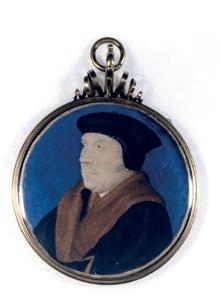
Curator, Alison Palmer, said: “Anyone with information should approach Heritage Watch or the appropriate authorities.”
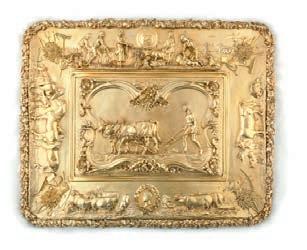
WOMEN’S WORK
A new art fair dedicated to redressing the gender imbalance in the art industry launches this month.
Women in Art Fair, at Mall Galleries, London from October 11-14, is curated by artist and editor Rowena Easton and features well-known female artists such as the Portuguese-British artist Paula Rego (1935-2022) and Marcelle Hanselaar (b. 1945) as well as less-established names including Abigail Norris, Olivia Bullock and Geraldine Swa ne.
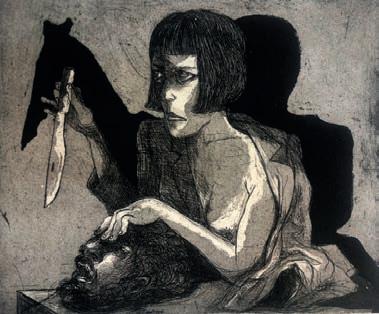
The fair also promises to explore how craft has been divided along gender lines.
Crafty move
Historic craft masterpieces go on display alongside contemporary creations at Compton Verney in Warwickshire this month at an exhibition celebrating 4,000 years of material culture.
History in the Making: Stories of Materials and Makers, 2,000BC to Now opens at the gallery on October 21. Works on display will include ancient Chinese ceramics from Compton Verney’s internationally-renowned collection and 18th-century Indian bed textiles from Woburn Abbey.
Dress to impress
Almost 60 years after a Mary Quant grey wool dress scooped the title of ‘best dress of the year’, a micro miniskirt by Miu Miu has taken the accolade. Presented by the Fashion Museum in Bath, home to one of the world’s greatest collections of historical and contemporary dress, the award celebrates a standout out t selected by a leading industry expert.
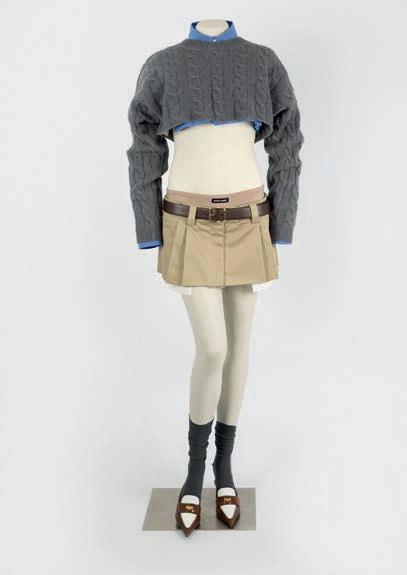
Last year the award was given to the black georgette dress by Giorgio Armani worn by Meghan, Duchess of Sussex in her famous television Oprah interview.
is year’s judge was Kenya Hunt, editor-inchief at Elle UK who chose the Miu Miu set which was rst seen on the Spring/Summer 2022 runway, with designer Miuccia Prada’s low-waisted micro miniskirt creating a viral fashion moment.
Aisle say
David McDonald, previously part of the conservation team of the Royal Borough of Kensington and Chelsea, is presenting a walking tour of the London borough’s Victorian churches on October 10.
e architectural journey will explore the churches’ history which saw an upturn in 1842, when the vicar of the St Mary Abbots established 14 new parishes. By 1872 some 53 churches and chapels were recorded, many by the greatest architects of the 19th century.
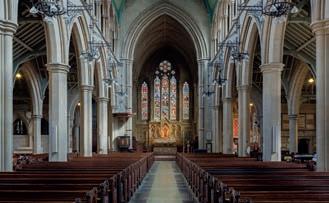
Mr McDonald is a heritage consultant and chair of the Institute of Historic Building Conservation. For more details on the talk and to book a ticket go to www.smaw8.org/victorian-society-talk
FALL CYLINDERS
A 1962 Ferrari could become one of the most expensive cars ever sold at auction when it is sold in Sotheby’s New York with a pre-sale guide price of $60m (£47m).
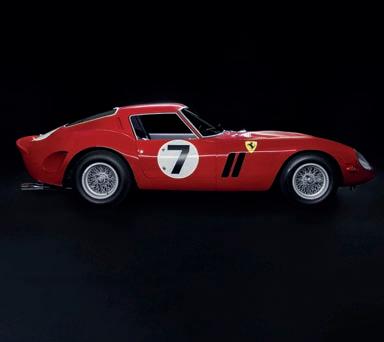
e race car is one of two GTO models raced by Ferrari’s own team, Scuderia Ferrari. It sold for $6,000 in 1964, the equivalent of about $59,000 today.
In 1985, it was then purchased for around $500,000, around $1.4m today.
Gord Du , global head of auctions at RM Sotheby’s, said: “ e 1962 Ferrari GTO is more than a classic; it’s a legend. Being the only series 1 GTO to ever race as a factory-campaigned car, it represents an unparalleled piece of automotive history.” It goes under the hammer on November 13.
ANTIQUE COLLECTING 9
Above Marcelle Hanselaar (b. 1945) Vindication, Judith and Holofernes, image courtesy of the artist
Above A circular miniature of Thomas Cromwell, Earl of Essex, studio of Hans Holbein, c.1535
Left e Landseer dish, by Benjamin Preston (17961887) after designs by Edwin Landseer, 1837, from the Woburn Abbey collection
Left e Miu Miu set is the 2022 dress of the year
Below e 1962 Ferrari has a price tag of £47m
Above e interior of St Mary Abbots in Kensington, image courtesy of David Ili , public domain
Your Let ters
Our star letter receives a copy of British Designer Silver by John Andrew and Derek Styles worth £75. Write to us at Antique Collecting magazine, Riverside House, Dock Lane, Melton, Woodbridge, Suffolk, IP12 1PE or email magazine@ accartbooks.com
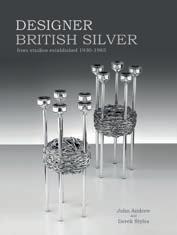
I was interested to discover Woolverstone Hall, near Ipswich in Su olk, is the location for a local brocante (Fair News, August issue). While of note to collectors in its own right, I thought readers might like to learn a little bit more about the hall’s time as a boarding school for boys when it was taken over by the now defunct London County Council in the 1950s. e experimental idea was that that it should be run along the lines of a public school but actually be for the public. Admission was granted on academic merit , not available funds, and the result was a hotch potch collection of children, some from Bohemian backgrounds, others working class.
Lovely to read about the V&A’s upcoming exhibition on the life and work of Coco Chanel (Material Girl, September issue) which is now on my calendar.
It reminded me of a very smart two-piece Chanel suit which I saved up for months to buy (I think I was inspired by Jackie O). After its second, much-admired, outing I carelessly left it on the bed, allowing the puppy we had at the time to chew a huge hole in the sleeve.
I wouldn’t mind but the hound in question was a French bulldog. So much for national solidarity.
Jean Mason-Reed, London
I fully support Barry Anderson’s letter in the August issue advocating a return to UK units of measurement. e dreaded and totally incomprehensible Common Market/ EEC/EU (call it what you will) has been consigned to history. Our small island is now in a wonderful position to regain full sovereignty. Let’s use our own measurements: feet and inches, pounds, shillings and pence, hundredweights, as well as pounds and ounces. One result of such a return will be that children will have to learn how to add, subtract, divide and all multiplication tables up to at least 16. No longer will the number ‘10’ rule as king of units.
Perhaps those of us who are pensioners will nd retirement jobs teaching teachers and pupils how real measurements work. OK – I’m old fashioned. Maybe I should return to my rods poles and perches!

David Embling, by email

Left Born to chew, a French bulldog puppy, image Mike Tinnion, public domain

Above right Woolverstone Hall was once the home of an experimental boarding school for boys, image Shutterstock

Below David is fully in favour of a return to feet and inches, image Shutterstock
Its alumni, before it became a comprehensive in 1977 and closed in 1990, included some very well-known names including the Man Booker prizewinning author Ian McEwan and the actor Neil Pearson. Also, one lesser-known ex pupil – my dad. Rebecca Easton, by email
The answers to the quiz on page 40. Q1 (c). Q2 (b). Q3 (a). It was a once-admired but difficult-to-read southern Italian literary script which died out in the 13th century. Q4 (d). They are created when the mollusc rejects the seed but continues to develop the pearl. Q5 (b). Q6 (c). Other commedia dell’arte character figurines are more common. Q7 (a). Right-handed people preferred quills from the left wing of the goose, which didn’t tickle the face. For the same reason left-handers – of whom there were fewer –preferred quills from the right wing. Q8 (d). Q9 (b). Q10 (a) He is credited by some with inventing the game, although many claim this is a myth.
Answers to the anagrams. The words cement peas can be rearranged to form the word escapement; the letters chin of fire is an anagram of chiffonier; the words eats madly can be rearranged to make the phrase Adam-style and senile gaucho is an anagram of the word chaise-longue
Have your say 10 ANTIQUE COLLECTING
LETTERS
is month’s postbag includes memories of a new fair location and tales of a ruined two-piece Chanel suit
Star letter
‘Let’s use our own measurements: feet and inches, pounds, shillings and pence, hundredweights, as well as pounds and ounces’

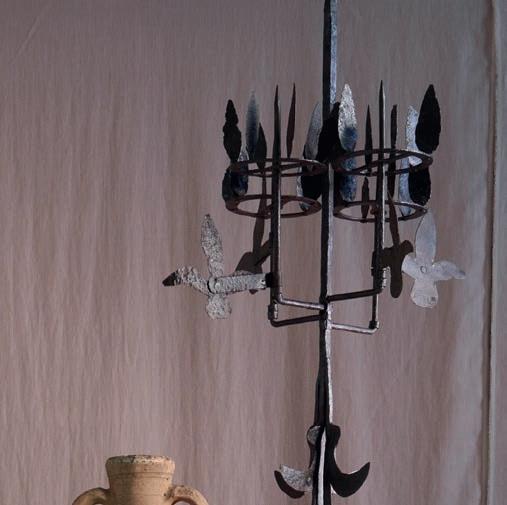
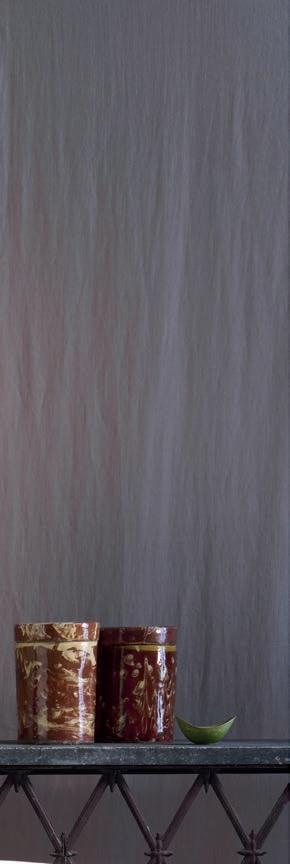

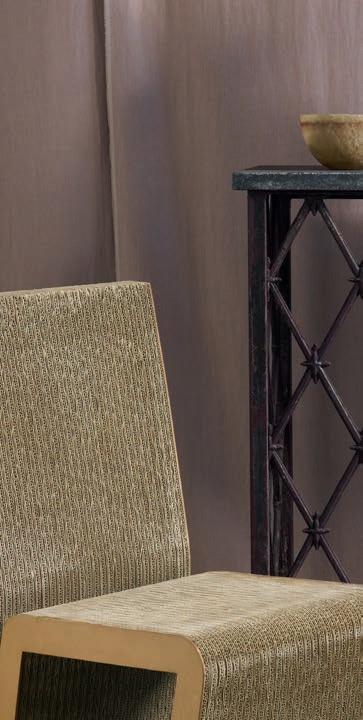
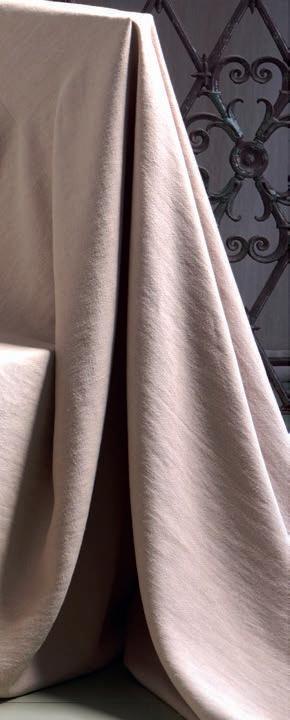
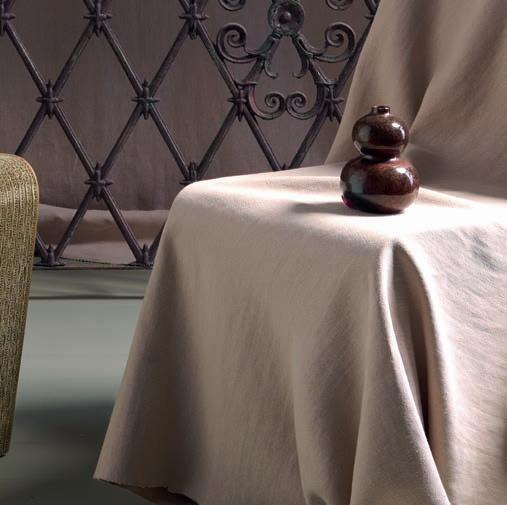





ANTIQUES, DESIGN & ART FOR INTERIOR DECORATION FREE ENTRY FROM 4PM DAILY. DECORATIVEFAIR.COM FAIR THE DECORATIVE BATTERSEA PARK LONDON AUTUMN 3-8 OCTOBER 2023
A ROUND the HOUSES
Reeman Dansie, Colchester
A bronze gure of Mercury sold for multiple times its top estimate when it fetched £550,000 –setting a record for the Essex auction house.
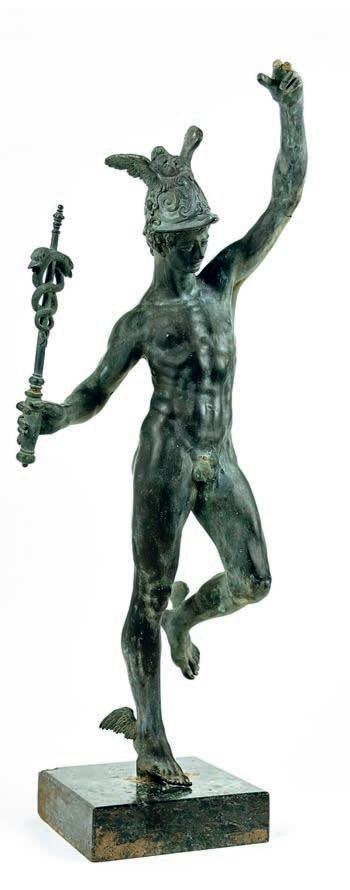
e 58cm (2ft) tall bronze had been owned by Harold Taylor, a former headmaster of Cheam School, Berkshire and, thought to be a Grand Tour piece, attracted an estimate of £250-£350.
But after specialists identi ed it as the work of the Flemish sculptor Caspar von Turkelsteyn (1579- c.1648), who cast bronzes for the court of the Archduke Albrecht of Brunswick in Brussels, it sparked a erce bidding war.
e selling price, including buyer’s premium, of £698,500 beat Reeman Dansie’s previous record set in 2019 when it sold e Murillo Velarde map of the Philippines for £260,000. Reeman Dansie’s director, Jonathan Benson, who called the sale a career high, said: “It was a great thrill to sell it, I must admit.”
Roseberys, London
icture of a beach scene by the British artist Beatrice Rozenberg 913-1995) who, fearing gender discrimination, also painted under the male pseudonym ofBenedict Davies sold for more than 10 times s top estimate at the London auctioneer’s sale on September 12. e oil on canvas had been expected to make £300-£500 but tched £5,200, re ecting the recent market upturn for works by “undiscovered” women artists
Canterbury Auction Galleries
A late 19th-century ship’s clock designed to strike the ‘dog watches’ more than doubled its estimate at the Kent auction house when it sold for £3,900.
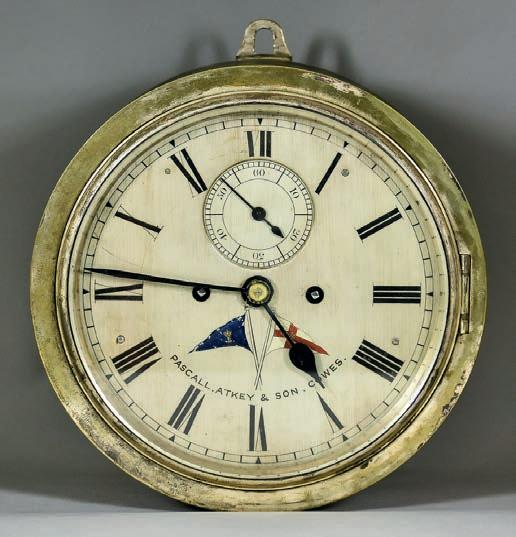
Dog watches refer to the two two-hour shifts kept by sailors from 4-6pm and 6-8pm. e stints are half the length of the usual fourhour watches (from 8pm to midnight, midnight to 4am, 4am-8am, 8am to midday and midday to 4pm) and designed so the crew would not duplicate the previous day’s shift pattern.
At the same sale a small Japanese cloisonné vase, 10.8cm (4¼in) tall and bought from a charity shop in Surrey for just £2.50, sold for £6,300 after auction specialists spotted the signed work as that of Namikawa Yasuyuki (1845-1927) one of the nest cloisonné artists from the Meiji Period (1868-1912).
e vase was decorated with a cockerel, chicks and birds. Yasuyuki’s achievements in the development of cloisonné enamelware led to his appointment as imperial artist in 1896.

Rozenburg who also painted under hermaiden name Davies xhibited at the Royal Academy Summer Exhibitions in 1935, 1939, 1941 and 1946. Like a number of other artists in the ‘60s she set up a studio in the then down-at-heel Notting Hill, painting a series of local characters including Portobello Road habitués.

AUCTION Sales round up 12 ANTIQUE COLLECTING
The small Japanese cloisonné vase
The rare 19th-century ship’s clock strikes the ‘dog watches’
A work by Beatrice Rozenburg, who painted under a man’s name, sold for £5,200
Several sleepers stunned salerooms this month with a bronze statue, Tudor bible cover and a jardinière all selling for well beyond their estimates
The figure of Mercury set a new auction house record at the Essex saleroom
e Cotswold Auction Company, Cheltenham
An embroidered bible cover, first thought to be a cushion cover from the reign of Queen Elizabeth I, sold for £120,000 after a bidding war in the Cotswolds.

Expected to sell for £3,000£5,000, the needlework in coloured silk features Tudor roses, corn owers, daisies and fruit with eight pairs of blue silk and silver ribbons. Auctioneer Elizabeth Poole described it as “a truly exceptional example of Elizabethan embroidery”.
Chiswick Auctions, London
A 70-lot collection of boxiana, including manuals written by several well-known Georgian bareknuckle ghters, sold for £80,000 at the West London auctioneer’s recent sale.
It was amassed by London collectors Brian and Debbie Watkins over ve decades and included Boxing Reviewed; or, the Science of Manual Defence, displayed on Rational Principles by the “gentleman jaw breaker” Birmingham pugilist omas Fewtrell. Expected to make £1,200-£1,800 the book, possibly the rst written by an active pugilist, made £5,300. e author was a friend of the prize ghter Daniel Mendoza (1764-1836) whose autobiography took £13,300, against an estimate £4,000-£6,000.

Dreweatts, Donnington Park
A portrait by the British artist Harrington Mann (1864-1937) set a world record for the artist when it sold for £85,200, against a pre-sale estimate of £5,000-£8,000, at the Berkshire auction house.
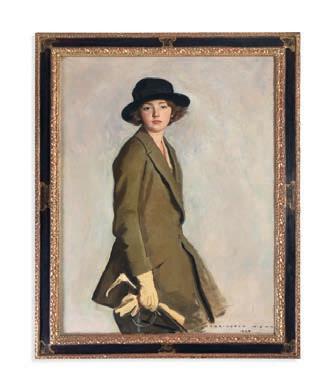
Portrait of a Lady with a Riding Crop had been in the collection of interior designer and former Bond girl Anouska Hempel and part of the contents sale of her home – the Grade II-listed manor, Shaw House, just east of Bradford-on-Avon near Bath.
e sought-after work, which had hung in the ante room at Shaw House, was thought to feature the artist’s daughter, Cathleen Mann. e portrait sparked a bidding frenzy before nally selling to a UK buyer.
Mann was a Scottish portrait and decorative artist and, in the 1880s, a member of the famous Glasgow Boys.
Bidding on the 22cm wide piece, described as “Arita style”, started at just £30, before taking another 170 bids until the hammer came down
Despite international bidding, it sold to a private English collector for a hammer price of£80,000, plus fees.
Arita ware is a broad term for Japanese porcelain made in the area aroundthe town of Arita.
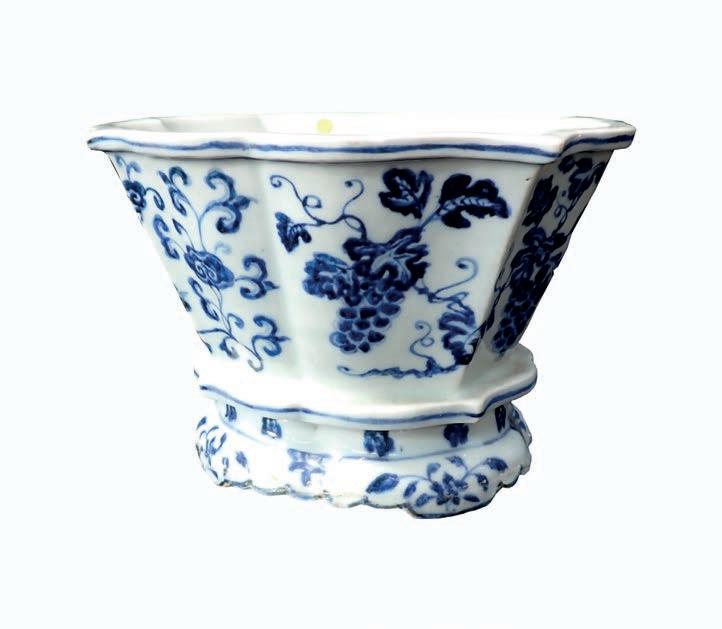
fruiting vinedecoration was more Chinese Ming .
Sworders, Stansted Mount tchet
A 19th-century carved and painted wooden trade sign in the form of a bust of Robert Burns, expected to make £1,500-£2,500, sold for £3,500 at the Essex auctioneer’s September 5 sale.
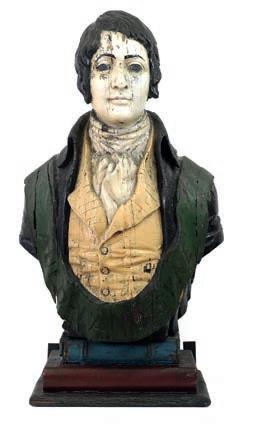
It came from the 71-lot collection of the late Cheshire-based specialist Malcolm Frazer, one of the foremost dealers of the north of England and the former owner of Malcolm Frazer Antiques in Stockport.
While dealing in ne and decorative furniture and artwork his true passion was marine and scienti c antiques.
At the same sale a Victorian threeseater country house sofa, also from the collection of Malcolm Frazer, expected to fetch £500-£700, sold for £3,800.
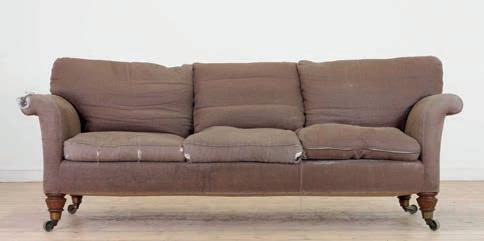
ANTIQUE COLLECTING 13
The Tudor embroidery was thought to have been a cushion cover
A selection of Georgian boxing manuals which sold for a combined total of £80,000
The portrait set a world auction record for the artist Harrington Mann
The unusual wooden trade sign is in the form of a bust of Robert Burns
The country house sofa sold for more than seven times its low estimate
The jardinière was expected to make £50-£100 but sold for £80,000 in Dorset
AUCTION Sales round up
Che ns, Cambridge
A rare Omega watch –known as the Speedmaster ‘PreMoon Ed White’ beat its low pre-sale estimate of £7,000 in the East Anglian auction house’s recent sale when it fetched £9,000.
e watch was named in tribute to the astronaut Ed White after he strapped a reference 105.003 to the outside of his space suit in June 1965, in the rst space walk by an American.
e watch was only produced from 1963-1969 with the earlier models known as ‘Pre Moon’ Speedmasters.
Omega has enjoyed a long association with space exploration. In 1962, astronaut Wally Schirra took his Omega Speedmaster into space on NASA’s Mercury Sigma 7 mission and, in 1969, two Speedmasters landed on the Moon, worn by Neil Armstrong and Buzz Aldrin. e ‘Pre-Moon Ed White’ sold to a private buyer from Germany.
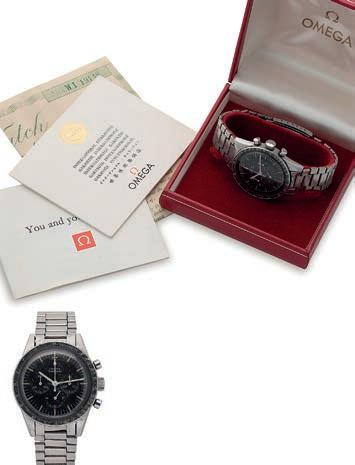
Elstob Auctioneers, Ripon
A sword that saw action in the famed Charge of the Light Brigade almost quadrupled its low estimate when it sold for £1,900 at the Yorkshire auctioneer’s recent sale. Measuring just over 1m (3ft), the sword was carried by Lieutenant John Chadwick, a troop leader who battled Russian forces during the Battle of Balaclava, in the Crimean War on October 25, 1854.
Regarded as one of the most infamous days in British military history, the battle lasted only 20 minutes but resulted in the deaths of 110 British soldiers with a further 161 wounded. e near-suicidal action of the charge was immortalised in Alfred Tennyson’s famous poem, depicting the plight of the 600-strong cavalry who rode into the ‘Valley of Death’ which was published six weeks after the event.
e sword was consigned for sale by the descendants of Lieutenant Chadwick.
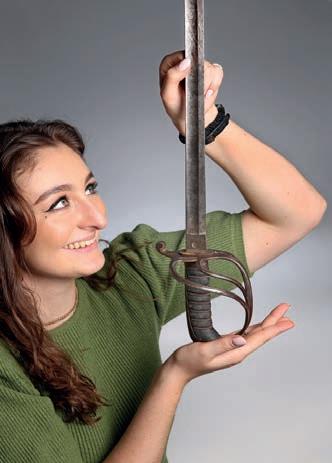
Ewbank’s, Woking
A collection of 44 lms posters advertising the popular Carry On series sold for a total of £12,600 at the Surrey auctioneers with the top seller being a British Quad poster for the 1963 caper Carry On Cabby.
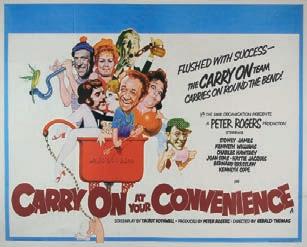

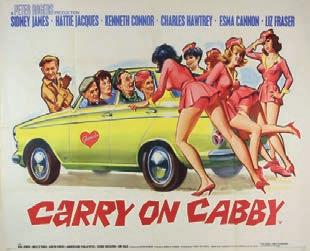
e poster sold for £2,210 against a pre-sale guide price of £700-£1,000.
Like most of the posters in the sale it was designed by Tom Chantrell (1916-2001), the son of a circus performer, who became arguably the most celebrated of 20th-century British lm poster artists.
Tennants, Leyburn
A lifetime collection of 1950s clothes sold for £8,280 at the North Yorkshire auction, with a group of original American men’s out ts selling for £750, against an estimate of £120-£180. e wardrobe had been put together by the late Peter Leathers, a fashion designer, jewellery maker and guitarist from West Yorkshire, devoted to the era. Keen to collect authentic pieces, he purchased much of his menswear collection from old ‘Mom & Pop’ shops, or from estate sales.

At the same sale an eye-catching 1970s crocheted top-and-shorts set in orange, red and blue, and a purple tank top – both made by the French designer Yves Saint Laurent’s ready-to-wear label, Rive Gauche – sold for a well put together £900.

14 ANTIQUE COLLECTING
Eltob’s Julia Matyear with the ‘Charge of the Light Brigade’ sword
The watch is named after the American astronaut who wore it on the first space walk
The collection included original American menswear from the 1950s
A pair of crocheted outfits by the French maker Yves Saint Laurent sold for £900
On Cabby
Carry On Spying sold for £1,690 more than three times its low pre-sale estimate of £500
The poster sold for £235, beating its guide price of £70-£100, in Woking A poster advertising the 1963 caper Carry
was the sale’s top seller
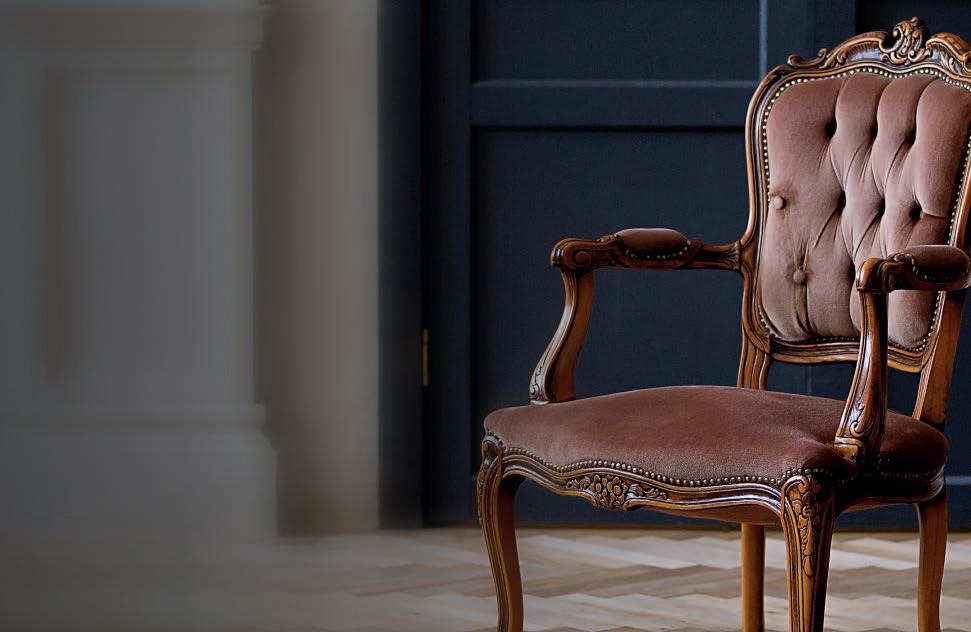

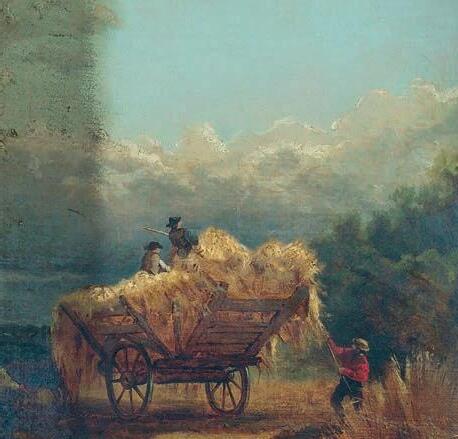

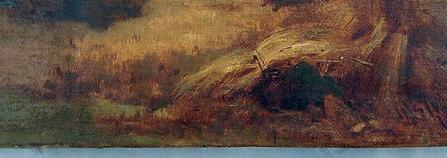
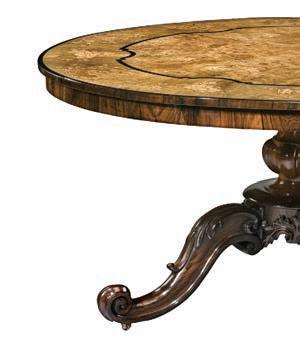
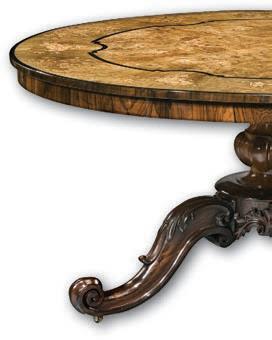


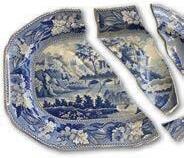






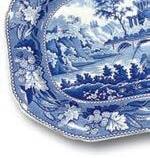






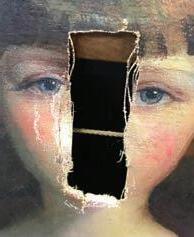
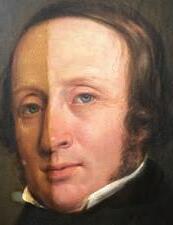





ANTIQUE COLLECTING 15 Treasures like yours belong on eBay List your art & antiques in our new collectables category. For more information, scan the QR code Amy Kent Senior Category Manager, Art & Antiques UKCollectables@ebay.com fineart-restoration.co.uk ati n i e e ti n an e i er er i e erien e n er at r , in u in a re ite nta t u f r ur free n iti n a rai a n er ati n f fine art, furniture an e rati e e t
COLLECTING GUIDES Chinese ceramics: Song dynasty
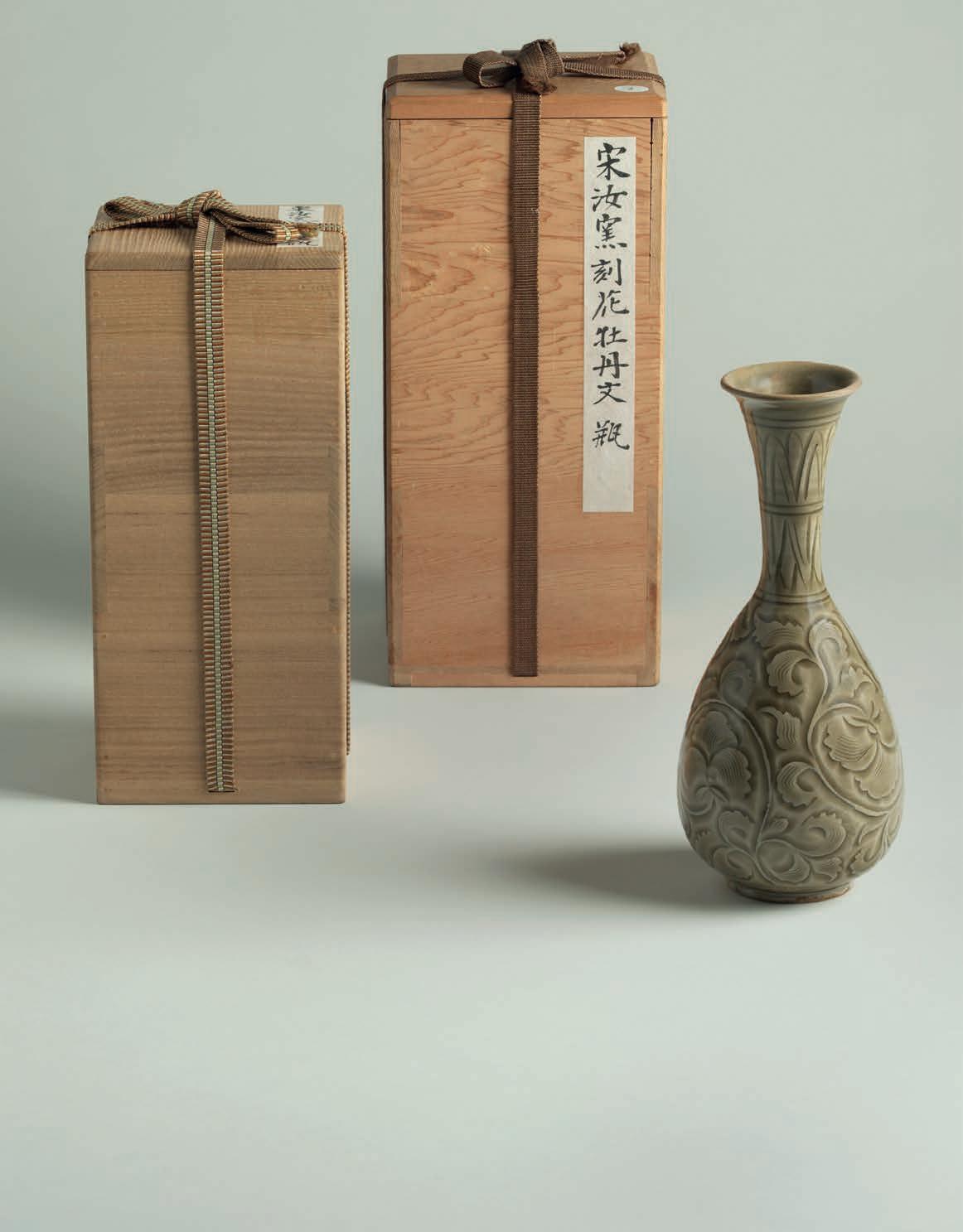
Celadon-glazed stoneware bottle, Northern Song dynasty, 11th or early 12th century Yaozhou kilns, Shaanxi province, height 22.2cm, all images unless otherwise stated courtesy of Eskenazi
Going for a Song
Song ceramics embody balance, harmony and understated beauty, making them highly sought after by collectors and connoisseurs. Antique Collecting goes behind the scenes at a new exhibition
16 ANTIQUE
COLLECTING
It may have only lasted in China for just over 300 years from the 10th to 13th century, but the Song reign was responsible for some of the nest and most sought-after ceramics in the world – with even shards from one of its most famous kilns selling for thousands.
e reign began on February 4, 960, when the military leader later Zhao Kuangyin became the rst emperor of the Song dynasty. It lasted until 1279 when a powerful Mongol army led by Kublai Khan established the Yuan Dynasty throughout China.
During the period the country’s government became the rst to issue paper money on a national scale, its scientists identi ed the concept of “magnetic north” and military leaders were the rst in the world to use gunpowder. e economy ourished as agriculture expanded into new crops of tea and soybeans.
e rst half of era, (the Northern Song) saw the capital located at Bianliang (modern Kaifeng). But in 1127, when the Jurchen, a semi-nomadic people from northeast Asia, captured the capital (founding their own Jin dynasty in the north) the Song court reestablished itself in the south in Hangzhou, where it continued to rule for another 150 years as the Southern Song dynasty untl 1279.
Ceramic tradition
Ceramics were the supreme expression of the decorative arts of the Song period.
High- red stone wares – the principal type of ceramics of the era –had, by then, been made for some two thousand years, but it was only in the Song dynasty that the material’s physical qualities and aesthetic appeal were fully realised.
Technical kiln advances allowed ceramics to achieve the same evenness of both colour and texture previously only achieved by polished metals and minerals, such as jade.
Cultural pursuits
e Song dynasty was also one of the most culturally rich periods in Chinese history, and one in which the ‘four arts of life’ — ower arranging, painting appreciation, incense burning and tea brewing – were regarded as fashionable pastimes, with the popularity of tea founded on its use as a stimulant in Buddhist meditation.
Song’s founding father, Emperor Zhao Kuangyin, was a passionate tea lover and even set up a tea authority at court. Fashions in tea consumption played a crucial
Right Glazed slipdecorated ‘cat and butter y’ stoneware pillow, Northern Song, Jin dynasty, 12th to 13th century. Cizhou kiln, probably Guantai, Hebei province, height 18.4cm, width 31cm. All images unless otherwise stated courtesy of Eskenazi, London

Below Black-grey-glazed haikatsugi stoneware tea bowl and motherof-pearl inlaid lacquer stand. e bowl is Southern Song dynasty (1127-1279). Jian kilns, Fujian province, diameter 12.8cm. e later stand is Yuan dynasty (1279-1368), maximum diameter 16.7cm
Cizhou kilns
The exception to the Song’s monochrome wares were those produced at numermous kilns in Cizhou in the north. Makers drew on Chinese ink painting and calligraphy to create engraved or painted motifs in black or sepia or, occasionally, turquoise background on a white surface.
Black slip was applied over white slip and then part of the black slip was cut away leaving the design in reserve. One of the most adept kilns was at the site of Guantai.
The technique was an extremely labour-intensive method so was only used on finer pieces such as hard pillows, vases, bottles, and other high-end vessels.
Animals and birds were typical decorative motifs as well as folk tales and popular songs.
The combination of a cat and a butterfly, as in the pillow above, is a design signifying the auspicious wish for longevity.
role in shaping ceramic styles. Song society had strict requirements for the techniques and tools used in the ritual. At the time the fashion was to whisk the tea, which inspired a fashion for a black glaze which best highlighted the whiteness of the teas’ froth, while the thick, heavy bowl keeps the tea at ideal temperature.
e rise in the production of tea bowls during the 11th and 12th centuries became so intense that some of the hundreds of kilns producing ceramics in China at this time, such as the Jian kilns in Fujian Province in the southeast, specialised only in tea bowls.
Bowls produced at the Jian kilns are characterised by black or brown glazes that show dramatic patterns such as the aptly named “hare’s-fur” design. Such e ects were created by manipulating the amount of iron-oxide in the glaze. During ring, the excess iron segregates itself from the glaze compound thereby creating patterns such as the
Right Glazed stoneware uted bowl. Northern Song dynasty, 11th to 12th century, northern black ware, possibly Cizhou kilns, maximum width 14.7cm, height 8.5cm
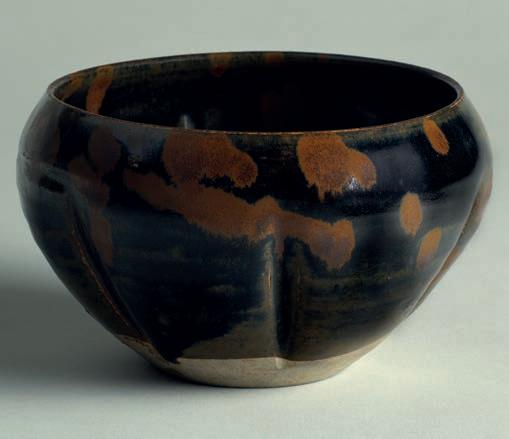
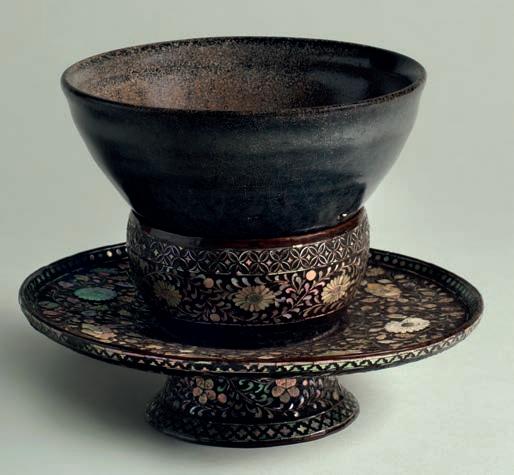
‘Fashions in tea consumption played a crucial role in shaping ceramic styles. In the Song dynasty the fashion was to whisk the tea, sparking a trend for black glaze which best highlighted the whiteness of the teas’ froth’
ANTIQUE COLLECTING 17
COLLECTING GUIDES Chinese ceramics: Song dynasty
suggesting the Guan kiln was the o cial kiln that only produced ne porcelains for the royal family.
e most popular glaze colour attributed to the kiln is usually pale grey-green. e upper rim is often purplish in colour because of the use of a thinner glaze, with the lower rim more dark red in colour. Because of this the saying “purple mouth and iron foot” was a characteristic of many Guan porcelains.
Ge kilns
Scholars are uncertain of the Ge kilns’ exact location due to a general lack of documentation from the Song era. Some texts do, however, mention a pottery called which literally means “elder brother” and it most appears to resemble the Guan wares. But the crackle in the wares was not the like the “claw marks of crabs in the sand” characteristic of Guan wares; instead they more resembled “ sh eggs” in pattern.
e Song Imperial kilns were in two main locations: at the former capital city of Bianjing (present day Kaifeng city) during the Northern Song dynasty, and later at the city of Hangzhou in the Southern Song dynasty after the regime moved southward.
e ve kilns were famous for producing Chinese ceramic during the Song dynasty. ey are respectively: Ru kiln, Guan kiln, Ge kiln, Jun kiln, and Ding kiln.
Ru kiln
Of all ve kilns Ru ware is the most rare. Located in ancient Ruzhou (now in Henan Province), Ru ware was reserved for the imperial court. All its porcelains were featured with a delicate and neat body glaze called “like jade, non-jade but better than jade.”
Today, there are only around 70 pieces of known Ru ware in private collections and museums — and it very rarely appears on the market attracting seven- gure sums when it does.
Noted for its distinct bluey-green-coloured glaze, and for being mostly free from any decoration. e production of Ru ware was brought to an abrupt end around 1127 when the area containing the kilns was invaded by the neighbouring Jin dynasty armies. Such has been the veneration for imperial Ru wares, that they have continuously been treasured since the time of their production in the late 11th-early 12th century to the present day.
Guan kiln
Guan wares have a distinctive crackle glaze known in Chinese as jinsitiexian, meaning gold oss and iron thread, which refers to the two sets of lines visible in the glaze — one ner and golden in tone and the other darker and thicker. e word ‘Guan’ in Chinese means government,
Top left Large glazed carved porcellaneous stoneware bowl. Northern Song dynasty, 11th to 12th century. Ding kilns, Hebei province, diameter 23.2cm
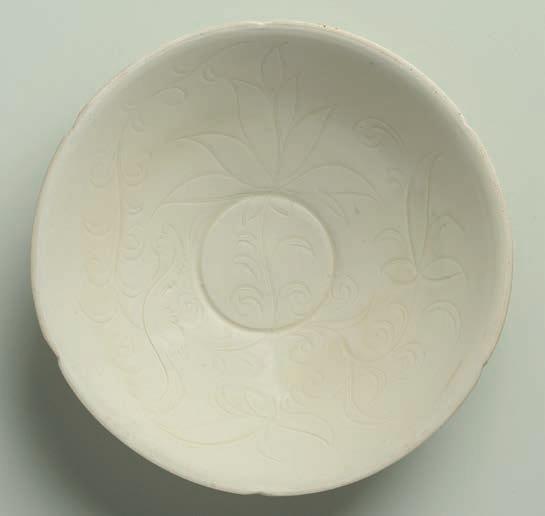
Above left Large glazed carved porcellaneous stoneware bowl. Northern Song dynasty, 11th to 12th century. Ding kilns, Hebei province

Above Palace portrait of Emperor Huizong founder of the Song dynasty (r. 1100–1125) on a hanging scroll, kept in the National Palace Museum, Taipei, Taiwan, image public domain
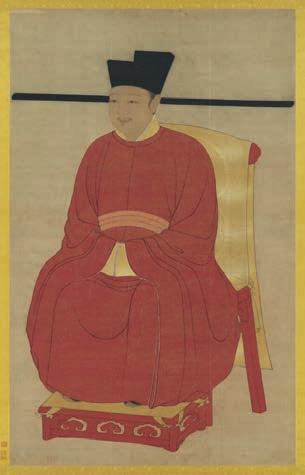
Right Emperor Huizong (r. 1100–1125) painting of a small outdoor Chinese banquet hosted by the emperor for scholaro cials from the Song dynasty (960-1279), image public domain
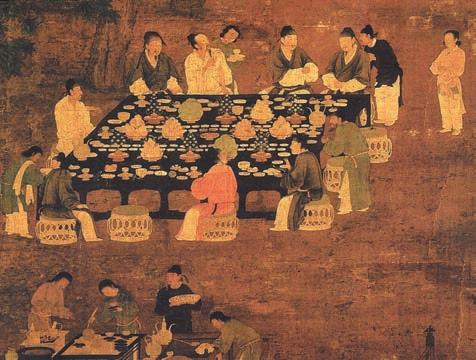
Glazes often covered the network of cracks and were usually pale blue, moon-coloured white, grey, or greenish yellow. Ge ware also includes a variety of pieces used by the general Chinese population, including stoves, dishes and tri-pod cauldrons.
Ding kilns
Considered one of the classic wares of the Song, Ding ceramics were produced from around the ninth century, with the period between the 11th to 12th centuries representing the height of production. While the Ding kilns were not o cial Imperial kilns, they were major suppliers of porcelain to o cials and to the court during the Song dynasty. Ding kilns were famous for its incised oral designs on high- red, grey-bodied ware covered over with ivory-white slips and clear glazes.
In the early Song dynasty, the composition of carved owers (generally lotuses) was simple and incised by hand, probably with a sharp-tipped bamboo implement. In the middle and late Song, the carving was of di erent depths lending a three-dimensional feel. emes extended to ducks, birds, clouds, and dragons in a symmetrical style. Black or brown glazes were also produced alongside the white wares and are very rare.
18 ANTIQUE COLLECTING
have a very clear blue glaze the Chinese call it you. When the Jun glaze is pale whitish-blue, it is called “moon-white”. e glaze is a result of straw ash in the glaze producing “splashes” of purple on blue, sometimes appearing as though random, though they are usually planned.
While oral patterns were the fashionable decorations at the time, Jun ware produced vessels in the shape of owers, rather than use them as a decorative motif. e kiln produced vessels such as ower pots, cauldrons, and writing-brush basins all modelled after ancient bronze vessels used for rituals.
Chinese Ceramics, Lacquer and Gold from the 12th to 14th Century is on at Eskenazi Ltd, 10 Cli ord Street, London W1S 2LJ from October 19 to November 4 as part of Asian Art London, for more details go to www.eskenazi.co.uk
Song celadon
Among other glazes, the Song dynasty is renowned for its greenish celedon ware, prized for its similarity to jade. Adding to celadon’s popularity among its users was a widely believed superstition that dishes made from it would break, or change colour, if poisoned food were put on it.
The glaze is achieved by applying an iron-rich liquefied clay ‘slip’ to the ceramic before it is fired. During the heating process, the iron oxidises to leave a delicate and lustrous green coating.
Circular gold dish, Song dynasty, 960-1279, diameter 13.5cm Celadon-glazed stoneware bottle, Northern Song dynasty, 11th or early 12th century, Yaozhou kilns, Shaanxi province, height 22.2cm
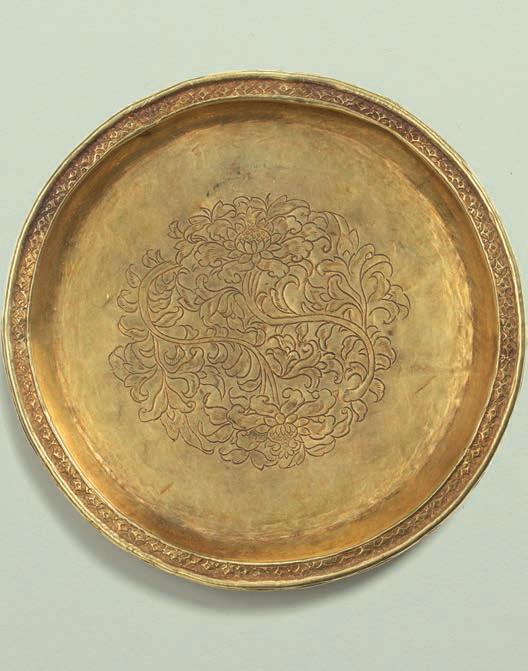
Below Tea bowl with ‘hare’s-fur’ decoration, 11th–12th century, image courtesy of the Metropolitan Museum of Art
While the technique originated in China during the Shang (1600-1046 BC) and Zhou (1046-256 BC) dynasties, it was only in the Song period that it reached great heights.
In the south it was the Longquan kilns in Zhejiang province which produced the best celadon, while it was the Yaozhou kilns which produced the finest pieces in the north.
But while Yaozhou celadon was known for the unmatched quality of its shape and glaze, it never ranked among the five great ceramic kilns of the Song dynasty, and is often just referred to as “northern celadon ware”.
During the Northern Song period (960-1127), most of the output of the Yaozhou kilns was made up of table ware including bowls, dishes, jars, ewers and vases. Decoration developed from animals and flora, including egrets and peonies, into more complex symmetrical patterns.
Longquan celadon

Named after the market town where it was traded, Longquan celadon achieved its zenith in the middle and later Southern Song dynasty (1127-1279).
This was most likely due to the influence of the refined tastes of members of the elite, who accompanied the new Southern Song court when it settled at Hangzhou.
Initially, during the Northern Song dynasty, Longquan ware was covered in celadon glazes ranging in colour from faint yellowish-green to a dark olive tone, before evolving to adopt pastel and sea-green shades by the time of the Southern Song period.
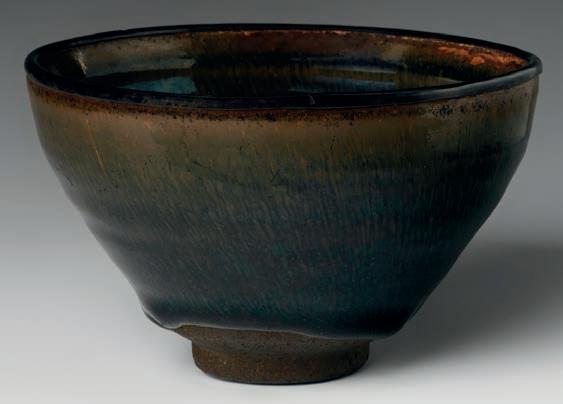
New shapes and styles of decoration were also introduced, and pieces of an impressively large size began to be produced.
Of the many kilns active in the region, among the most famous were those in the village of Dayao known for their thick application in separate layers. The kiln stayed in production into the Ming dynasty (1368-1644).
The exquisite craftsmanship of Longquan celadon has been prized by collectors both eastern and western for many centuries.
ANTIQUE COLLECTING 19
‘Such has been the veneration for imperial Ru wares, that they have continuously been treasured since the time of their production in the late 11th-early 12th century to the present day’
Waxing lyrical
Afew weeks ago I was approached by the family of one of my father’s old clients to see if I would like to re-acquire a piece they had inherited which he had bought some 40 years ago. After an exchange of e-mails they hired a van to transport the piece to me here in Witney and it was just like seeing a dear old friend after many years of silence.
At the time we were working hard on our stand for an upcoming antiques fair, so it is only recently I’ve had the time to really look at this piece of what is pure Regency poetry.
e console was in a somewhat unloved condition and needed a good clean. e original Breccia d’Aleppo marble top was still there and in excellent condition. e name refers to a type of marble with a red ground rich in pale grey and coloured fragments.
Above For David seeing the magni cent console table with its striking ormolu mounts was like being reunited with a dear old friend
Above right Hope’s 1807 work Household Furniture and Interior Decoration, has a design for a similar console table on plate 15
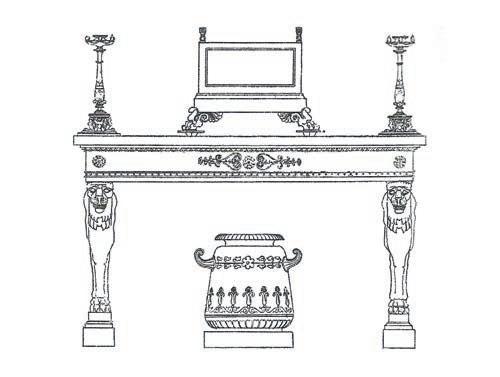
Left e original Breccia d’Aleppo marble top was in excellent condition
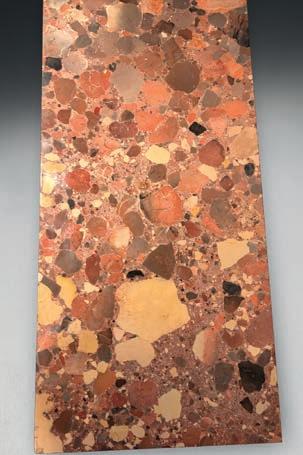


Right e gilding looked to be mostly original – if worn in places
omas Hope
e early years of the 19th century are often associated with the designs of Dutch-British maker omas Hope (1769-1831) and George Smith (1786-1826), the latter having published three in uential books on design in the rst quarter of the 19th century.
His A Collection of Designs for Household Furniture and Interior Decoration, published in 1808, adapted classical Egyptian, Greek and Roman motifs as well as adapting gothic and Chinese elements. But it is in Hope’s 1807 work, Household Furniture and Interior Decoration, where we see a design for a console on plate 15 of which our table is clearly a derivative. Hope was a major exponent of the Regency style of English decorative arts.
Gold leaf
e frame which the marble sits on is rosewood veneered, as is the frame surrounding the mirrored back. e carved gilt front supports, however, are nished in simulated rosewood – almost certainly due to the problems and cost of carving a solid piece of rosewood in these dimensions. e weight of the heavy rosewood at the front may have made a table like this unstable.
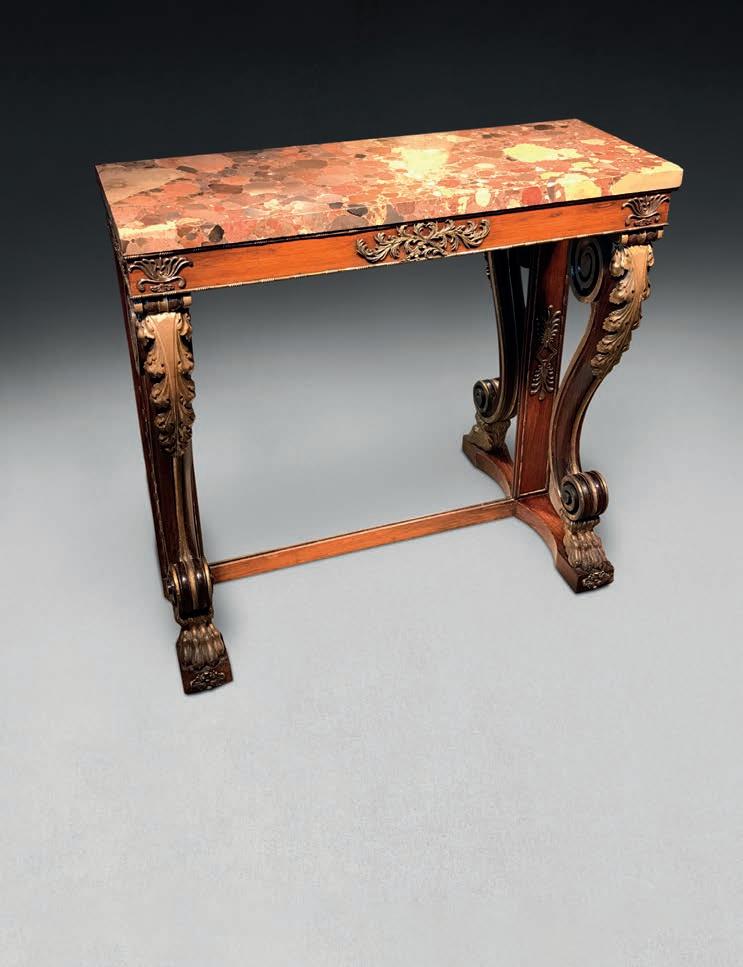
e gilding – in gold leaf as opposed to the cheaper oil gilding method – looks to be mostly original, if worn in places, showing the bole which is a rich-coloured clay, mixed with water and small amount of glue that acts as a gilding ground.
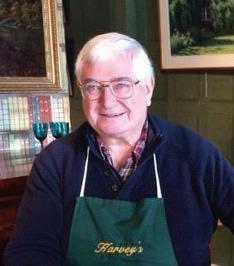
It is most apparent on the sides of the scrolls where the overlap between the pieces of gold leaf used shows strongly, adjacent to the simulated rosewood grain.

20 ANTIQUE COLLECTING EXPERT COMMENT David Harvey
After a bit of spit and polish, David Harvey is reunited with an old friend in the shape of a magni cent Regency console
Ormolu mounts
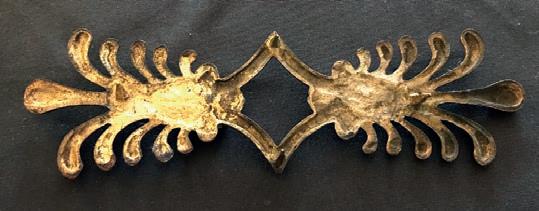
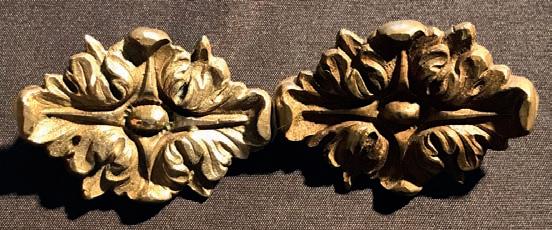
At this point I decided to remove some of the ormolu mounts, cleaning most of the dirt from them with a soft toothbrush and a little warm soapy water. It was a satisfying process, especially when rubbing with a soft cloth returned a great deal of the original sparkle. It was clear from the marks behind the wood that the mounts had never been prised away from the frame.
Slow process
e mounts were in pairs, with the central mount design repeated on the sides of the console. is gave me the opportunity to compare the front mount, which cleaned well, with this side example which I am yet to attempt.
e di erence surprised all of us and demonstrated what can be achieved with a little tender, loving care. e watch word is always slowly, slowly. Take it one step at a time and don’t rush the cleaning – it will still be there tomorrow.
Right e comparison shows what a little elbow grease can do
Left From the marks it was clear the mounts had never been removed
Below right e back of the mount is bright as a button
Below left Cleaning the mounts gave great results
Bottom left Powerful feet show the original gilding in situ


Aladdin’s lamp
I couldn’t resist gently removing the mounts from the front blocks to compare a cleaned example with a tarnished and somewhat kicked-about moulding.
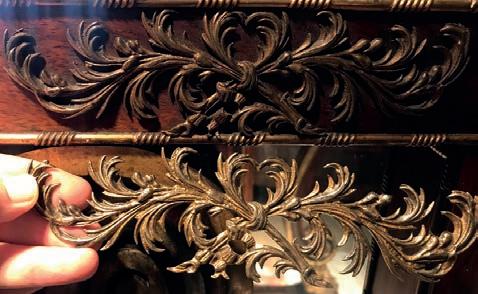
The soapy water treatment and careful rubbing with a soft cloth had the desired effect, yet again. I was reminded of my childhood and the story of Aladdin and the magic lamp which he rescued and gave to his mother.
She rubbed it and rubbed it to clean it until suddenly the second genie appeared. Well, no genies here in Witney but immense satisfaction at seeing a piece come back to life.
Wow factor
Foot and toenails
I would guess that at some time this table has stood in a hall where the owner, coming home at night has placed his keys and loose change on top before removing his coat when his shoes have met the table’s front feet. is picture shows not only the powerful feet and the scroll on the front supports, but also the carefully executed simulated rosewood. It is good to see so much of the original gilding still in situ and I like the carved hairs above the foot and the toenails showing on the feet.
e wear on the lion’s paws is a bit of a giveaway on this but again totally in keeping with the age and use the table has had.
If anyone doubts the wow factor this table would have had when rst made, with its marble top, brightly burnished gilding and sparkling ormolu mounts, then have a look at the back of one of the mounts (above). Here it is clear to see the gold as bright as a button on the unexposed surface as it would have been on all of the mounts.
What must it have been like to walk into a room in the Regency Period to be confronted with this shining and exuberant table. It has been a wonderful voyage of discovery both buying and slowly conserving this magni cent console table. We have only just begun the process with more to do, but all the most important parts are present and in a condition one would hope to nd on a 200-year-old table.
David Harvey is the owner of Witney-based W R Harvey & Co. (Antiques) Ltd. For more details go to the website www.wrharvey.com
ANTIQUE COLLECTING 21
‘If anyone doubts the wow factor this table would have had with its marble top, brightly burnished gilding and sparkling ormolu mounts, then look at this image of the back of one of the mounts’
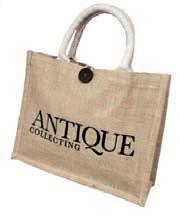

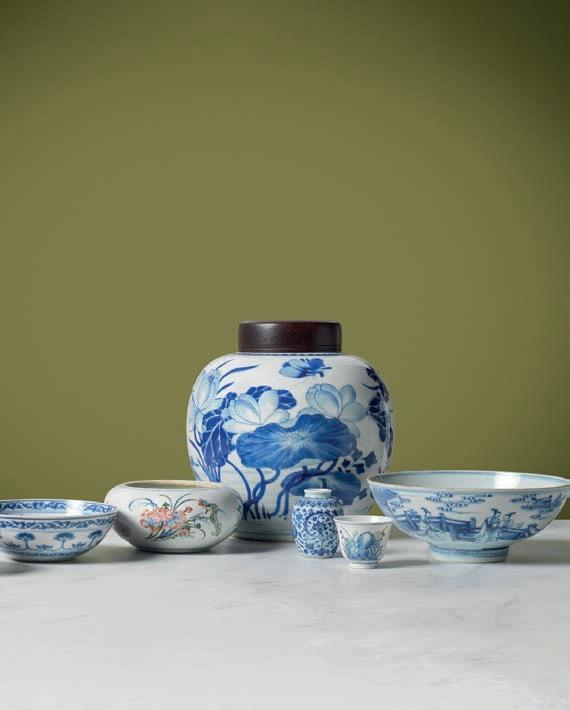



TODAY • SUBSCRIBE TODAY • SUBSCRIBE TODAY • SUBSCRIBE TODAY • SUBSCRIBE TODAY • SUBSCRIBE TODAY TODAY • SUBSCRIBE TODAY • SUBSCRIBE TODAY • SUBSCRIBE TODAY • SUBSCRIBE TODAY • SUBSCRIBE TODAY THE CLIVE & JANE WAINWRIGHT COLLECTION ROCOCO IS BACK IN VOGUE ALSO INSIDE Book offers • London fairs preview • Charles Hanson reveals all ANTIQUE COLLECTING VOL 58 N0.5 OCTOBER 2023 FRESH PAINT From the studio to the saleroom, works by 11 artists go under the hammer OCTOBER 2023 GILDING the LILY Furniture expert David Harvey brings an ornate Regency console back to life With a Song in our hearts Discovering one of the richest periods in Chinese ceramics Button Makers 5 Who broke the mould Inside: HAUNTED HOUSE BEHIND THE SCENES OF A SPOOKY SALE AT AN ESSEX AUCTIONEERS GLAZE OF GLORY THE DESIGNS OF AN UNSUNG FEMALE POTTER ON SALE SAVE 33 PER CENT AND GET 10 ISSUES A YEAR FOR JUST £25* PLUS a FREE BOOK and BAG when you subscribe to Antique Collecting SUBSCRIBE www.antique-collecting.co.uk/subscribe and enter code: ACOCT23 Subscribe today and pay JUST £25 for your rst 10 issues rather than £38. Plus receive a FREE copy of Water Lilies and Bory LatourMarliac, the Genius Behind Monet’s Water Lilies and a jute bag* Each copy is packed with collecting guides and specialist advice. Don’t delay, this o er ends on October 31. e o er applies to new subscribers and new gift subscriptions only. * O er applies to new UK subscribers only 22 ANTIQUE COLLECTING Only £2.50 per issue! THEPERFECT GIFTIDEA Subscribe Now! ANTIQUE COLLECTING MAGAZINE
the gift that lasts all year and save 33 per cent on an annual subscription
receive a free copy of Water Lilies worth £30 and a stylish jute bag
•Give
•Plus

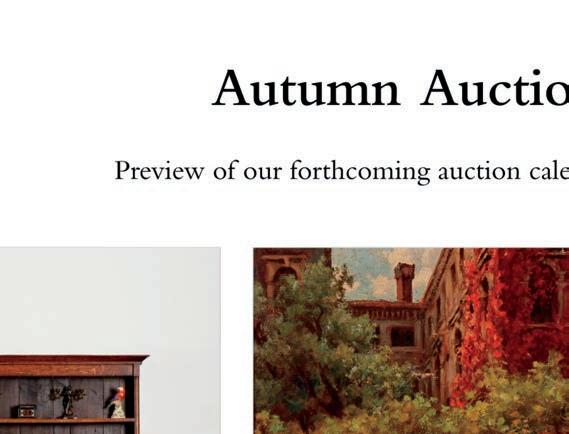

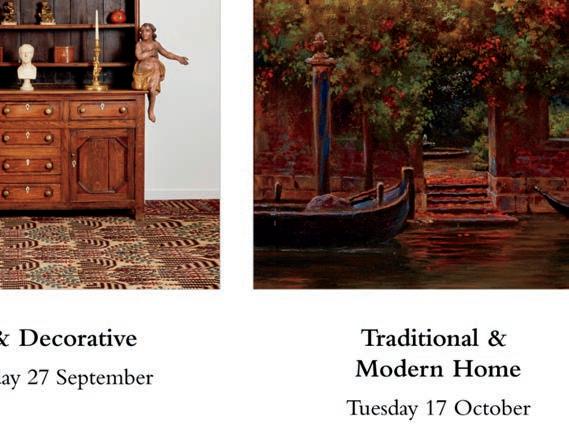
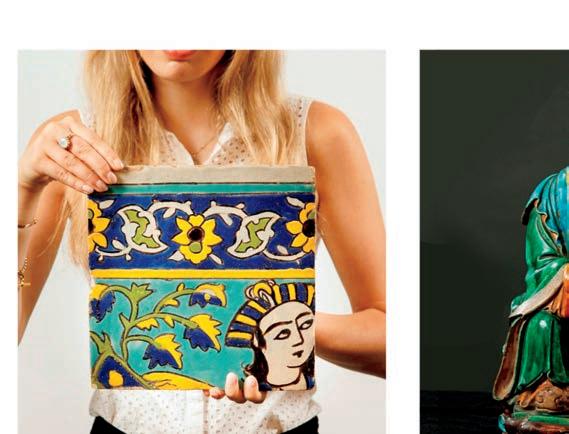

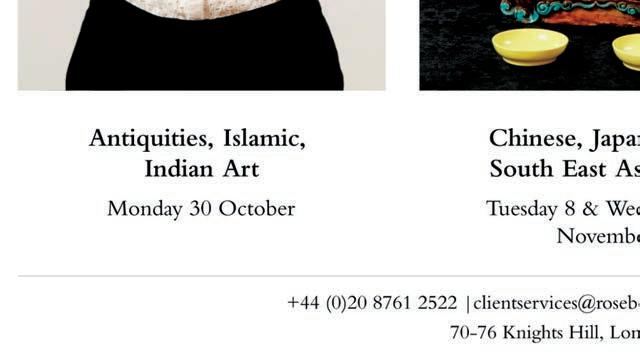
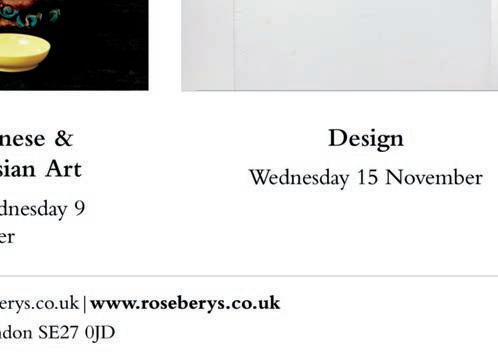
2,000 photographs, 468 hours of recordings, and a 50,000-page archive. Unencumbered by a formal art education Walter’s work found expression in a variety of media from Polaroid lm cartridge boxes to mosquito coil boxes. His was a tortured genius born out of a life-long struggle with mental illness triggered by prejudice and alienation.
Racial identity quite literally haunted Walter, from visions of his white forebears, to unbearable prejudice in Windrush Britain, its presence is felt in his sundrenched landscapes to his brooding depictions of the Scottish countryside.
is month both the Garden Museum in London and the David Zwirner gallery in Hong Kong (both curated by Professor Paca), pay tribute to Walter’s genius.
David Zwirner’s senior director, James Green, said: “In recent years, we’ve also witnessed a signi cant expansion of his market, as his work has been actively sought by collectors around the world.”
Being Frank
Any cruise ship visitor to St John’s, the capital of the small Caribbean island of Antigua, from the 1970s to early ‘90s may have come across Frank Walter.
He was the man keeping shop at his uncle’s hardware store in Market Street, near the harbour, hawking, among other things, hand-coloured photocopied drawings, placards and even wooden ‘L’ signs for learner drivers. With his aristocratic bearing and received pronunciation he may have seemed a benign presence, even eccentric.
Few could have been aware the man behind the counter was, in fact, one of the most complex and visionary chroniclers of the 20th century.
Had it not been for a chance encounter by art historian Professor Barbara Paca in 2003 at the artist’s secluded retreat the world may never have encountered the extraordinary output of Frank Walter.
Paca was amazed by the dizzying enormity of his work – some 5,000 paintings, 1,000 drawings, 600 sculptures,
Early days
Francis Archibald Wentworth Walter, known as Frank Walter, was born in Liberta, in Antigua, in 1926. He died as a recluse living in a self-built house and studio on Bailey’s Hill in 2009.

One of six brothers and sisters, from a young age, Walter’s intellect was apparent to his family, and he quickly gained the admiration and respect of his community securing a place at the, predominantly white, Antigua Grammar School.
Run mostly on British public-school lines, it had started to open up to the island’s growing non-white population, a policy which owed less to fairness, as much as pressure from the Colonial O ce to expand an educated labour force.
It was the rst, but not the last, time Walter would experience injustice due to his skin colour. e confusion was compounded at home where, after his mother died and his father started another family, he was brought up by his grandmother and maiden aunts.
At their apron strings he learnt of his complicated genealogy, the consequences of which would in uence him for the rest of his life. e women told tales of his aristocratic heritage, his noble white birth, claiming his black skin was the result of being “sun-kissed”.
Easy for the young Walter to assume his towering intellect – he excelled in Greek, Latin and modern languages – was due, not just to his own ability, but – as family folk law determined – a lineage stretching back to Charles II.
24 ANTIQUE COLLECTING
Two exhibitions on other sides of the globe show how work by the reclusive Antiguan artist Frank Walter is taking the world by storm, Antique Collecting reports
COLLECTING GUIDE Frank Walter
Above Frank Walter (1926-2009) Man Climbing a Coconut Palm and View of Red Canoe and Boat in Harbour, (undated), oil on cardboard, 40.4 x 52cm. Courtesy Frank Walter family and Kenneth M. Milton Fine Arts, on show at the Garden Museum
German heritage
In fact, Walter was descended from both German slave owners and enslaved people of African descent. Understanding this dichotomy and his complicated genealogy became one of Walter’s obsessions.

Professor Paca said: “Frank Walter was the only person of his generation to know the complex history of his European and African ancestors. He kept it secret out of fear of isolation from his peers. Genealogy meant a great deal to him as later in life he was socially alienated.”
For the rest of his life Walter viewed himself as European, speci cally German, and often identi ed as a white man. His heraldic symbols and self-proclaimed titles, which included 7th Prince of the West Indies, Lord of Follies and the Ding-a-Ding Nook, all referred to properties owned by the Walter family in the 18th century.
In his only published book Sons of Vernon Hill (1987) Walter used the name Franz Waithe, a German rst name and surname from the old Scottish name for Walter, meaning strong warrior.
By 1960, while living in the UK, the hallucinations Walter had been experiencing, partly due to starvation, overwork and mental exhaustion, became worse. On May 6, already obsessed by his links to the British royal family, he saw a vision of Charles II who summoned him to Scotland to protest the marriage of Princess Margaret and Antony Armstrong-Jones (who were also due to honeymoon in Antigua).
The next day he set off from Stoke-on-Trent to Melrose Abbey to claim his right to marry the princess. His 36-hour tour also takes him to Edinburgh, Dalkeith, Jedburgh and Kelso, an experience which stayed with him and provided the inspiration for a series of paintings.
Painted from memory Walter produced a body of intimate and emotive landscapes depicting the colourful meadows of wildflowers and rolling hills of the Scottish countryside.

In these and Walter’s Caribbean landscapes, skies glow in hues of lavender, pink, and red, often layered with flowers and foliage that the artist enlivens with sponge-like brushwork in equally vibrant colour. Professor Paca said: “Through these paintings Walter interprets his homeland, which for interesting personal reasons includes Great Britain and Europe as a sacred idyll, chronicling the harmony of his solitude there with a skilled and sensitive paintbrush.”
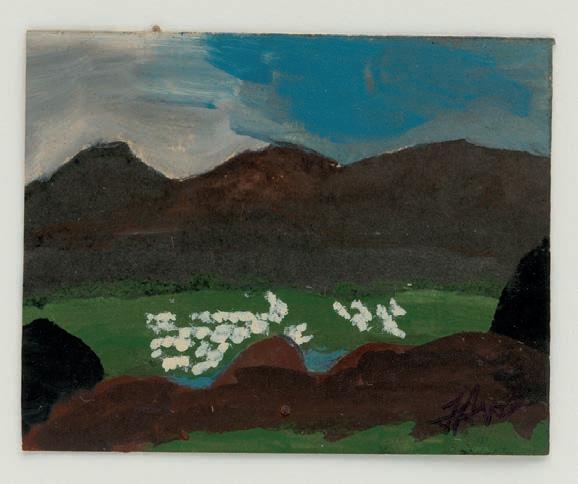 Left Frank Walter (19262009) Antiguan Lady on Green Grass, undated. Courtesy Frank Walter Family and Kenneth M. Milton Fine Arts, on show at the Garden Museum
Right Frank Walter (1926-2009) Untitled (Goat Field), 1984 © Kenneth M. Milton Fine Arts, courtesy Kenneth M. Milton Fine Arts and David Zwirner, on show at David Zwirner, Hong Kong
Below Frank Walter (1926-2009) Untitled (Palm Tree Frond), undated, oil on singleply cardboard, 42.7 x 28.7cm. Courtesy Frank Walter Family and Kenneth M. Milton Fine Arts, on show at the Garden Museum
Left Frank Walter (19262009) Antiguan Lady on Green Grass, undated. Courtesy Frank Walter Family and Kenneth M. Milton Fine Arts, on show at the Garden Museum
Right Frank Walter (1926-2009) Untitled (Goat Field), 1984 © Kenneth M. Milton Fine Arts, courtesy Kenneth M. Milton Fine Arts and David Zwirner, on show at David Zwirner, Hong Kong
Below Frank Walter (1926-2009) Untitled (Palm Tree Frond), undated, oil on singleply cardboard, 42.7 x 28.7cm. Courtesy Frank Walter Family and Kenneth M. Milton Fine Arts, on show at the Garden Museum
ANTIQUE COLLECTING 25
‘Walter left some 5,000 paintings, 1,000 drawings, 600 sculptures, 2,000 photographs, 468 hours of recordings, and a 50,000-page archive as well as his brilliance. Unencumbered by a formal art education his work found expression in a variety of media from Polaroid film cartridge boxes to mosquito coil boxes’
dyer, Walter travelled to Germany to visit the country of his forebears and research his family tree – one branch of the family having come from Markgroningen, near Stuttgart.
Back to the Caribbean
Dogged by material and mental hardship, in 1961 Walter made the decision to return to Antigua – but the island is much changed with tourism, not agriculture, the country’s mainstay. He moved to the nearby island of Dominica where he was assigned a plot of land, which ve years later was withdrawn. In 1967, with the grip of British control slipping, Walter returned to Antigua.
His move to a secluded hilltop studio on Bailey’s Hill, where he stayed until his death in 2009, followed two decades in and around St John’s working for his family’s hardware shop, where he worked on artistic projects at night.
Plantation manager

By the late-1930s in Antigua, despite the growing nonwhite middle class, there were no non-white owners of sugar-producing estates or managers of sugar factories. It wasn’t until 1948 at the age of 22 that Walter became a manager at the Antiguan Sugar Syndicate, being the rst person of colour to secure a management role in the Antiguan sugar industry.
At the time the industry was in severe decline, especially in Antigua, with low wages and poor conditions. With limited resources, Walter modernised the cultivation and processing of sugar, also seeking to reduce social exploitation and racial inequality. In 1953, he turned down the role of managing director instead choosing to embark on a 10-year educational tour of Europe where he could realise his notion of modernisation.
Rampant racism

Walter left Antigua for Europe in the early 1950s, and landing in the UK he soon encountered the racism endured by the Windrush generation. e trip was to prove mentally and physically challenging and so harsh it triggered periods of mental instability which, on occasion, saw him admitted to hospital.
In his unpublished autobiography Walter describes the menial jobs he was forced to take on as an unskilled day labourer in London, Leeds, and Stoke-on-Trent. In an attempt to escape the day-to-day injustices he encountered, Walter retreated into the world of imagination, visiting local libraries, creating an alternate reality linking him to the crowned heads of Europe.
In the autumn of 1956, sacked from his job as a button
Top left Frank Walter (1926-2009) Plantation Fields and Workers, undated, oil on card, 31.8 x 45cm. Courtesy Frank Walter Family and Kenneth M. Milton Fine Arts, on show at the Garden Museum
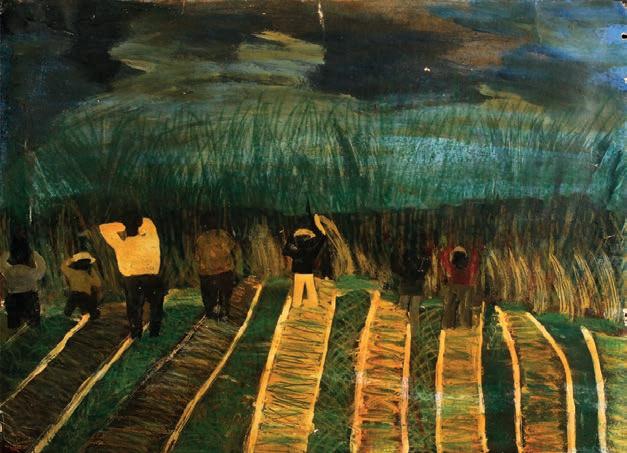
Above Self-portrait with glasses on forehead (undated). Black-andwhite photograph mounted on cardboard, 35 x 27.5cm. Courtesy Frank Walter Family and Kenneth M. Milton Fine Arts, on show at the Garden Museum
Encouraged by his output he approached a number of western organisations from the British Coal Board to the West German youth hostel association, as well as cruise ships to explore the possibility of staging an exhibition.
In the limelight
But artistic acclaim, so dreamed of in his lifetime, only came four years after his death when, in 2014, after a chance meeting with Professor Paca, his work went on show in the Ingleby Gallery in Edinburgh. In 2017, Walter represented Antigua and Barbuda at the 2017 Venice Biennale. Since that time he has had solo exhibitions around the world including America, France and Germany.
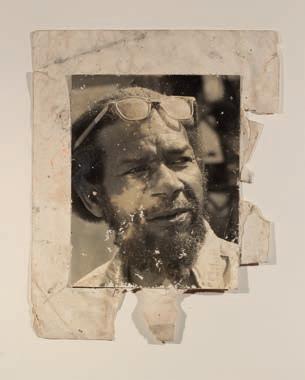
Frank Walter: Artist, Gardener, Radical is on at the Garden Museum, 5 Lambeth Palace Rd, London SE1 7LB, from October 4 to February 24, while Frank Walter Pastorale is on at David Zwirner, 5–6/F, H Queen’s, 80 Queen’s Road, Hong Hong until October 28, marking the rst time Walter’s work has been seen in Asia.
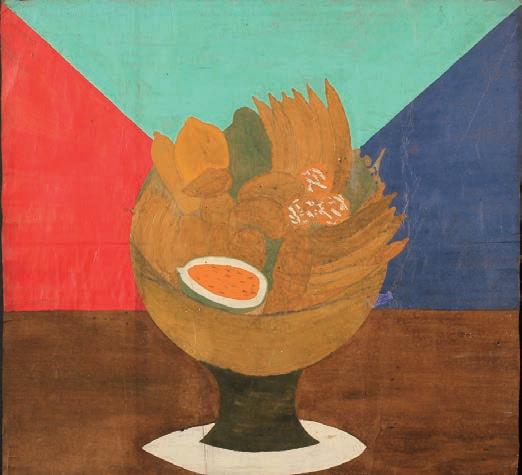
26 ANTIQUE COLLECTING COLLECTING GUIDE Frank Walter
‘By 1960 the hallucinations Walter had been experiencing, part due to starvation, overwork and mental exhaustion, became worse. On May 6, already obsessed by his links to the British royal family, he saw a vision of Charles II who summoned him to Scotland to protest the marriage of Princess Margaret and Antony Armstrong-Jones’
Below Frank Walter (1926-2009) Bowl of Fruit, undated, Courtesy Frank Walter Family and Kenneth M. Milton Fine Arts, on show at the Garden Museum
Frank Walter (19262009) Untitled (Lavender Sky, Burgundy Trees
© Kenneth M. Milton Fine Arts, courtesy Kenneth M. Milton Fine Arts and David Zwirner, on show at David Zwirner, Hong Kong
Right Frank Walter (19262009) Untitled (Strange Woman in Skirt), n.d. © Kenneth M. Milton Fine Arts, courtesy Kenneth M. Milton Fine Arts and David Zwirner, on show at David
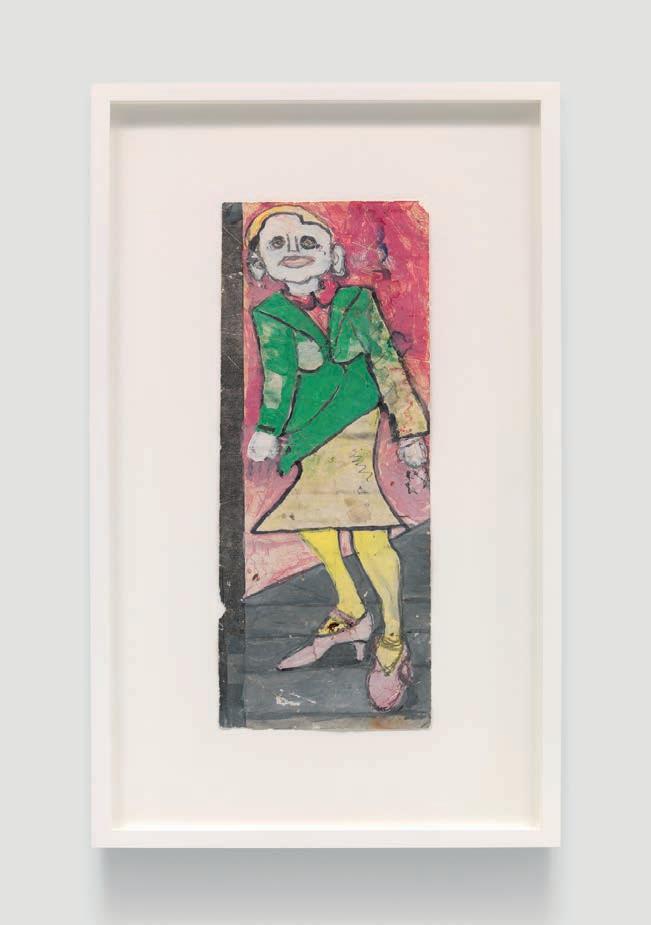
Tree Trunks, a Pink Sky, and a Black-and-White ), n.d. © Kenneth M. Milton Fine Arts, courtesy Kenneth M. Milton Fine Arts and David Zwirner, on show at David Zwirner, Hong Kong
Frank Walter (1926Untitled (Pink and White Flowering Tree
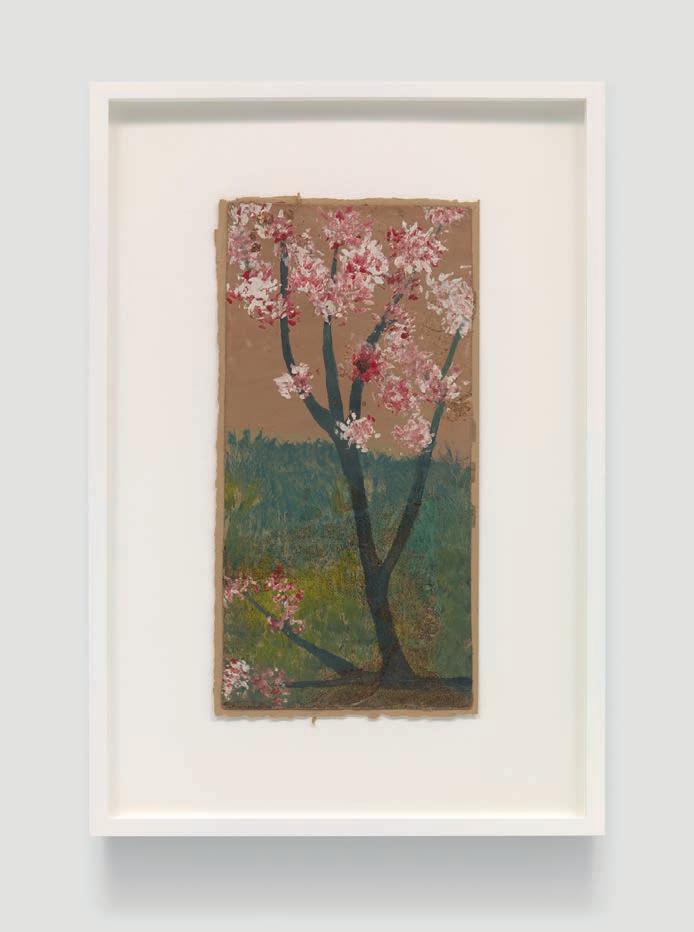
© Kenneth M. Milton Fine Arts, courtesy Kenneth M. Milton Fine Arts and David Zwirner, on show at David Zwirner, Hong Kong
Frank Walter (1926Untitled (Leaning Tree Salmon Sky), n.d.© Kenneth M. Milton Fine Arts, courtesy Kenneth M. Milton Fine Arts and David Zwirner, on show at David Zwirner, Hong Kong



ANTIQUE COLLECTING 27
Meeting THE ARTIST


In 2003, I was invited to La Bohème the actor Jules Walter’s Antiguan retreat. Jules, who is now in his early nineties and continues to cut a dashing silhouette, was surrounded by a fascinating mix of equally attractive cosmopolitan guests of all ages, assembled for a spontaneous gathering. (I later understood this to be a typical Jules party.)
After making sure that his guests had plenty to drink, Jules invited me to climb up the hill to meet his cousin Frank Walter. At the time the hilltop was physically challenging to reach—but more than that, it was intellectually inaccessible.

Jules and I departed from Falmouth’s exotic traveller’s palms, brightly-coloured bougainvillea, goldenseal, and pride of Barbados to a landscape dominated by towering agave underplanted with aloe vera and the occasional treasured canopy of lignum vitae, guinep, and West Indian mahogany trees.

LATIN CONVERSATION
Frank Walter was elegantly clad in a bright orange and royal blue curtain bedecked with owls. As I sat within the fragile wooden walls of his home, I was struck by his posh Englishaccent and refined manner. And as I watched Jules interact (mostly in Latin) with this mysterious relation, I witnessed a fraternal embrace that has remained with me to this day. They were fond of one another.
Above Jules and Frank Walter as Antiguan plantation managers c. 1945 © e Family of Frank Walter and Barbara Paca, on show at David Zwirner, Hong Kong
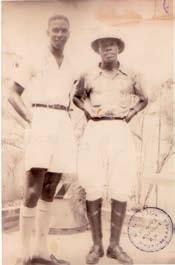
Below Postcard Antigua St. James Club, 1988 © e Family of Frank Walter and Barbara Paca, on show at David Zwirner, Hong Kong
While I listened as they caught up on old times, my eyes fixed on Frank Walter’s interior world, particularly the way in which his sculptures were grouped together with singular paintings thoughtfully placed as theatrical backdrops.
ANOTHER PLANET
The conversation drifted from topic to topic, and eventually we went back outside, walking across a narrow gulley to Walter’s unfinished art studio.
Ascending the flight of poured concrete steps to the platform where he painted was like climbing into a spacecraft about to take off for another planet.
How did Walter build this universe? Who carried the heavy bags of concrete up to this place so far detached from the pettiness of the world below?
The studio was oriented toward the legendary cave of Governor Warner - part of the folklore of Antigua. It is said that in the 17th century the royal governor incarcerated his wife in the cave for her alleged affair with a Carib prince while he was off battling the French.

While listening to Walter recount the story of the governor and his cave, I felt privileged to be his guest in this home where land, sky, and sea merged together. It was almost too much to take in, and I had to ask, “Who are you, great man?”
This accidental meeting changed my life. I have sought to emulate this experience in my own environments and the places I have created for others in the 20 years since.
28 ANTIQUE COLLECTING COLLECTING GUIDE Frank Walter
Top right View of Falmouth Bay from Shirley Heights, Antigua, Shutterstock
‘While I listened as they caught up on old times, my eyes fixed on Frank Walter’s interior world, particularly the way in which his sculptures were grouped together with singular paintings thoughtfully placed as theatrical backdrops’
Professor Barbara Paca, who introduced the work of Frank Walter to the larger world, recalls the day she rst met the reclusive genius
ANTIQUES UNDER THE HAMMER Halloween
Lantern of doom
A metal lantern, believed to have been removed from the scene of one of the most infamous murder of the 19th century is also in the sale. The Red Barn murder took place in the Suffolk village of Polstead in 1827 and soon became the subject of newspaper articles, ballads and even stage plays.
When convicted of the murder of his young fiancée, Maria Marten, whose body was buried in the infamous barn, the local squire William Corder was hanged in Bury St Edmunds, his execution attracting thousands. The lantern came from the vendor’s father who cleared the barn in the 1950s and has a guide price of £50-£100.
TOP of the LOTS
Below e lantern may have illuminated one of the most infamous murders of the 19th century, it has an estimate of £50-£100
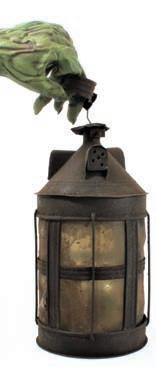
Below right A collection of model skulls depicting the ascent of man has an estimate of £200-£300
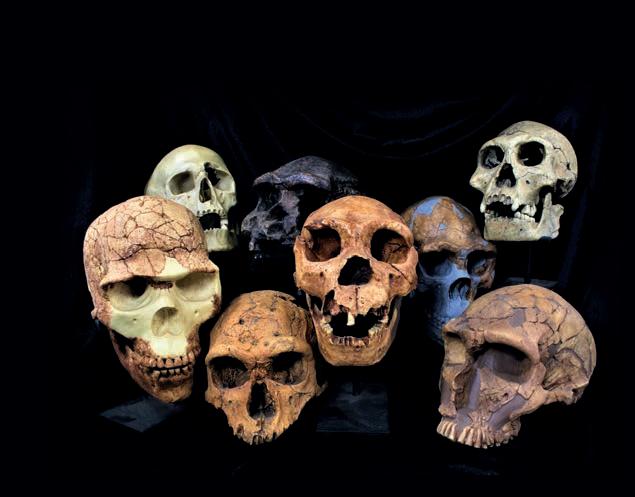
A handwritten note claiming to be by the hand of the serial killer Jack the Ripper is among the highlights of an eerie online Halloween sale in Essex, spookily set to end on October 31.
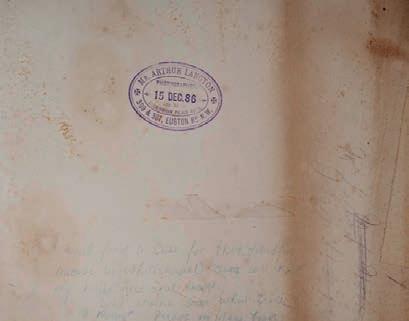
Estimated at £400-£600, the scrawled message on the reverse of a sepia portrait photograph, threatens: “I must find a cure for that dreadful disease in (Whitechapel), and will keep my knife nice and sharp, to strike again when time is right, perhaps in New Year.”
Jonathan Benson, director of the Colchester auctioneers Reeman Dansie behind the sale, said: “The letter has been appraised by experts as a likely fake, but was previously unknown to Ripperologists and poses fresh questions for researchers.”








The unidentified killer murdered five women in London’s Whitechapel in 1888. In the course of the investigation numerous letters were sent to newspapers and Scotland Yard from individuals claiming to be the murderer. In fact the name “Jack the Ripper” originated from one such dated September 28, 1888.
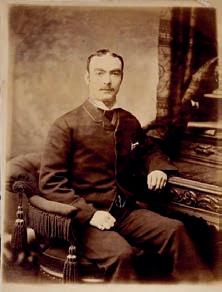
Skull and cross-phone

Elsewhere in the sale a set of model skulls depicting the ascent of man is expected to make £200-£300. Valuer Daniel Wright said: “The skulls are a set of instructional aids demonstrating the development of modern man It may be illegal to sell actual skulls, so this may be the closest that the collectors of macabre can get.”
A 1940s Bakelite telephone, alleged to be able to receive messages from the dead, has an estimate of £40-£60 in the same sale. Wright continued: “We don’t actually know (or believe) that the phone receives messages from the grave, it’s a 1947 model which has been converted for modern usage and any messages from the dead may have been static on the line, or gremlins. But, who knows?”

Apen-and-wash picture of a skull by local artist Colin Moss (1914-2005) who taught at the Ipswich School of Art and counted Brian Eno and Maggi Hambling among his pupils, has an estimate of £100-£150. A similarly dark-themed painting called Black Mass, by the American artistDavid Hill (1914-1977) has a guide price of £80-£120.
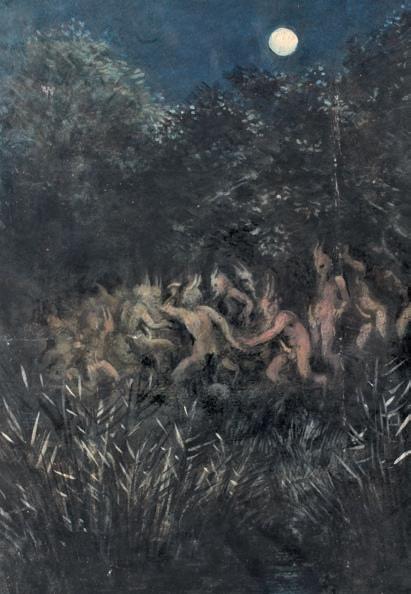 e set of model skulls is expected to make £200-£300
e set of model skulls is expected to make £200-£300
ANTIQUE COLLECTING 29
Above e letter, which has a guide price of £400-£600, was written on the back of a sepia photograph
A telephone used to carry messages from the dead and a letter perhaps from Jack the Ripper are among the lots at an inaugural Halloween auction
Below A photographer’s stamp dates the picture to 1886
Right Colin Moss (1914-2005), Skull Head, pen and wash, it as an estimate of £100-£150
Below David Hill (1914-1977), Black Mass, egg tempera on board, it has an estimate of £80-£120
ROCOCO POPS
is month’s Decorative Fair in London celebrates rococo at its foyer exhibition. Antique Collecting showcases the light-hearted style that took 18th-century Europe by storm and is once more attracting collectors
Three centuries after rococo’s original incarnation, the whimsical style is back in fashion. From art fairs to the prevailing vogue for pastel maximalism, the trend for today’s interiors is overwhelmingly kitsch. e craze is also re ected at the foyer exhibition of this month’s Decorative Fair in Battersea which is devoted to the style.
e fair’s Pippa Roberts said: “Rococo is reappearing in this season’s wallpaper and fabric launches – so this month the fair is celebrating this playful and endearing style.”
In part it has been sparked by recent lavish TV costume dramas featuring the Russian palaces of Catherine the Great in e Great, and the fabulous French chateau interiors from the BBC hit Marie Antoinette. Pippa continued: “Used judiciously (it is not a style for shrinking violets), rococo decoration can bring elements of splendid humour and visual excitement to a scheme.”
Anthony Bridgman director and head of restoration at Westland London, one of this month’s exhibitors, said: “ e modern rococo interior embraces a more restrained and balanced aesthetic. Lavish chandeliers and elaborate mirrors are juxtaposed with simple, neutral colour palettes and uncluttered spaces. By blending historical grandeur with contemporary sophistication, modern Rococo interior design delivers a unique and captivating ambience that e ortlessly marries the past and present.”
What is rococo?
e name comes from the French word, rocaille, originally referring to a method of decoration using pebbles, seashells, and cement, which had been used to decorate grottoes and fountains since the Renaissance. But in the late 17th and early 18th century, it was used to describe the new decorative motif of a seashell interlaced with acanthus leaves, as well as broader natural and marine decorations.
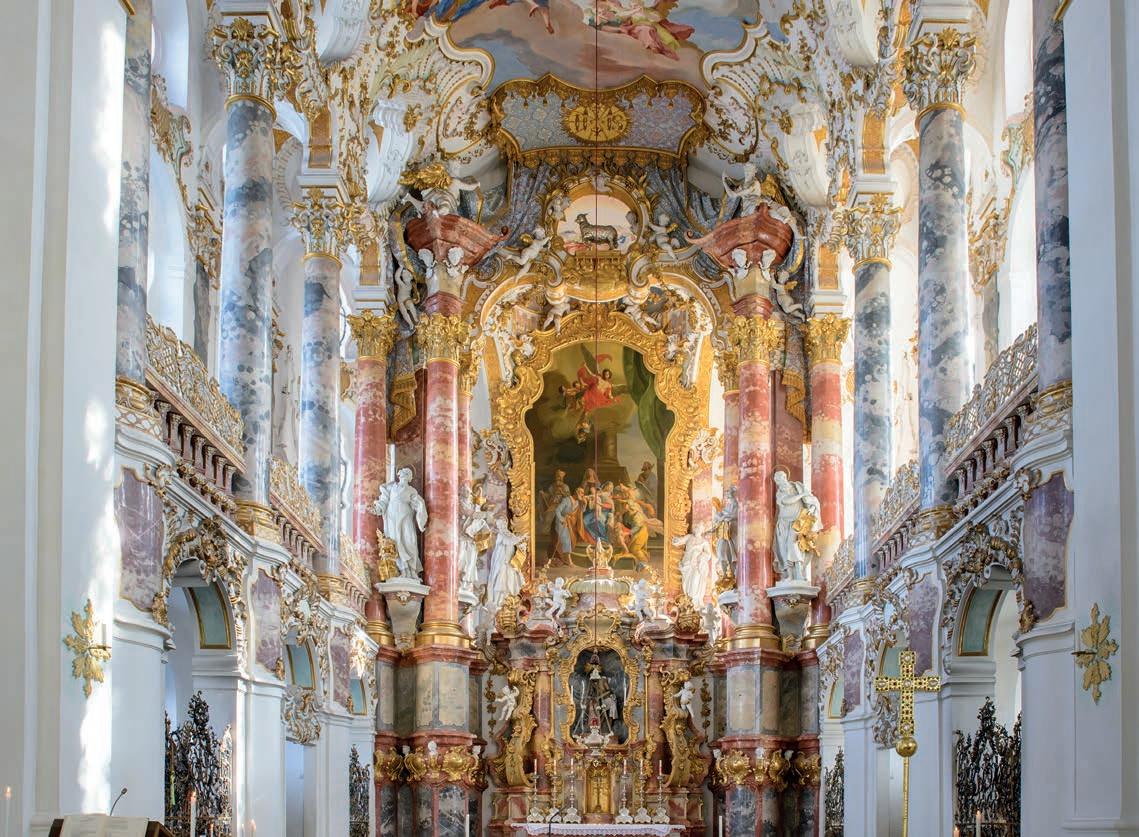
30 ANTIQUE COLLECTING
THE EXPERT COLLECTOR Unravelling the rococo
Above Wieskirche church in Bavaria, an oval rococo building, designed in the late 1740s by brothers J. B. and Dominikus Zimmermann, image Shutterstock
It also sparked a more playful design era, emerging in reaction to the religious fervour, absolutist monarchies of the preceding Baroque era.
By the start of the reign of Louis XV (1715-1774) there was an increasing shift in cultural values, with a growing emphasis on secularism, pleasure, and leisure. Hence rococo was dramatically anti-classical in style, with its exuberant swirling scrolls (often resembling the letters ‘S’ and ‘C’) and a fashion for asymmetry where one half of the design did match the other.
Colours were in warm pastel hues, pale yellow, dove grey, light blues and sunny creams - with plenty of gold accents; many furniture pieces were painted profusely in owers, festoons and garlands, with scenes of pictorial fantasy and gilt metal-applied decoration to the drawers and legs. French Enlightenment thinkers promoted individualism, wit, and elegance, which resonated with the emerging rococo style.
e rococo interior
During the Régence (the period from the death of Louis XIV until Louis XV came of age in 1723), the French government moved from Versailles to Paris as the regent, Duc d’Orleans, preferred city life to the country. e aristocracy quickly followed, causing a boom in interior decoration among the capital’s fashionforward residents. e salon, a room for entertaining and
Left Rococo cartouche, anonymous, French, 18th century, image courtesy of the Metropolitan Museum of Art
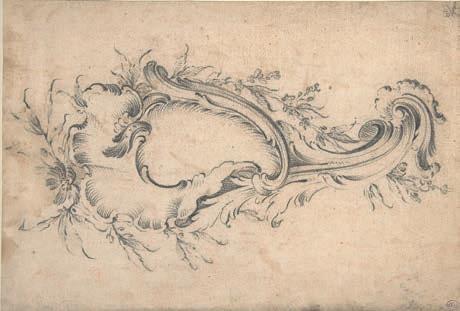
Below right Armchair, c. 1755, after a design by omas Chippendale described as a “French chair” in e Gentleman and Cabinet-Maker’s Director, image courtesy of the Metropolitan Museum of Art
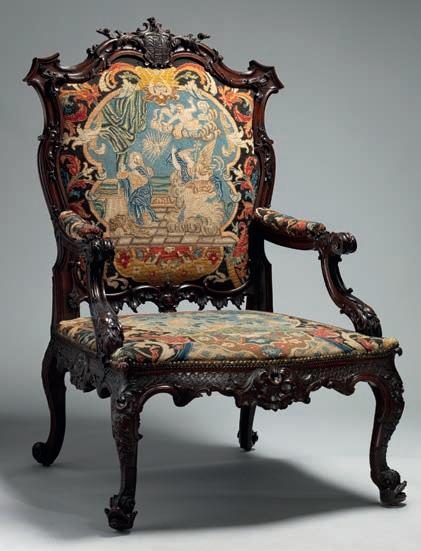
Below left e ambassador’s room in the Royal Palace of Queluz, the summer retreat of Don Pedro de Bragança, the future King Pedro III, and one of the last large European rococo buildings, image Shutterstock

British rococo makers
The most notable interpretation of English rococo came with the publication of Thomas Chippendale (1718–1779) The Gentleman and Cabinet-Maker’s Director, published in 1754, which showcased various furniture styles in the Chinese, gothic and rococo, the latter incorporating intricate carvings, flowing lines, and decorative motifs.
William Vile (1700–1767) and John Cobb (1710–1778) also adopted the use of carved rococo motifs including the “raffle lear”, a lighter form of the acanthus.
Benjamin Goodison, active between 1727-1767, was another of the most capable cabinetmakers of the Georgian period known for mahogany designs with gilt decoration. He also favoured an acanthus leaf scrolling into a central shell with garlands and trophies of plumes.
Also of note is the work of Giles Grendey (1693-1780) from Gloucestershire who went to London in 1709 and whose thriving workshop produced furniture for export. A typical feature of Grendey’s work is the incorporation of double serpentine panels in the backs which are often veneered in walnut.
ANTIQUE COLLECTING 31
‘The name rococo comes from the French word rocaille ’, originally a method of decoration, using pebbles, seashells, and cement, which had been used to decorate grottoes and fountains since the Renaissance’
THE EXPERT COLLECTOR Unravelling the rococo
impressing guests, was a major innovation.
e most famous example was Charles-Joseph Natoire and Germain Bo rand’s La Salon de la Princesse (1735-1740) in the celebrated residence of the Prince and Princess de Soubise.
e rococo interior had a softer and more private feel rather than the more intimidating earlier baroque spaces which had preceded them.
While the heart of the style remained rmly in France, the rest of Europe went wild for rococo in architecture and interiors – in Venetian palazzos, Sanssouci at Potsdam, Charlottenberg in Berlin, and in castles in Austria, Scandinavia and Russia.
Britain and rococo
While Europe adopted the style wholescale, in Britain, with its prevailing sombre Protestantism, rococo was chie y limited to the decorative and applied arts –furniture, mirrors, wall lights, porcelain, silver, textiles – with a few exceptions, such as Claydon House in Buckinghamshire, where many rooms were lavishly decorated in applied rococo plasterwork and carvings.
Many European artisans were employed in London, Birmingham and other major cities to help manufacturers
Right A gilt brass rococo ve-branch chandelier modelled with twisting acanthus leaves and owers, French, c.1890, on o er from Westland London at this month’s Decorative Fair
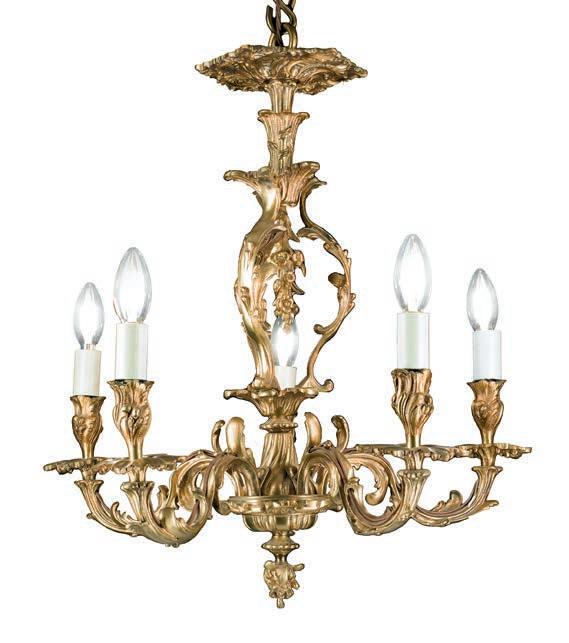
Below left Matthias
Lock and Henry Copland A New Book of Ornaments with Twelve Leaves Consisting of Chimneys, Sconces, Tables, Spandle Panels, Spring Clock Cases, Stands, a Chandelier and Girandole, etc., November 13, 1752
Bottom left Settee, possibly made by Benjamin Goodison British, c. 1730, image courtesy of the Metropolitan Museum of Art
Below right A large and ornate pair of rococo two-branch wall lights in gilt brass, with scrolling foliage, drip pans in the form of owers, English early 20th century, on o er from Westland London at this month’s Decorative Fair

produce the rococo style where it was known as the “French style”. e movement also coincided with technological advancements in woodworking, marquetry, and decorative arts which allowed a greater intricacy and nesse in craftsmanship.

From 1742, the furniture designers and cabinet makers Matthias Lock and Henry Copland published a series of prints which introduced a distinctly British form of rococo scrollwork which was hugely in uential in promoting the rococo style. Rather than copying the entire design, woodcarvers would mine them for inspiration, cutting them up and adding their own ideas.

32 ANTIQUE COLLECTING
‘In England rococo became popular largely due to the French artist Hubert François Gravelot (1699-1773) who was living in London when William Hogarth (1697-1764) founded St. Martin’s Lane Academy in 1735’
Rococo and the decorative arts
In Britain, rococo found its truest expression in the applied arts primarily via silver and other designs by immigrant workers including Huguenot refugees from France. Rather than existing on its own, it joined other anti-classical styles including gothic and chinoiserie that peaked in popularity between 1740 and 1770.
e silk weavers of London’s Spital elds developed a particularly English interpretation of rococo, using realistic botanical details in owers scattered across an open or subtly patterned ground, usually in asymmetrical arrangement, with clear, true colours.
Meanwhile, Paul de Lamerie (1688-1751) was one of the leading English silversmiths in the rst half of the 1700s. De Lamerie’s parents, French Huguenots, probably left France for religious reasons in the 1680s, emigrating to the Netherlands before settling in London in 1691. While his early works were simple, unornamented shapes, by the 1730s he was one of the rst English silversmiths to work

Lef t Paul de Lamerie (1688-1751) bread basket, 1744-1745, image courtesy of the Metropolitan Museum of Art
Below left Paul de Lamerie (1688-1751) tea kettle and spirit lamp with stand, 1744-1745, image courtesy of the Metropolitan Museum of Art
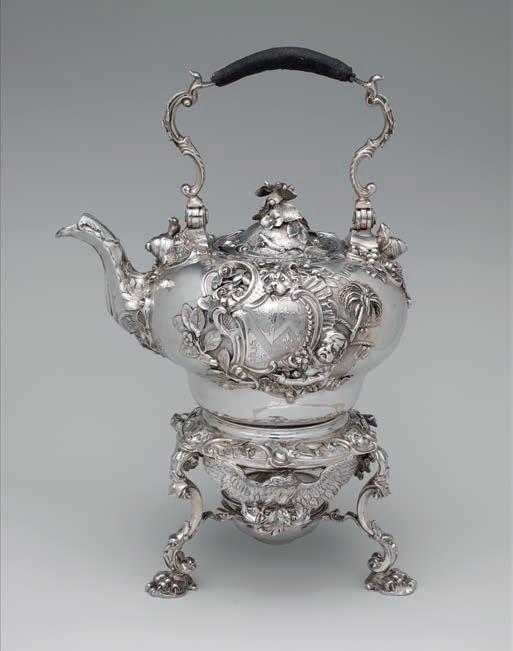
Below right e threedimensional acanthusleaf scroll mount on the upper drawer was a signature ornament of Boulle’s
Bottom right André Charles Boulle (16421732) commode, c. 1710–1720, image courtesy of the Metropolitan Museum of Art
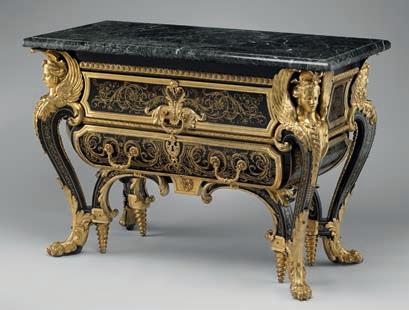
1 André-Charles Boulle (1642–1732): While Boulle is known for his work across multiple styles, he is particularly famous for his contributions to the transition from baroque to rococo. He created furniture with intricate marquetry and inlay work combined with the use of contrasting materials like brass and tortoiseshell.
2 Jean-François Oeben (1721–1763): Oeben was a French ébéniste (cabinetmaker) known for pieces of delicate marquetry, exquisite craftsmanship, and innovative mechanical features like hidden compartments.
3 Jean-Henri Riesener (1734–1806): Riesener was another prominent French ébéniste known for his work during the late rococo and early neoclassical periods. His furniture pieces often featured rich marquetry, elaborate gilt-bronze mounts, and elegant designs.
4 Juste-Aurèle Meissonnier (1695–1750): Although Meissonnier was primarily an ornamental designer he also created intricate and imaginative designs featuring asymmetrical shapes, sinuous curves, and whimsical motifs.
5 Louis Delanois (died 1768): Delanois was a French cabinetmaker who crafted rococo-style furniture, known for its intricate carving, floral motifs, and graceful curves.
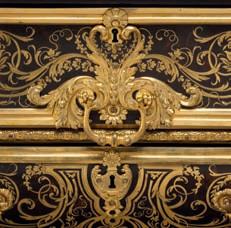
6 Johann Michael Hoppenhaupt the Younger (1709–1763): A German cabinetmaker known for his rococo furniture featuring carved foliage, flowing lines in mahogany and other exotic woods.
7 François Linke (1855–1946): Linke was a notable French ébéniste known for his revival of the Rococo style during the late 19th and early 20th centuries. He recreated Rococo furniture with exceptional craftsmanship and intricate detailing.
ANTIQUE COLLECTING 33
European rococo furniture makers every collector should know 7
THE EXPERT COLLECTOR Unravelling the rococo
Rococo revivals
ere was a rococo revival in the early 19th century, driven in part by a fashion for collecting luxury furniture and objects that ooded the European market from the 1790s after the French Revolution.

Sometimes referred to as the Louis Quinze style, the revival reached a peak in the 1830s, coinciding with the reign of the last Georgian monarch, William IV.
By then designs could be replicated more readily in new mass manufacturing methods, such as silverplate, factory chinawares from Sta ordshire and printed (rather than hand-painted) wallpapers, making the style more accessible to a wider audience than it had been a century before. It found favour in the salons of wealthy American homeowners who had travelled to Europe and seen for themselves the extraordinary rococo decoration at Versailles, Venice and many Germany and Prussian palaces.
It was replicated in luxury French hotels in the rst half of the 20th century, and in Britain was revived again after WWII at a time when tastemakers such as Cecil Beaton and Oliver Messel found the romantic aura of rococo was a suitable antidote to the austerity of the war years.
Rococo is the subject of a special foyer display at the autumn edition of the Decorative Antiques and Textiles Fair in Battersea Park from October 3-8. For more information on the event turn to page 57, or visit www.decorativefair.com
Above
ROCOCO ART
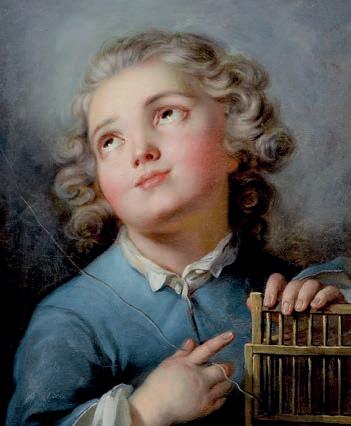
Below 19th-century Italian commode decorated in the 18th-century rococo style on o er from Lorfords Antiques at this month’s fair

Art patrons in the rococo period were often members of the rising middle class, rather than, as previously the aristocracy or the church. In France, artists such as JeanAntoine Watteau (1684-1721), François Boucher (1703-1770) and Jean-Honoré Fragonard (1732-1806) painted picturesque scenes known as fête galante. In England rococo became popular largely due to the French artist Hubert François Gravelot (1699-1773) who was living in London when William Hogarth (16971764) founded St. Martin’s Lane Academy in 1735. Gravelot was a former student of Boucher and the school became the seat of English rococo, with one of its most notable pupils being Thomas Gainsborough (1727-1788).

A landscape artist at heart, Gainsborough’s portraits of fashionably-dressed people in outdoor settings, including his best-known The Blue Boy (c. 1770), were typically rococo in style.
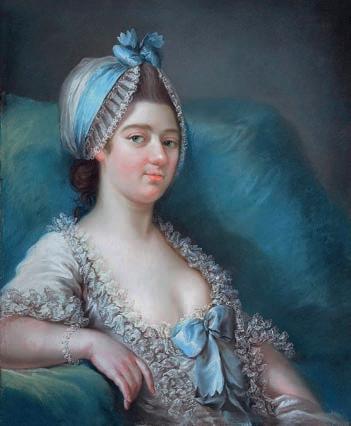
34 ANTIQUE COLLECTING
left A French 19th-century porcelain cache pot with owers to one side, and images of birds including an owl to the other. On sale from Sue Norman Blue and White Transferware at this month’s fair priced £285
1 European School, pastel on paper mounted on canvas, late 18th century, provenance Ernst Museum auction, on o er from Darnley Fine Art at this month’s Decorative Fair
2 Style of Jean-Baptiste Greuze (1725-1805) Portrait of a Young Boy with Birdcage, oil on canvas, on sale from Darnley Fine Art at this month’s Decorative Fair, priced £3,200
1 2 3
3 Jean-Honoré Fragonard (1732-1770) e Swing, oil on canvas, c. 1767, the Wallace Collection, London, image public domain

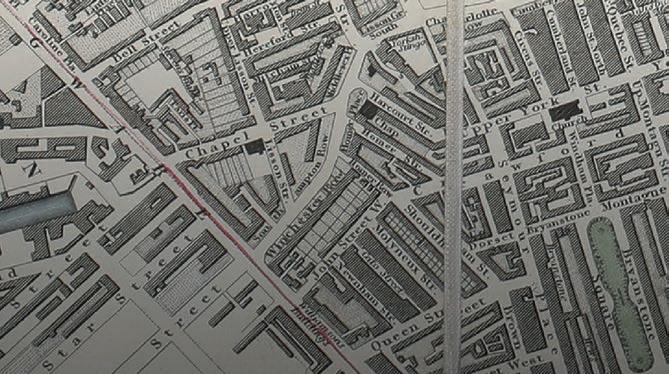
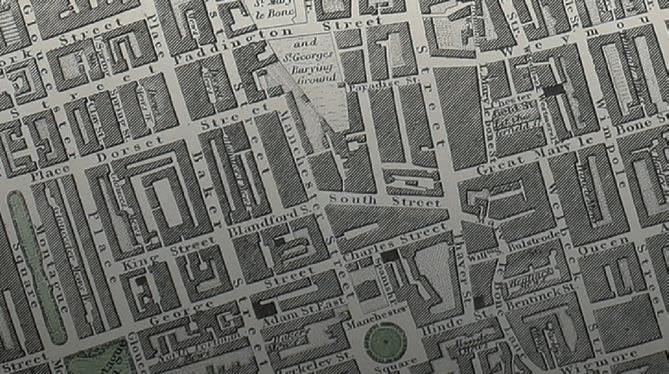

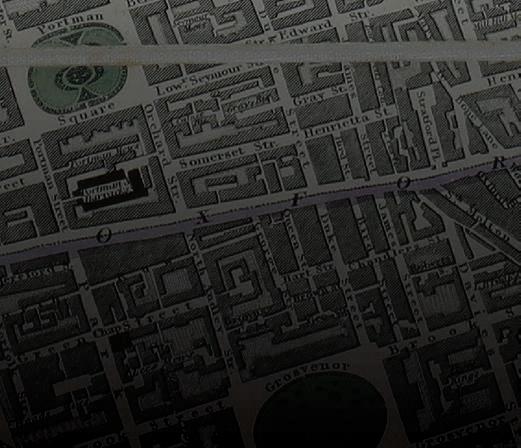


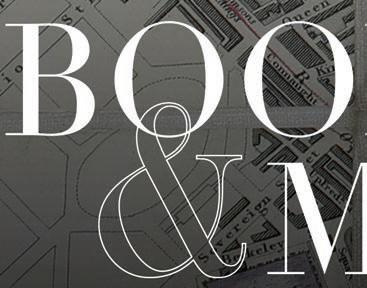

For viewing information and to browse the sale catalogue scan the QR code books@sworder.co.uk | 01279 817778 | sworder.co.uk First Edition Map of London by John & Christopher Greenwood, published 1827, Housed in original full leather box, VG, £5,000-10,000 Tuesday 10 October | 10am
Studio SESSION
A new sale of paintings consigned directly by descendants of the artists takes place this month. Antique Collecting goes behind the scenes
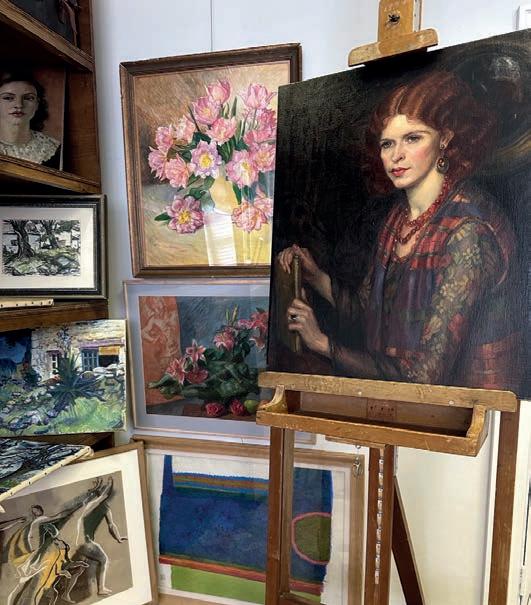
Art history is littered with artists who, but for the intervention of fate, luck, or a marketing wheeze – might have gone unnoticed. Which is one of the anomalies set to be put right this month at a new sale which sees works by 11 largely unsung artists, previously languishing in attics or on family walls, go under the hammer. e sale, called From the Studio: Works from Eleven Artists’ Estates is the brainchild of Adrian Biddell, Olympia Auction’s new head of pictures, and is set to shine a light on artists whose work has not had the opportunity to attract a wider audience. Biddell said: “It may be that the artist was well known during their lifetime but their reputation is now languishing, their talent largely forgotten or overlooked.
“Today their work is crying out to be dusted down, rediscovered, reassessed. is specialist sale showcases a deserving and diverse group of such artists’ work in a dedicated auction.”
Each artist, of whom the auction will showcase 10 to 30 examples of their work, will have a chapter dedicated to them in the catalogue and, with estimates ranging from £100-£2,000, they are sure to nd a ready audience.
Inter-war gems
Female artists, in particular, who may have lacked the
Above left Hans Feibusch (German/ British 1898-1998)
An Olive Grove, gouache, it has an estimate of £300 -£500 at this month’s sale
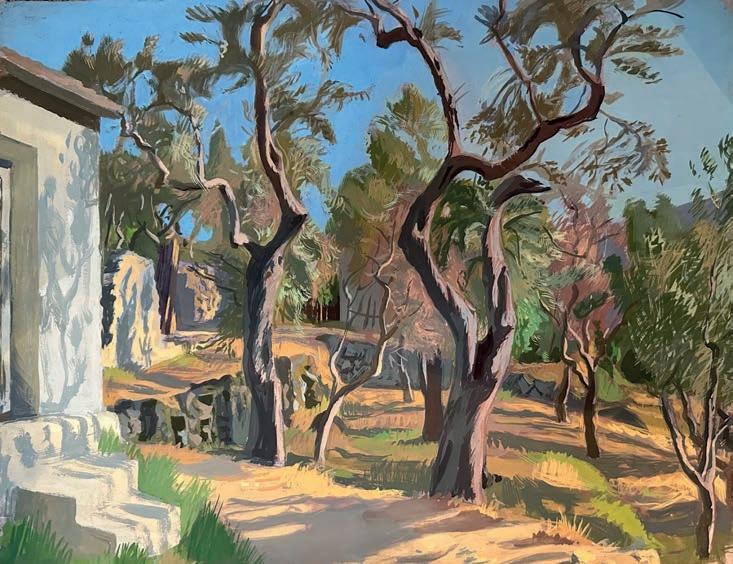
Above right e sale includes works direct from the artists’ studio
Right Hans Feibusch (German/British 18981998), Baptism of Christ, signed with initials and dated 60 lower left, gouache on card. It has an estimate of £800£1,200 at the same sale
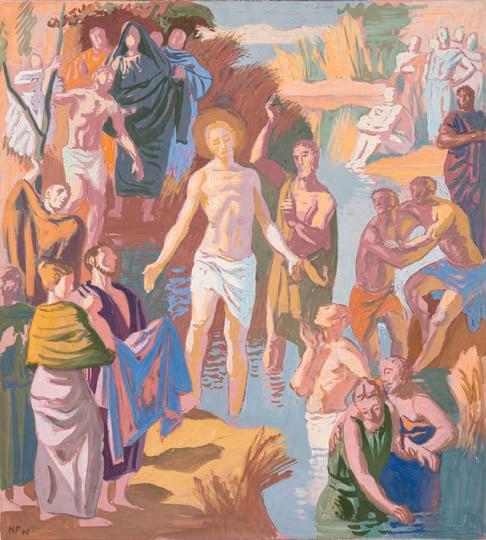
work are particular cases in point and the sale includes portraits by the little-known Hampstead society portrait painter Hedwig Pillitz (1896–1987).
Equally, fashions change and many out-of-vogue artists are waiting to return to the limelight.
Still-lifes, landscapes and nudes by the late Bernard Myers (1925-2007) will also be included. Myers was a contemporary of Frank Auerbach and John Bratby and later a teacher at the Royal College of Art among other institutions; his works are in the collection of Tate Britain. Latterly a resident of Chiswick, the work of Myer’s neighbour Hugh Cronyn (1905-1996) will also be featured, as will the work of James Hull (1921-1990), a groundbreaking abstract artist of the post-war period, whose paintings were exhibited by several signi cant British galleries and museums in the 1950s.
36 ANTIQUE COLLECTING
COLLECTING GUIDES Artists’ Estates
Hans Feibusch (1898-1998)
One featured north London painter, whose work deserves a larger audience, is the German colourist Hans Feibusch (1898-1998) one of a number of émigré Jewish artists who arrived in Britain in the ‘30s eeing the Nazi regime.
Once in London, he was welcomed into a broader London group, including artists such as David Bomberg, Jacob Epstein and Harold Gilman.
It was through a member of the group, the architect E. Maxwell Fry that Feibusch got his rst UK commission for the Methodist Chapel at Colliers Wood in 1938.
During the war Feibusch painted predominantly in oil and gouache and his contribution as a muralist would start during the e orts to recover from the bombings.
Religious torment
While abstraction and social realism dominated the British art scene in the 1930s and ‘40s, Feibusch’s output fell into three main themes: nature, mythology and religion, the latter driven by the persecution he experienced in Nazi Germany and desire to nd spiritual guidance. But in this Feibusch turned away from the Jewish religion and became a Christian for nearly 20 years until he turned away from the Church of England in 1992.
In the 1930s, Feibusch was among the leading modernist artists to be commissioned to create designs for posters for Shell, the London Underground and the Royal Academy. In this he was in the company of Paul Nash, McKnight Kau er, John Piper, Graham Sutherland, Ben Nicholson, Cedric Morris and others.
In 1946, the British government attempted to kick-start the post-war economy with a 14-week Britain Can Make It exhibition at the V&A.
Above Hans Feibusch (German/British 18981998), Circus Scene with Clowns, Elephants and Horses, gouache, 1946, a design for the decoration of the tea room at the V&A for the post-war exhibition Britain Can Make It. It has an estimate of £400-£600 at this month’s sale

Below Hans Feibusch (German/British 18981998), Gira e, gouache on card, it has an estimate of £200-£300 at the same sale

Hedwig Pillitz (1896–1987)
Like so many women artists of the era, there is frustratingly little known of the talented Hedwig Pillitz who excelled as a portraitist, particularly of leading actors and musicians.
Born in Hampstead, the daughter of Hungarian emigres, Pillitz attended South Hampstead High School for Girls, with a school bulletin reporting she had exhibited a landscape in the Paris Salon in 1926, as well as work at Liverpool’s Walker Gallery.
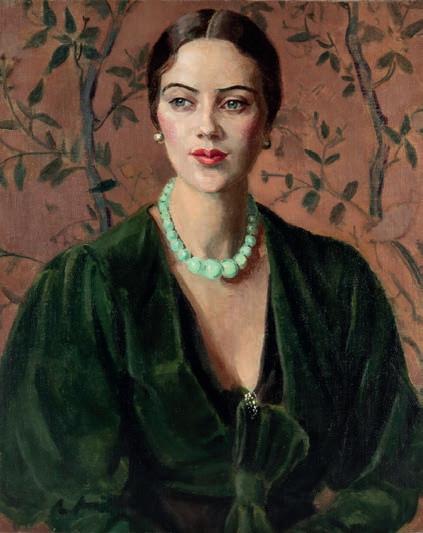
A year later, through her actress sister Doris, she was introduced to a number of leading lights from the Old Vic and she continued to attract notable female sitters including Marguerite Kelsey, a professional model in considerable demand among painters of the day.
With many of Pillitz’s sitters being artists and performers, it is not surprising to find her paintings in public collections. The most notable of which, currently in the V&A, is a 1933 portrait of Dorothy Black (1913–1985) who she painted in the role of Emily Brontë in the play The Brontës.
e aim was to bolster Britain’s manufacturing industry by presenting modern forward-looking and high-quality designs.
Feibusch was commissioned to create a mural for the tea pavilion, his selection for the commission being a true testament to his deep integration into the lively world of British art.
His design CircusScenewithClowns,Elephantsand Horses took inspiration from a classical frieze. e bright colours ensured the work is a great t for the tea pavilion setting. Over a lifetime, Feibusch completed around 40 murals in churches, cathedrals, and public buildings, which remain some of the most outstanding modern examples in British history.
‘Female artists, in particular, who may have lacked the contacts, time or confidence to promote their own work are particular cases in point and the sale includes portraits by the little-known Hampstead painter Hedwig Pillitz (1896–1987)’
ANTIQUE COLLECTING 37
Above Hedwig Pillitz (1896–1987) Portrait of Marguerite Kelsey. It has an estimate of £350-£550 at this month’s sale
COLLECTING GUIDES Artists’ Estates
Julian for the next four years. In Paris he found himself at the cutting edge of the international avant-garde. Encouraged by Whistler, Degas and Toulouse-Lautrec and befriended by Rodin, Rothenstein became a close friend of the Australian painter Charles Conder with whom he shared a studio.
Returning to England, he established himself as a talented portraitist, early on collaborating with the historian Frederick Yorke Powell on the 1896 publication of Oxford Characters, a series of illustrations of well-known people including Hilaire Belloc and Max Beerbohm. Such commissions brought him into the orbit of both movers and shakers and those at the heart of the English establishment. On his marriage to Alice Knewstub in 1899 the couple regularly entertained the glitterati of the day including H.G Wells, Joseph Conrad, Percy Wyndham Lewis, Mark Gertler and Paul Nash.
War artist
e Rothenstein family
e sale will also showcase the work of an extraordinarily talented family of artists, the Rothensteins. Sir William Rothenstein (1872-1945) became principal of the Royal College of Art and is particularly known for his portraits, many of which are in the National Portrait Gallery. His brother Albert (1881-1953) was a member of the New English Art Club and anglicised his name to Rutherston, while William’s son Michael Rothenstein (1908-1993) was a celebrated print maker, some of whose work is in this month’s sale.
William and Albert Rothenstein were the youngest of six children of Jewish immigrants from north Germany who had settled in Bradford. In their separate careers, spanning the rst half of the 20th century, they each achieved considerable in uence and success at the very heart of the British art establishment.
Older brother
William was the rst to move south to London where he studied for a year at the Slade (1888-1889) under Alphonse Legros before moving to Paris to attend the Académie
Above Sir William Rothenstein (1872-1945) Bomb Damage to the Square and Cathedral, Péronne, e Somme It has an estimate of £2,000-£3,000 at this month’s sale

Below left Michael Rothenstein (1908–1993), Making Hay, gouache on paper, signed and dated 1931. It has an estimate of £600-£800 at the same sale
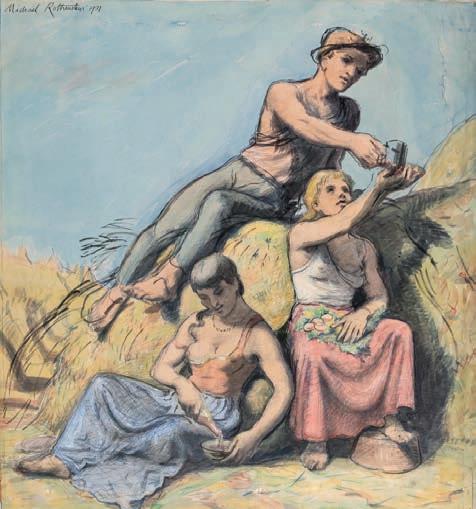
Below right Albert Rutherston (1881-1953) costume for Diana in Le Réveil de Flore, 1914, it has an estimate of £1,000-£1,500 at this month’s sale
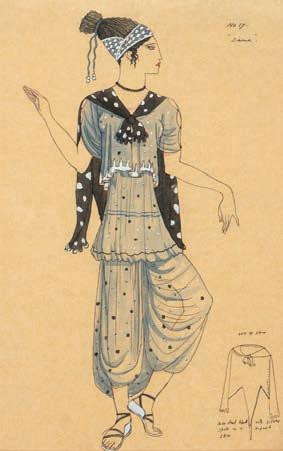
In 1917, Rothenstein spent six months at the Front as an o cial artist of the British and Canadian armies. Soon after his arrival he visited Péronne in the valley of the Somme. He wrote: “ e unwonted shapes of the ruined buildings, the pink ush of the red bricks, deepening to blood colour where the impact of a shell had made a wound in the walls, made a scene more tragic than any stage-setting.”
In 1920, he was appointed principal at the Royal College of Art in London, a post he held for 15 years. He was awarded a knighthood for services to the arts in 1931.
Albert Rutherston (1881-1953)
Aged just 16, in 1897, Albert followed in his elder brother’s footsteps to the Slade during the era of Henry Tonks, Philip Wilson Steer and Walter Russell. ere he fell in with a gilded set of like-minded spirits, in particular Augustus John and William Orpen, whom his brother dubbed the ‘ ree Musketeers’. e end of the century saw the trio’s rst holiday in France, a year later meeting Walter Sickert and Max Beerbohm in Dieppe.
In London Albert thrived at the heart of the avantgarde. He lived on Fitzroy Street and shared a separate space a few doors down to work and exhibit with William, Sickert, Gore, Russell and Harold Gilman. Open days were Saturdays, the combined aim as Sickert recalled being ‘to create a Salon d’automne milieu in London’.
Towards the end of the 1910s Albert started to explore watercolours and painting on silk. He also worked on critically signi cant designs for the ballet and theatre.
From the Studio: Works from Eleven Artists’ Estates takes place at Olympia Auctions, 25 Blythe Road, London, W14 0PD, on October 11 at 12pm
38 ANTIQUE COLLECTING
Q&A
QHow did you come up with the idea?
AThe idea of a dedicated artist’s studio sale aggregating work from different artists’ estates has been evolving in my mind for a while. I regularly come across descendants of artists keen to find a mechanism for bringing to auction the works that they have inherited in order to develop both an appreciation for their forebear’s work and their market. It may be that the artist was well known during their life-time but their reputation is now languishing, their talent largely forgotten or overlooked.
Other times an artist had few, if any, gallery exhibitions during their lifetime, thus they had very limited public exposure, but their work is good, their techniques highly proficient and they fully deserve reappraisal. Meanwhile, the descendants of these artists have all that they can house hanging on their walls, and yet they are still sitting on quite a stash of further material in the attic, in the garage, or in store, and they turn to me to help sell it.
QWas there a lot of research involved? Did you turn up anything surprising?

AIt’s been a fascinating way to learn about the artists and the different projects they worked on. William Rothenstein and Albert Rutherston, for example, – art giants in the first half of the 20th century – and follow the different directions they went in as artists.
Or trying to get a sense of Hedwig Pillitz, the person behind the portraits; biographical information on her is tantalisingly scant. She was drawn to painting leading figures in the arts: musicians, actors and writers in particular. I would love to know more about her. Equally the sale offers the perfect platform for showcasing the
output of Hans Feibusch, an artist who devoted himself to mural painting so rarely had commercial exhibitions. But as the work in the upcoming sale attests, he was a major talent.
Likewise for the work of the little-known abstract painter, James Hull. It was revelatory to find that in the ‘50s he had solo shows with Gimpel Fils, a joint exhibition with Roger Hilton and again with William Gear and Peter Lanyon. Come the 1960s he stepped back from the commercial art world; now we can re-discover what a wonderful artist he was.

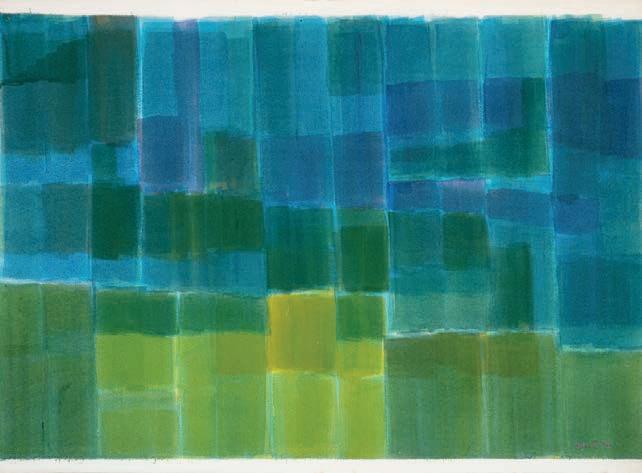
QWhat is the benefit of the sale to collectors?
ACollectors will get to see a range of a single artist’s work together, sequentially, rather than finding the odd piece here and there, as they would in a regular “various owners” auction. Plus they will see the works dans son jus (in their juice), literally fresh from the studio.
Many are unframed, and some works on paper are not mounted or stuck behind glass. Flicking through a portfolio of works is a much more textured experience than seeing works of art done up to the nines, as you might in a gallery or art fair.
QIs there one artist in particular whose work you want to showcase?
A I honestly don’t have a particular preference. Slade-trained figurative painters William Rothenstein and Albert Rutherston worked at a very different time to, say, James Hull. They all have their fascinating life stories, some better known than others, their experiences are invariably colourful and their work is ripe for reappraisal.

ANTIQUE COLLECTING 39
Above James Hull (1921-1990) Composition (Green) signed and dated ‘84, it has an estimate of £500-£700 at this month’s sale
Below right James Hull (1921-1990) Compostion (with Red Square). It has an estimate of £400£600 at this month’s sale
We asked sale curator Adrian Biddell for the reasons behind the new auction
TEST YOUR KNOWLEDGE
Puzzle TIME
Give your brains a late summer work out with two pages of headscratchers set by our resident quiz editor Peter Wade-Wright
OCTOBER QUIZ
Q1 Chinese ceramics described as san tsai, means what? (a) a nger bowl, (b) translucent, (c) threecoloured, (d) without a handle?
Q2 What is a fauteuil? (a) a ‘false’ opening in a puzzle jug, (b) an upholstered chair with open arms, (c) a 17th-century French military cravat, (d) latticework perforations in porcelain.
Q3 To what does Beneventan refer? (a) a type of calligraphy, (b) Italian jewellery, (c) exotic headgear, (d) open-toed sandals and other cooling clothes.
Q4 Pearls which are known as baroque are so-called because they (a) have an unusual play of colour, (b) are dated from 1600 to 1750, (c) have a varying ‘note’ when struck with something, (d) are misshapen?


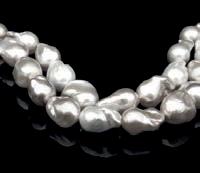
Q5 You nd an obviously antique greenstone axe on a market stall. Is it most likely to be (a) Mexican, (b) Maori, (c) Moghul, (d) Malaysian?



Q6 Baloardo and Brighella were (a) Venetian glass makers, (b) gondoliers made famous by Canaletto, (c) lesser-known Italian comedy characters, (d) celebrated inventors of pasta-making kitchenalia?
Q7 Quill pens from the wings of geese were cheaper if taken from the left wing of the bird rather than the right. Why? (a) they bend to the left when held properly, (b) geese are ‘right-handed’ and those feathers are stronger and last longer, (c) superstition, (d) fashion…right-wing ones were made popular by certain French authors.
Q8 e tabletop board game Agon (published in 1842, but certainly older) was also known as? (a) Blind Lord, (b) King’s Consort, (c) Bless-my-Soul, (d) Queen’s Guard.
Q9 What was the American Frederic Remington (1861-1909) known for? (a) popular beard styles, (b) Wild West painting, (c) railway models, (d) rearms.
Send your answers to Crossword, Antique Collecting magazine, Riverside House, Dock Lane, Melton Woodbridge, Su olk, IP12 1PE. Photocopies are also acceptable, or email your answers to magazine@ accartbooks.com. e rst three opened by October 15 will win a copy of Jackson’s Hallmarks, Pocket Edition: English, Scottish, Irish Silver & Gold Marks From 1300 to the Present Day, worth £6.95

Q7 Were quills from the left or right-side of a goose more expensive?

SOLUTION TO LAST MONTH’S CROSSWORD:
The highlighted letters could be rearranged to form the word jardinière. The three winners who will each receive a copy of the book are Scott Wilson, Barnet; Emily Forbes-Jones, by email and H.T. Cummings, by email.
Q10 To the collector of which sporting memorabilia is the name of the Civil War hero Abner Doubleday (1819-1873) important? (a) baseball, (b) basketball, (c) pool, (d) wild swimming.
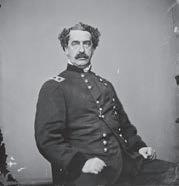
Q10 In which sport did Abner Doubleday play an important part?
Finally, here are four anagrams: cement peas; chin of re; eats madly and senile gaucho. Rearrange them to form (a) the device that regulates the energy of weights or springs in a clock’s movement, (b) a side cabinet with, or without drawers, and shelves, (c) the neo-classical genre introduced to Britain in the second half of the 18th century (two words), (d) an upholstered chair with an elongated seat.
movement, (b) a side cabinet with, or without
For the answers turn to page 10.
40 ANTIQUE COLLECTING
Q4 What makes baroque pearls special?
12 3 12 5 11 13 4 8 6 9 10 16 23 22 24 14 15 7 17 18 20 21 19 25 OP E AMB R LO W N N S A PI N VAO A RTAE S OW L I D AL I BOO D AEG R AJ N DE L MA T L A SKED R I M E OF L OROU O D ED O T EA G AX T N BU E R A
Across
1 _- ____ major…popular key for concert bands (at which the clarinet and trumpet are pitched). (1-4)

4 Description of fabric etc. with colours blending into each other. (5)
7 Tavern, like Chaucer’s ‘Tabard’, with lodging, entertainment and liquid sustenance. (3)
8 Precious stone (aquamarine and emerald are varieties) once thought to have magical properties. (5)
9 British comic first appearing in 1950 and home of Dan Dare – Pilot of the Future. (5)
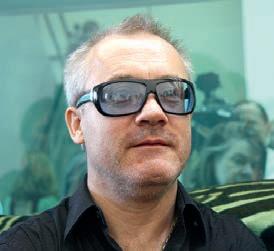
12 Spanish for ‘he’…and a Canaanite deity father of the gods. (2)
13 Hypothetical substance once thought to permeate the whole of space and represented by the dodecahedron in alchemical works. (5)
16 Individual impression taken from a block on which is a design. (5)
17 ____ glass, also meaning colourless and transparent. (5)
18 ____ - de – Chine. Ming dynasty white porcelain. (5)
21 Centrally pierced Chinese jade disc. (2)
22 Record label formed by The Beatles in 1968. (5)

25 French/Swiss river, and a key wine producing region in its French section. (5)

26 Rodent, and Renaissance art symbol of decay and the passing of time. (3)
27 Material in thin sheets made from wood-pulp (used a lot for the process described in 16-across). (5)
28 Damien ____. English artist (b. 1965). One of the ‘Young British Artists’ (YBAs) of the 1990s. (5)
Down
1 Written work regarded as the ultimate authority on its subject. (5)
2 Timber often with a pronounced natural growth curve making it ideal for boat ribs and planks. (5)
3 A maker or layer of slabs of baked clay ceramics. (5)
4 ____ off. Unique. (3)
5 Sack or pouch. The 18th-century ‘reticule’ was carried by ladies of fashion. (3)
6 Female sheep…a ‘____- lamb’ is a single, highly-prized possession. (3)
10 Month for which the diamond is the 18-down stone. (5)
11 Cloth made from flax…and as a ‘fold’, a decorative device on wood. (5)
14 Bulbous plant with a showy, solitary flower that caused a sensation in 17th-century Holland. (5)
15 Modern communication method that (mostly) leaves no paper trail for future collectors. (5)
18 Coming into the world…chairs and stools have been made and used for it for millennia. (5)
19 A secret love affair (French) (5)
20 A piece of furniture, and the earliest type of storage receptacle. (5)
22 Cleopatra’s bosom pal…most likely the horned viper. (3)
23 ____ Art. Term coined for the Anglo-American movement using cultural forms and images 1950s-1970s. (3)
24 As Alexander Pope understood in 1711 ‘ To ___ is human; to forgive, divine.’ (3)
Finally, rearrange the letters in the highlighted squares to form the name given to a small stair or parapet support, and a shape used for some furniture legs.
ANTIQUE COLLECTING 41
1 2 3 12 5 11 13 4 8 6 9 10 16 23 22 24 26 14 15 7 17 18 20 21 19 25 28 27 28 ACROSS
25 ACROSS CLUE 22 ACROSS CLUE
CLUE
Who is this well-known British artist?
What was the Fab Four’s record label?
What river is seen here at Avignon?
SAL EROOM SPOTLIGHT
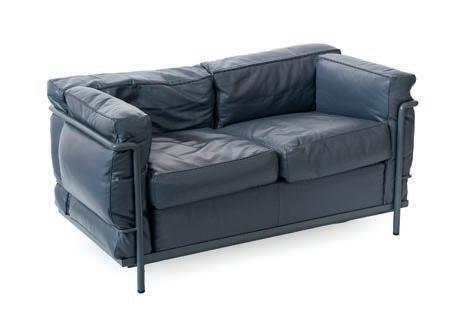
e treasure trove collection of a much-loved teacher is set to excite collectors when it goes under the hammer in North Yorkshire this month
African highlights
e son of scientist parents, Raw spent part of his childhood in Africa and he went on to collect art from the continent including Word Play by Ethopian artist, Wosene Worke Kosrof (b.1950) one of the rst of the contemporary African artists to make a name for himself on the international stage.
Kosrof was born in Addis Ababa to a single mother who was determined to ensure her children learnt the sounds and script of Amharic, one of the major languages of the country. Later, realising its aesthetic potential, it featured at the heart of his work and the main visual narrative element in one of the lots (below left).
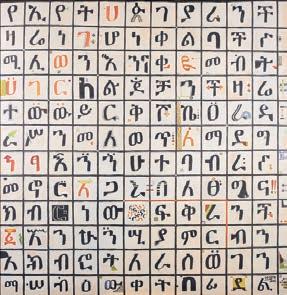
It is joined by Lorry Station by the Ghanaian artist Ablade Glover (b.1934), another signi cant gure on the African art scene, whose works are held in collections around the world. Glover’s work, which teeters between abstract and realism, depicts urban landscapes, shanty towns, Ghanaian women, and crowded market scenes, becoming distillations of the heat, colour and exuberance of his homeland.

For a history teacher, Michael Raw had a surprisingly modern taste. is month sees dozens of lots from his vibrant and eclectic collection go under the hammer at Tennants Auctioneers in North Yorkshire.

Named the ‘Harlequin’ sale, after the rugby union side for which he brie y played, Raw was better known as the popular head of history at Sedbergh School in Cumbria, where he taught for almost 30 years.
His erudite eye and eccentric outlook – after studying at Cambridge he wrote for the Footlights and Not the Nine O’Clock News – found expression in his broad and quirky collection ranging from contemporary African art to 20th-century Italian furniture.
Above Michael Raw’s home was a treasure trove of modern and contemporary art and design
1 Wosene Worke Kosrof (b.1950) Word Play, signed, oil on canvas, 127cm by 122.5cm it has an estimate of £2,000-£3,000 at this month’s sale
2 Ablade Glover (b.1934) Lorry Station, initialled, dated 2018 verso, oil on canvas, 76cm by 76cm, it has an estimate of £2,000-£3,000 at this month’s sale
3 Breon O’Casey (19282011) Sailboat, signed and numbered IV/IX, bronze, 30cm high, it has an estimate of £2,0003,000 at the same sale
4 John Maltby (19362020) Ancient King, 2010, stoneware on a metal stand, signed, titled and dated, 44.5cm high, one of two, each has an estimate of £700-£1,000
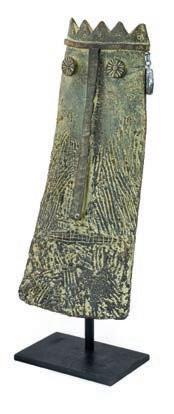
St Ives school
From closer to home are ne examples of British 20th-century sculpture and ceramics, including Sailboat by Breon O’Casey (1928-2011) who was an important gure in the St. Ives School of artists, working alongside Barbara Hepworth and Ben Nicholson. A hugely versatile artist, he created jewellery, woven rugs, etchings, paintings, and sculpture from his studio in Cornwall.
e work of the celebrated ceramicist John Maltby (1936-2020), one of Britain’s most respected ceramicists, is also represented. After training with David Leach where he concentrated on creating Anglo-Japanese thrown pots, he turned to making more individual, sculptural pieces inspired by Amharic Picasso and Alfred Wallis.
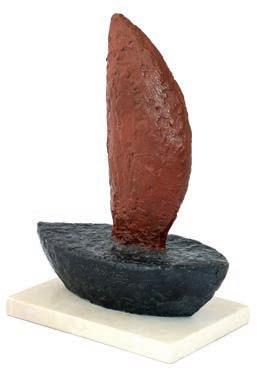
42 ANTIQUE COLLECTING
ANTIQUES UNDER THE HAMMER e Michael Raw collection
1 2
3 4 5
An illness in the late ‘90s meant Maltby could no longer work with large masses of clay and he began to produce a range of slab-built gures featuring birds, warriors, kings, and queens. On o er in the sale are two of his stoneware Ancient King gures.
Mid-century classics
A selection of Italian, Danish and Dutch 20th-century furniture, some by the era’s greats including Le Corbusier and Josef Ho mann which are reissued under license by leading modern manufacturers (including Cassina and ClassiCon) is also on o er.
AUCTION fact file
WHAT: The Harlequin sale: the Estate of Michael Raw
Where: Tennants Auctioneers, The Auction Centre, Leyburn, North Yorkshire, DL8 5SG
When: October 7
Viewing: October 4, 4-7pm; October 5 and 6, 10-4pm and from 8am on the day of the sale, also online at www. tennants.co.uk

6 7
NORTHERN LIGHT
e collection also includes a work by one of Iceland’s best-known abstract expressionists Nína Tryggvadóttir (1913-1968) whose work has been achieving estimate-busting prices in recent years.
Tryggvadóttir studied at the Royal Academy of Art in Copenhagen before moving to Paris in 1938 where she fell under the spell of Picasso, Cezanne and other Cubists.
In 1943, she moved to New York where her second solo exhibition, which saw a move towards pure abstraction, was praised by the important abstract expressionist artist Elaine de Kooning. When Tryggvadóttir died, aged just 55, she left behind an impressive body of work including textiles and portraits.
5 A Cassina LC2 twoseater sofa, designed by Le Corbusier, Pierre Jeanneret and Charlotte Perriand has an estimate of £600-£900
6 A ClassiCon De Stijl table, designed by Eileen Gray in 1922, multiplex and MDF, matte lacquered in black and white, has an estimate of £300-£500
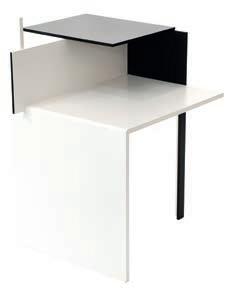
7 A Cassina 635 red and blue lounge chair, designed by Gerrit omas Rietveld, with a Cassina tag, it has an estimate of £200-£300
Below Nína Tryggvadóttir (19131968) Abstraction, 1952, collage and ink on paper, it has an estimate of £300-£500
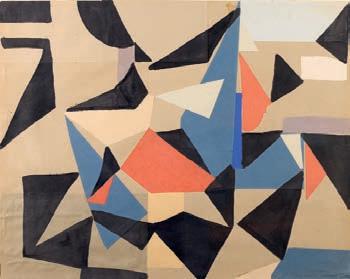
‘Raw’s erudite eye and eccentric outlook –after studying at Cambridge he wrote for the Footlights and Not the Nine O’Clock News – found expression in his broad collection ranging from contemporary African art to 20th-century Italian furniture’
IN
MY OPINION...
What were some of the collection surprises?
The small mews house where Mr Raw lived was so tightly packed with treasures that it was difficult to pick out individual pieces or take everything in in one visit. Among them were plenty of surprises such as the wonderful Sailboat bronze by St Ives artist Breon O’Casey, paintings by Canadian artist William Perehudoff and Ghanaian artist Ablade Glover and intricate sculpture by Merete Rasmussen.
How was the collection built up?
The majority of pieces were purchased from galleries around the world and the furniture came directly from high-end manufacturers. Mr Raw travelled a lot in the school holidays, when he seems to have made many of his purchases. He obviously felt a strong connection with Africa.
Have you got a favourite piece?
I love Loubna by the Dutch contemporary artist Carla Kranendonk, it is such a striking piece with lots of beads and details stitched into the painting. It would a fantastic centre piece for any interior.
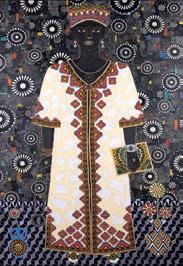
Where are you expecting interest to come from?
Given the diversity of the collection, there is something to suit every taste and budget, including important works which should draw bidders from around the world.
Some of the furniture is manufactured under licence, can you explain?
Important pieces of 20th-century design furniture are now reproduced by manufacturers who have purchased a license allowing them to make copies of pieces otherwise protected by copyright. Furniture by Gerrit Rietveld is protected by copyright owned by the Gerrit Thomas Rietveld Copyright Foundation which, in turn, licenses companies such as Casina, Rietveld Originals and Tecta to reproduce them – all of which bears a mark that guarantees authenticity.
Above Carla Kranendonk (b. 1961) Loubna, 2018, signed oil and mixed media on canvas, has an estimate of £2,000-£3,000
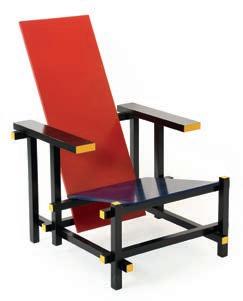
We asked Tennants’ modern and contemporary art specialist, Francesca Young, for her sale highlights ANTIQUE COLLECTING 43
Highlights include a Cassina LC2 two-seater sofa, designed by Le Corbusier, Pierre Jeanneret and Charlotte Perriand, and a Sitzmaschine (Sitting machine) recliner armchair, designed by Josef Ho mann in 1905. Also on o er is a ClassiCon De Stijl table designed by Eileen Gray in 1922 and said to be one of her favourite pieces, as well as a Cassina Utrecht armchair designed by Gerrit omas Rietveld which has an estimate of £700-£1,000.
BREAKING the MOULD
Buttons
Ai Weiwei, Edmund de Waal, Cornelia Parker and Antony Gormley are among 10 leading artists who have designed a range of decorative buttons to raise money for the art gallery Kettle’s Yard in Cambridge.
Each took their inspiration from the recent exhibition at the gallery of work by the Austrian-born émigré Lucie Rie, one of the most signi cant ceramicists of the 20th century who, despite her skill, had to turn her hand to producing buttons during WWII.
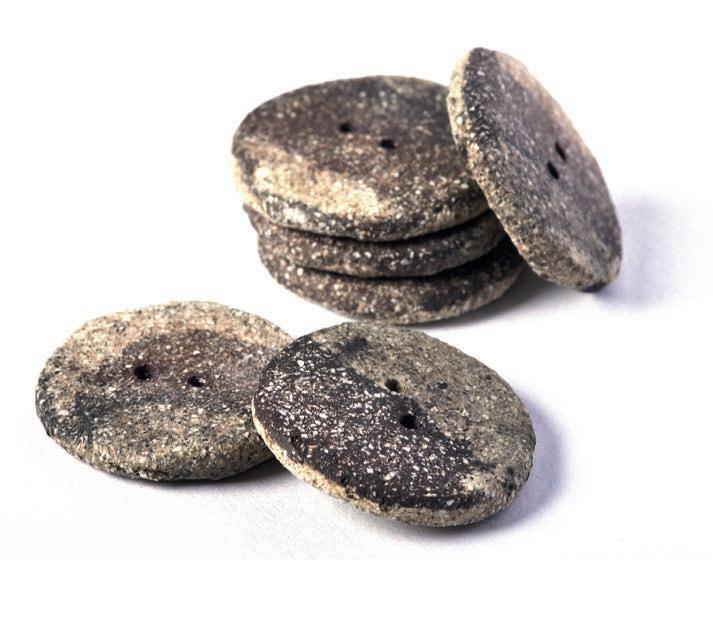
e potter and author de Waal (b.1964), who is distantly related to Rie on his mother’s side, has made 180 buttons displayed on 20 cards with Rie herself as the theme. His thin porcelain buttons, with gold leaf on the reverse, are engraved with Lucie’s name and addresses of her home in Vienna and London.
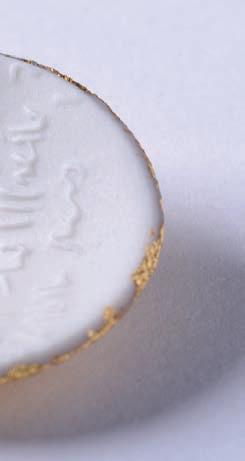
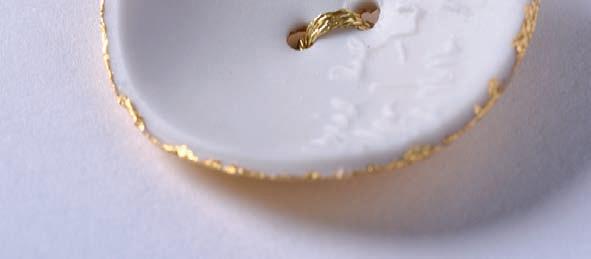
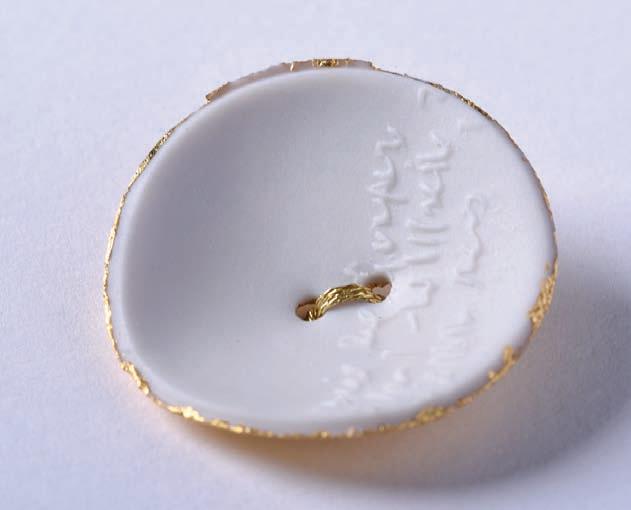
Gold-plated sterling silver buttons by the Chinese dissident artist Ai Weiwei (b. 1957) also have a personal meaning – representing the buttons found on the uniforms of the Chinese People’s Liberation Army. In 2011, Ai was

shows
imprisoned in China for 81 days for alleged tax evasion and the buttons are a reminder of the two uniformed guards who watched him day and night. ey will be sold as single buttons sewn onto an individually signed and numbered card and are expected to sell for up to £2,000.
Lead soldiers
It is no surprise buttons by Antony Gormley (b. 1950), who frequently uses his own body for his sculptures, have a
44 ANTIQUE COLLECTING
may be one of the smallest representations of an artist’s expression, as a new exhibition showcasing designs by Edmund de Waal and Antony Gormley
Above Edmund de Waal, Artists’ Buttons, 2023, Kettle’s Yard, photo Stephen Bond
Right Jennifer Lee, Artists’ Buttons, 2023, Kettle’s Yard, photo Stephen Bond
THE EXPERT COLLECTOR Artists’ buttons
personal touch, with his black porcelain designs including his ngerprint.
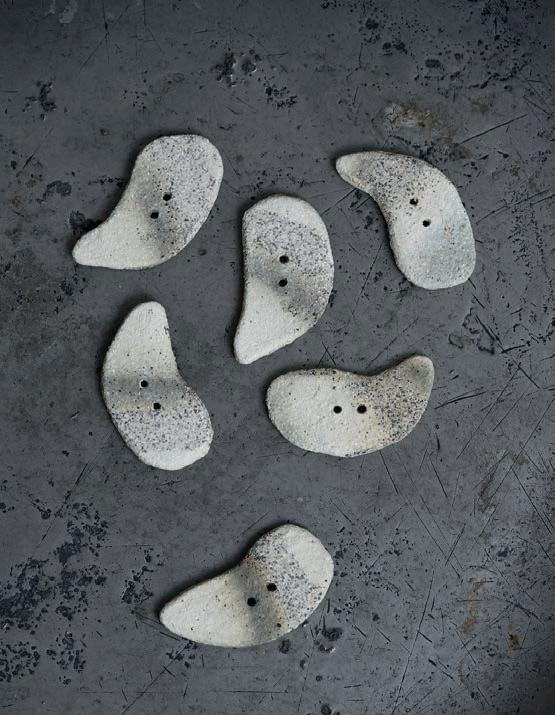
e former Turner prize-nominee, Cornelia Parker (b. 1956) has produced what she calls “subversive” buttons made from lead toy soldiers in reference to the role her German mother played as a nurse in WWII. She said: “ ey’re all maimed, lying on button cards as if they are wounded. I’ve drilled buttonholes in them, and then sewn them on to the cards with blood-like red thread.”
Artists’ Buttons will be on show in Loewe’s London store at 41 New Bond Street, London, W1S 2SQ from October 11 -15 available to buy at the Kettle’s Yard shop and online. All proceeds will support the new Jim and Helen Ede fund at
Lucie Rie’s button making
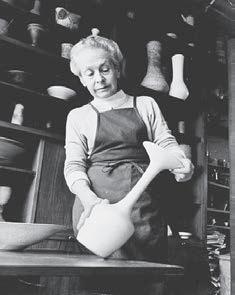
Kettle Yard’s project draws inspiration from the exhibition, Lucie Rie: The Adventure of Pottery held recently at the gallery and currently on at the Holburne Museum in Bath (until January 7).
Known as one of the greatest potters of the 20th century, Rie had a lesser-known stint as a button maker. A Jewish refugee, Rie fled Austria in 1938, where she had already made a name for herself as an award-winning ceramicist. Having applied for a work permit through the German-Jewish Aid Committee, her plan to set up a business was vetoed by the Board of Trade which argued producing pots wasn’t important war work. With her options severely curtailed Rie had to content herself making buttons, and other accessories. Her pieces were custom-made for the fashion trade which could not source industriallymade items under rationing restrictions.
Bimini buttons


A large button-making opportunity presented itself when Rie was approached by Fritz Lampl, a fellow affluent Viennese émigré who, like her, gained a British visa based on entrepreneurship. In Vienna, Lampl was the head of the Bimini glassworks which he successfully re-established in London. In England he registered a trademark in the shape of a flowerpot but, unable to register the name Bimini chose the title Orplid. Taking up premises in Soho, he set about producing tableware and figurines for the luxury market. He also started to make glass buttons, both in blown glass and pressed.
For the latter he used plaster casts of Roman coins supplied from the British Museum, and because pressing was relatively unskilled work, it gave some employment to many of his old friends from Vienna, including Rie.

There is debate about Rie and Bimini’s working relationship. Maureen Needham, from the Button Society, said: “Rather than making ceramic buttons at Bimini, it seems Rie made buttons in her own studio for Bimini to sell on.
“This is a much more probable scenario; the equipment required for melting glass is completely different from that used to fire ceramics. Such buttons would have the typical Bimini metal backplate applied.”



Her wartime button-making venture, at her home studio at Albion Mews, is represented in invoices for orders from 1941-1951. Most of the orders are briefly specified by quantities and pattern names such as Toronto or Knots. During this period Rie took on fellow Viennese émigré Hans Coper, who came to her as a penniless refugee with no experience in clay, but went on to become another great ceramicist.

‘The noted ceramicist De Waal, who is distantly related to Rie on his mother’s side, has made 180 buttons displayed on 20 cards with Rie herself as the theme’
ANTIQUE COLLECTING 45
Left Jennifer Lee, Artists’ Buttons, 2023, Kettle’s Yard, photo Stephen Bond
Right Lucie Rie in her studio in Albion Mews, reproduced with kind permission of the Crafts Study Centre, University for the Creative Arts
Below Rana Begum, Artists’ Buttons, 2023, Kettle’s Yard, photo Stephen Bond
Queen Victoria
Few people have in uenced the button industry as much as Queen Victoria. During her reign she set all the social trends and fashion, including button style. When her beloved husband Albert died in 1861, it triggered a period of mourning that lasted a quarter of a century. Overnight the black glass industry centred in the Gablonz area of Czechoslovakia went into overdrive as it produced black glass buttons to emulate the queen’s Whitby mourning jet. Each stage of the monarch’s reign was re ected in buttons – when she became Empress of India button makers used the symbol of paisley.
Collecting buttons
e history of buttons is a fascinating journey spanning thousands of years, with the tiny microcosms of fashion re ecting broader societal trends. From Roman times, when decorative fasteners were known as bulae, to the purely decorative designs worn by Regency dandies, buttons have been at the heart of human culture for millennia. Because some buttons are mini works of art in their own right, they also make an ideal focus for a collection. Ranging from Wedgwood to Archibold Knox, some of the best-known designers have made buttons.
Wedgwood and Boulton
With their small metal frames buttons were perfect holders for Wedgwood’s ceramic creations and, since the invention of jasperware in the 1700s, buttons were produced until the end of the 18th century. But it was the collaboration of Josiah Wedgwood (1730-1795) and the British industrialist Matthew Boulton (1728-1809) which produced some of the most sought-after buttons ever made.
As well as manufacturing everything from steam engines to small decorative items, Birmingham-born Boulton also produced metal mounts, including ormolu (golden or gilded brass or bronze) and steel mountings. A collaboration between the two rivals and friends saw the production of jasperware cameos in steel settings used in buttons, watch fobs and chatelaines.
e buttons were so popular they were copied by other potters and true Wedgwood buttons are both rare and expensive.
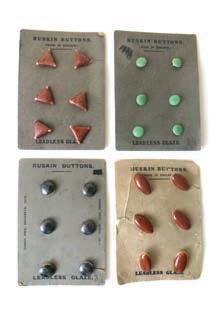


Picture buttons
1 A rare Wedgwood button mounted in Boulton steel
2 An 18th-century copper-rimmed Wedgwood button

3 Ruskin buttons are very collectable
4 Black glass buttons imitated the queen’s Whitby mourning jet
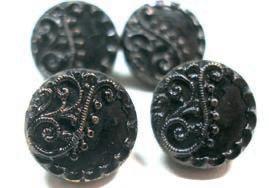
5 e paisley designed pays homage to Queen Victoria
6 e picture button depicts Yum-Yum from Gilbert and Sullivan’s e Mikado
7 A set of Cymric buttons by the designer Archibald Knox
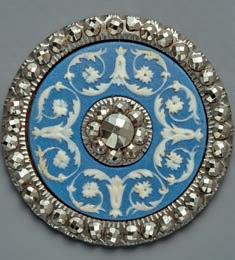
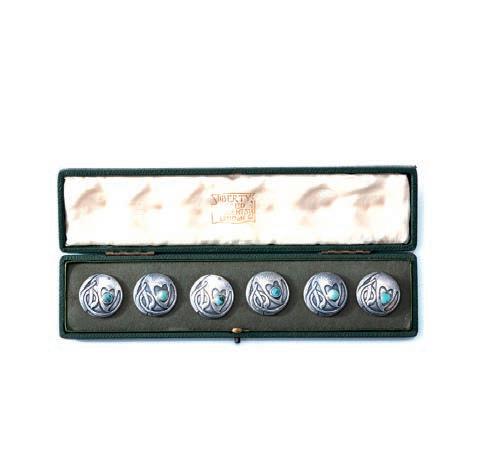
e Victorian era also gave rise to the “picture button” which commemorated any new play, song or even poem. e fashionable could show their approval for a new cultural event by wearing several buttons from it on their out ts. Every Wagner opera or Gilbert and Sullivan opera had a series of designs devoted to it. is brass button features the character Yum-Yum from the 1885 comic opera e Mikado. Favourite nursery rhymes and drawings by illustrators such as Kate Greenaway also feature on buttons.
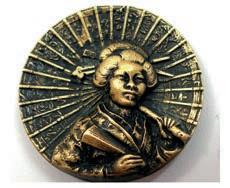
Ruskin Pottery buttons
In 1898, W. Howson Taylor, a British art potter in uenced by the arts and crafts movement and the art critic John Ruskin, set up the Ruskin Art Pottery in Smethick near Birmingham. e company experimented with glazes, producing results that were quite di erent from anything seen before.
Buttons made by the Ruskin pottery are very collectable. e earliest attempts were called sou e ware where the button is decorated in varying shades of one colour. In its later lustre ware a broader colour spectrum was used. Buttons after 1904 are marked Ruskin with earlier versions using the initial WHT and the mark of a pair of scissors.
Arts and crafts
Liberty’s 1899 range of Cymric jewellery – some of which was designed by Archibald Knox – featured sets of buttons in its trademark sinuous style, incorporating both the art nouveau and arts and crafts style. Almost all of the Cymric jewellery range was manufactured by William Hair Haseler of Birmingham and stamped WHH.
46 ANTIQUE COLLECTING
COLLECTING GUIDE Buttons
With a myriad of options on o er to the collector, Antique Collecting unbuttons a few of the most notable
1 2 3 4 5 6 7
Ceramic buttons in the mid 19th century were decorated with gold and silver overlays to embellish the central design
An Auctioneer’s Lot
sculptor and responsible for creating the Next of Kin memorial plaque for families of British service personnel who died during WWI.

Julia studied at Liverpool School of Art during the 1940s, specialising in ceramics before starting to teach the craft in various local colleges, including Liverpool School of Art, where she became head of ceramics – even counting John Lennon among her students.
By the mid-1970s, determined to plough her own furrow, she left teaching to set up as a professional potter.
Superb sgra to
Julia was particularly adept at sgra to, a decorative technique whereby a design is scratched into an underlying, un red glaze.
She was also a superb talent when it came to metallic lustre glazes. To me, her oral motifs and animal designs in blues, reds and greens, are reminiscent of pottery made in the Turkish town of Iznik from the late 1400s – a style which greatly in uenced the nest names of the arts and crafts movement including William Morris and the ceramicist William de Morgan.

Julia’s light has remained under a bushel for years but is starting to attract a dedicated collecting base from around the country and beyond.
Fans of Antiques Roadshow were treated to three of her chargers when the team visited Sefton Park earlier this year. One of the three, bought in Liverpool in the late ‘90s for £30, was given a price tag of £800-£1,000.
So it was no surprise when these beauties did so well in our saleroom last month. Keep an eye out for her work, it is nothing short of remarkable.
Unless you are a devotee of ceramics from the north of England the chances are you may not have come across the potter Julia Carter Preston (1926-2012), or her work, which is a shame because it is stunning and deserves a wider audience.
e reason could be that it is very much in the arts and crafts style, which was out of favour among the potting cognoscenti during her lifetime, when the fashion was for less ornate, sometimes dour, studio pottery.

She even had her application to be on the Crafts Council register turned down. But she didn’t care, she kept producing the pieces she loved for a local and appreciative audience and thank goodness she did.
She loved people to enjoy her work and was generous in giving it away or selling it for well below what it was worth. Fans of her work included Princess Margaret and Antiques Roadshow specialist Tom Wonnacott who opened an exhibition of her work at the Walker Gallery in 1999.
Glittering presence
Anyone on the arts scene in Liverpool in recent decades may have come across Julia who, with her red lipstick to match her hair and amboyant clothes, was as glittering as her pots.
In the 1950s she took a studio in the Bluecoat Chambers, Liverpool’s artistic complex which her father had been instrumental in setting up.
Julia was born in the city in 1926 and came from a wellknown local artistic dynasty. Her great-grandfather, William Preston, had been Mayor of Liverpool in the 1850s and her father, Edward Carter Preston (1885-1965), was a talented
ANTIQUE COLLECTING 47
‘Her work, very much in the arts and crafts style, was out of favour among the potting cognoscenti during her lifetime, when the fashion was for less ornate, sometimes dour, studio pottery’
Above left Julia Carter Preston (1926-2012). A large charger decorated with stylised fruit, foliage and birds design. 32cm diameter, it sold for £360 at Hansons’ recent sale
Right Julia Carter Preston (1926-2012). A large charger decorated with a stylised bird design. 30.5cm diameter, it sold for £250
A name not known to many, Charles Hanson salutes the Liverpool potter
Julia Carter Preston whose work struck a chord at a recent sale
TOP of the LOTS
An unusual Regency clock by the gentleman scientist Sir William Congreve 2nd Baronet (17721828), whose principal invention was the Congreve Rocket, goes under the hammer on October 1 at Wilkinson’s in Doncaster with an estimate of £20,000-£30,000. Congreve inherited his title in 1814, when he also became comptroller of the Royal Laboratory bringing him to the attention of George III and his abiding interest in horological inventions. The clock’s crown is decorated with the Prince of Wales’ feathers and the Royal Arms below, with silvered signature plaque dated September 1808.

Some 90 paintings by the west Yorkshire artist Raymond Booth (1929-2015), one of the greatest botanical illustrators of his generation, go under the hammer at Tennants Auctioneers in Leyburn on October 7.
Accepted into Leeds College of Art in 1946, Booth stuck to his guns of pinpoint accuracy, despite criticism from his tutors for rejecting the modernist principles of the day. His career began in earnest when he submitted work to a Royal Horticultural Society exhibition. Booth rarely painted any plant he had not observed through at least one growing cycle.
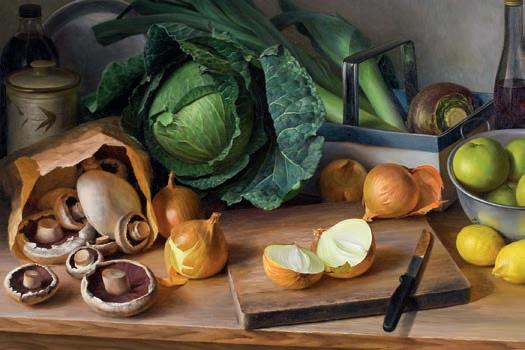
The Scottish art sale at Bonhams Edinburgh on October 11 features work by the “missing Colourist”, John Maclauchlan Milne (1886-1957).
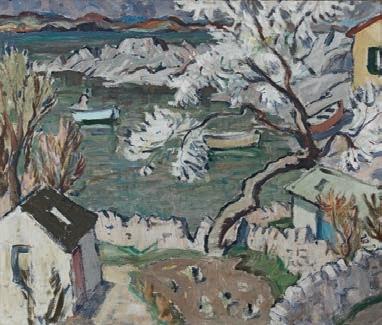
Like other leading Scottish inter-war artists – including the ‘the Scottish Colourists’, Samuel John Peploe, Francis Campbell Boileau Cadell, George Leslie Hunter and John Duncan Fergusson – a large part of Maclauchlan Milne’s career was spent in France. Like them, he was influenced by the vibrant work of the Fauvists, adopting their use of bold colour and free brushwork. His oil on canvas, Arran, is estimated at £20,000-£30,000 in the sale.


Trophies awarded to a pioneering duo of mother and daughter racehorse owners go under the hammer at the West Sussex auctioneers Bellmans’ sale on October 10-12. They come from the collection of Countess Bunny Esterházy, who died in December 2021 aged 82, who was a well-known figure in international society in the mid-1950s and in the racing world. The countess had notable success in the 1970s and 1980s as a racehorse owner, following in the footsteps of her mother “Etti” – the only female owner to win the Derby twice. Bunny’s horses won at Ascot in 1975 and 1983, as well as winning the Selsey Stakes at Goodwood in 1981. The collection is expected to achieve £47,000- £55,000 in total.
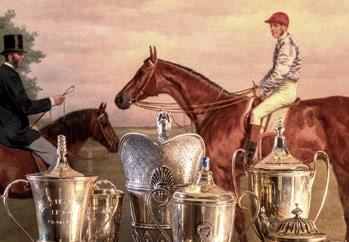

A large single-owner collection of ceramic felines by the cat artist Louis Wain (1860-1939) goes on the block at Kinghams Auctioneers, Moreton-in-Marsh, on October 6.
Amassed over many years by a Cotswold-based fanatic, the collection of model cats and tea wares, includes eight rare and highly-collectable British-made ‘futuristic’ or ‘cubist’ cats created between 1910 and 1912.
One of the rarest is the ‘Lucky Sphinx’ cat, an example of which appears in the collection. Estimates range from £80 to more than £500, with the group expected to fetch up to £20,000.
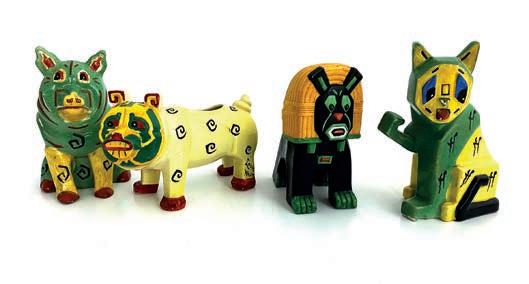
48 ANTIQUE COLLECTING
Above e rare Regency clock was made by Sir William Congreve 2nd Baronet
Above Four felines from the single-owner collection of cats by Louis Wain
A rare Regency clock and a large collection of ceramic cats by Louis Wain are all up for sale this month
ANTIQUES UNDER THE HAMMER Lots in October
Above John Maclauchlan Milne (1886-1957), Arran, oil on canvas, it has an estimate of £20,000-£30,000
Above e collection of trophies is expected to sell for £47,000-£55,000
Below Raymond Booth (1929-2015), From the Vegetable Garden, 1990, oil on board, has an estimate of £1,500-£2,500
Items from the celebrated furniture scholar and author Clive Wainwright (1942-1999) go under the hammer in Essex this month.

Some 42 lots of 19th and early 20th-century design, many in the gothic revival style, make up the sale at Sworders Stansted Mountfitchet on October 31.
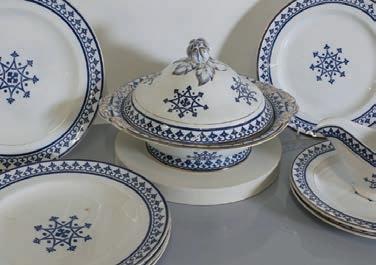
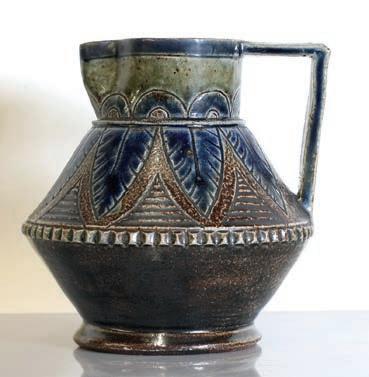
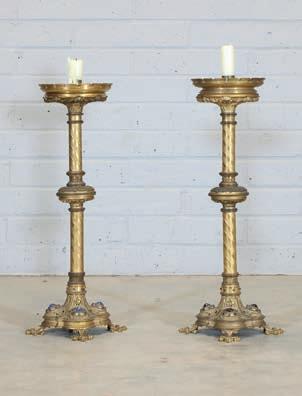
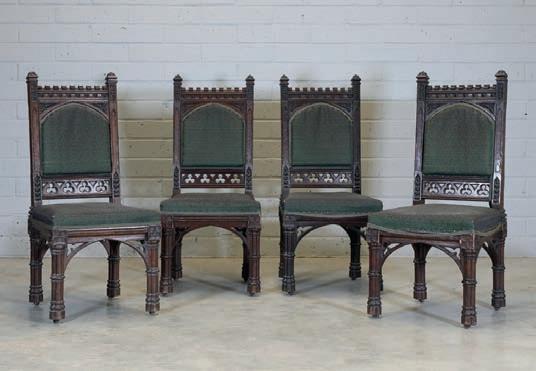
After specialising in science at school Wainwright joined the plastics division of ICI in Welwyn Garden City. While destined not to succeed in industry, Wainwright received intellectual succour as a member of the Victorian Society and, in 1966, joined the V&A as an assistant. Before long the furniture of Augustus Welby Northmore (A.W.N.) Pugin, William Burges and other architect-designers of the 19th century became an obsession. He learnt under the mentorship of Charles Handley-Read (1916-1971), the architectural writer and collector considered the first serious 20th-century student of the work of Burges.
Wainwright soon advanced to head of the V&A’s department of furniture and woodwork, and it is for this role he is best remembered.
Always distinctive in his beard and tweed suit, he was also central in transforming the Palace of Westminster from the down-at-heel building it had become in the 1970s into a showcase of Victorian design. An oak chest in this month’s sale by Pugin (top right) is similar to one from the Palace of Westminster.
The Romantic Interior
Wainwright’s interest in the gothic and the growth of antiquarianism in Britain was explored in his 1989 publication The Romantic Interior: The British Collector at Home 1750-1850. Using five houses and collectors including Horace Walpole’s Strawberry Hill; Fonthill Abbey, owned by William Beckford from 1796-1822; and Sir Walter Scott’s Abbotsford, Wainwright explored the concept of collecting and changes in taste.
Clive and his wife Jane furnished their early Victorian Clerkenwell home in a contemporaneous style and it is following Jane’s decision to downsize – and donate the property to the Landmark Trust – that much of the contents will be sold.
Highlights comprise pieces once in the collection of Charles Handley-Read, including a set of four gothic chairs and a French oak open bookcase in the same style, both acquired at the Sotheby’s sale of HandleyRead’s collection in 1978.
1 Augustus Welby Northmore Pugin, an oak chest of two short and three long drawers, purchased from Michael Whiteway and similar to those in the Palace of Westminster, has an estimate of £400-£600 2 A.W.N. Pugin for Minton, Stoke-on-Trent, c.1850, pottery dinnerware in the ‘gothic’ pattern printed in blue with a gilt line on lead glazed earthenware, comprising a vegetable tureen and cover, four dinner plates, three side plates, a sauceboat and a platter. It has an estimate of £150-£250 3 A French gothic oak open bookcase, mid 19th century, decorated with a carved eur de lys and owering foliage. It has an estimate of £2,000£4,000 4 A set of four gothic oak single dining chairs, in the manner of William Atkinson, purchased from Sotheby’s 1978 sale of the Charles Handley-Read collection, has an estimate of £300-£500 at this month’s sale 5 A pair of 19th-century brass candlesticks, probably Italian, with quatrefoil bases set with coloured ‘stones’ on paw feet, has an estimate of £400-£600 6 A stoneware jug by Robert Martin, c.1880, inscribed R.W. Martin, Southall & 212 has a guide price of £200-£400

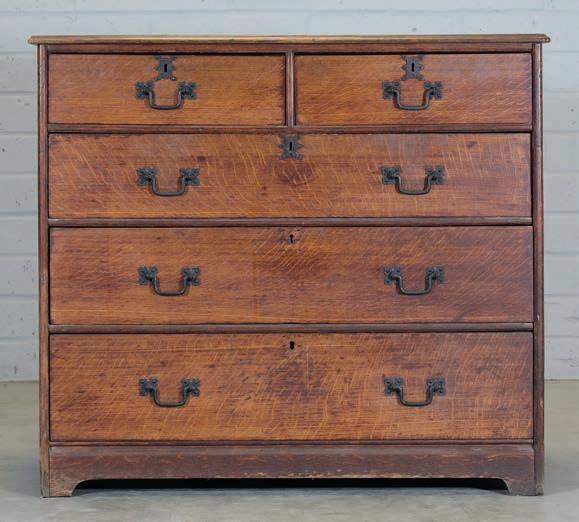
ANTIQUE COLLECTING 49 1 4 5 2
Above Clive and Jane Wainwright
Discover the secrets of Antiques Roadshow expert Geo rey Munn, or learn how the rich and famous travelled in the golden age of railways with the latest titles from our sister publisher ACC Art Books
BOOK OFFERS UP TO 35% DISCOUNT
AUTOCHROME - FASCINATION OF EARLY COLOUR PHOTOGRAPHY
BY DR. MARIA REITTER-KOLLMANN, DR. ALFRED WEIDINGER
ISBN 9783961714872
RRP £55.00
OFFER PRICE £35.75
A comprehensive, exciting, and richly illustrated insight into the technology and history of early colour photography. The Austrian Photo Museum in Linz shows its fantastic autochrome collection including works by the inventors of the process themselves.
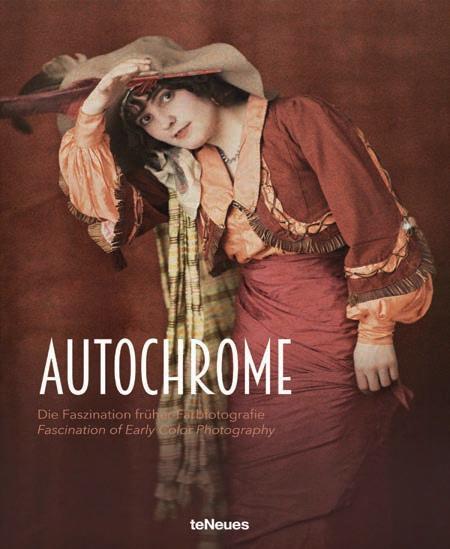
LUXURY TRAINS - SPLENDOUR, ELEGANCE & EXTRAVAGANCE
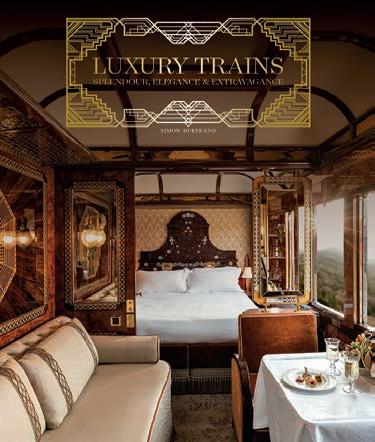 BY SIMON BERTRAND
BY SIMON BERTRAND
ISBN 9781788842235
RRP £45.00
OFFER PRICE £29.25
Discover opulent carriages, beautiful routes, great decorators and the technical details of the most decadent trains from around the globe, including the Venice Simplon - Orient-Express, the British Royal Train, Le Train Bleu, the Pride of Africa, the Eastern and Orient Express & many more.
A TOUCH OF GOLDTHE REMINISCENCES OF GEOFFREY MUNN
BY GEOFFREY MUNN
ISBN 9781788841979
RRP £25.00
OFFER PRICE £16.25
A Touch of Gold is the life and work of Antiques Roadshow presenter and jewellery expert Geoffrey Munn. A witty and star-studded memoir that recounts Munn’s journey from rural England to the heights of the art world. Contains Munn’s encounters with royalty and celebrities, from HM Queen Elizabeth, The Queen Mother, Frank Sinatra and Bing Crosby to Elton John.
ORDER NOW!
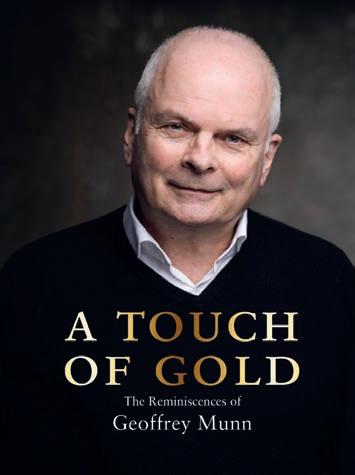
50 ANTIQUE COLLECTING
SUBSCRIBER EXCLUSIVE
Email uksales@accartbooks.com, or call 01394 389950. Postage to UK addresses is £6, call for overseas rates.
MODERN JAPANESE GARDENS
BY SHINOBU SAWADA, TADAFUMI AOZA, LOUISE
NORDSTRÖM
ISBN 9781788842228
RRP £35.00
OFFER PRICE £22.75
Modern Japanese Gardens features the work of 20 contemporary Japanese garden design masters, mixing tradition with a modern aesthetic in settings as varied as private houses, temples and cafés. Introduction by lauded designer Chisao Shigemori, grandson of legendary garden master Mirei Shigemori.
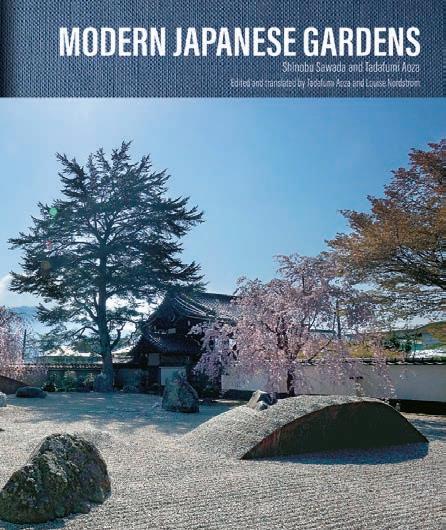
THE ARCHITECTURE OF SIR EDWIN LUTYENSVOLUME 2: GARDENS, DELHI, WASHINGTON
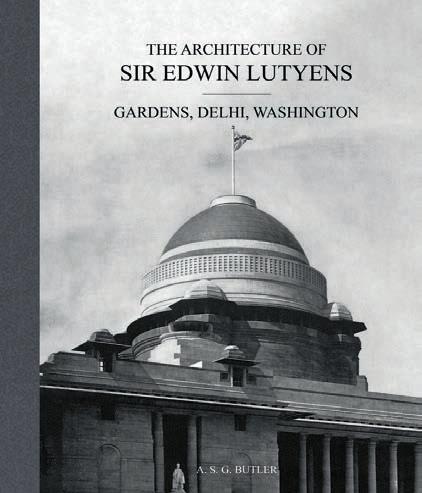
 BY A.S.G. BUTLER, GEORGE STEWART, CHRISTOPHER HUSSEY
BY A.S.G. BUTLER, GEORGE STEWART, CHRISTOPHER HUSSEY
ISBN 9781788842303
RRP £125.00
OFFER PRICE £81.25



One of the most famous architects of the 20th century, this meticulous second volume of Lutyens’ work presents his garden designs, town planning, and monumental public buildings. Includes the Johannesburg Art Gallery, the Washington Embassy and the Viceroy’s Palace in New Delhi.
LOST IN THE BEAUTY OF BAD WEATHER
BY CHRISTOPHE JACROT
ISBN 9783961714971
RRP £55.00

OFFER PRICE £35.75
The great French photographer of melancholy creates a touching world of images. Perfection and poetry - a unique look at extreme weather conditions.

ANTIQUE COLLECTING 51
Ebony & Ivory
Christopher Payne, the author of a new book chronicling 100 years of British furniture, reveals the piece he would most like to own
In more than 50 years of assessing antique furniture, including my time as a director of Sotheby’s and as a regular on the BBC’s Antiques Roadshow, there have inevitably been many pieces I have coveted. One that immediately springs to mind is a bureau cabinet made by Michael Kimmel in c. 1750 for Augustus III – and one of the most magni cent pieces of cabinet work, now in the V&A, which I had the pleasure of cataloguing and which carries the letter ‘H’ number in my handwriting under one of its drawers.
Above Christopher’s favourite piece: an ebony and ivory-inlaid writing table, almost certainly made in the workshops of Jackson & Graham, inspired by the chi onnière supplied by Jean-Henri Riesener (1734-1806) to MarieAntoinette in c.1781 (private collection)
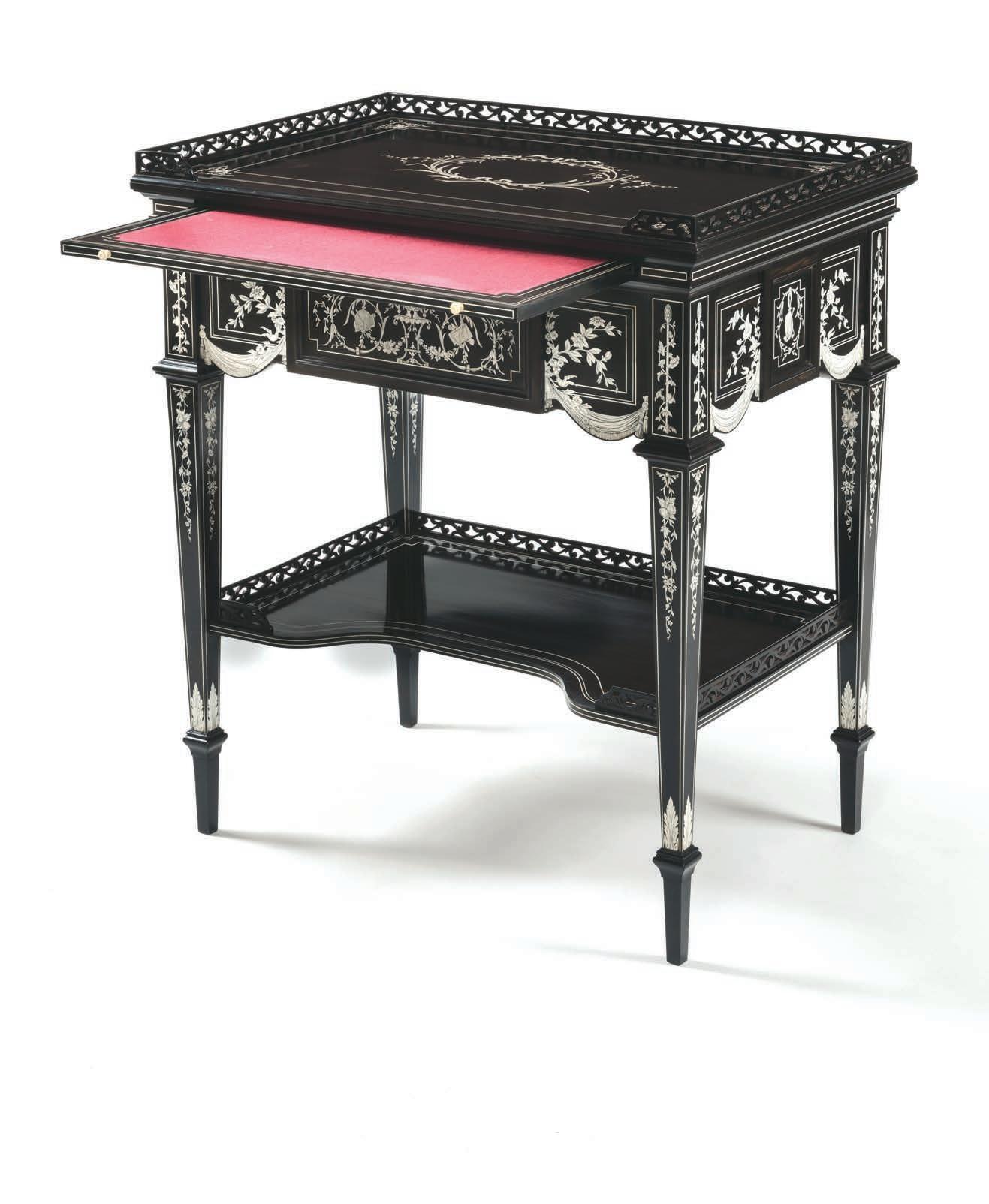
Researching my recent book British Furniture 18201920: e Luxury Market there have been some wonderful trouvailles by well-known makers whose names will be familiar to furniture collectors, including such leading lights as Collinson & Lock, Edwards & Roberts, Gillows, Holland, Maples and Morris & Co.
But the absolute number one in my current top 10 may well surprise readers.
Jackson & Graham
It is by a maker whose name may not be known to many – the Victorian company of Jackson & Graham. One of the founders of the rm Peter Graham (1811-1848) was a native Cumbrian although details of his partner, omas
52 ANTIQUE COLLECTING
THE EXPERT COLLECTOR Jackson & Graham
Jackson (1807-1848) are less known.
e piece in question is an ebony and ivory-inlaid writing table, almost certainly made in the workshops of Jackson & Graham, which was inspired by a chi onnière supplied by Jean-Henri Riesener to Marie-Antoinette queen consort of King Louis XVI in c.1781.

Queen Victoria
e rm had extensive showrooms in Oxford Street, which, as well as supplying high-quality furniture also o ered soft furnishings, an increasing trend adopted by all the major metropolitan and provincial rms. eir work was supplied to, among others, Queen Victoria for Buckingham Palace, the Khedive of Cairo and even the King of Siam.
Jackson & Graham rst exhibited at the Crystal Palace Exhibition in London in 1851. At this stage their work, although remarkable for its quality and nish, can only
Left A detail from the writing table highlighting an innovative trompe l’oeil technique in ivory to simulate not only marquetry but also the highly complex three-dimensional gilt bronze mounts of the original made for Marie Antoinette (private collection)
Below left e marquetry table was made by Jackson & Graham for 16 Carlton House Terrace between 1867 and 1870
Below One of two recently identi ed marquetry tables inlaid into a satinwood ground. It was probably designed by Owen Jones for Alfred Morrison, almost certainly made by Jackson & Graham for 16 Carlton House Terrace between 1867 and 1870
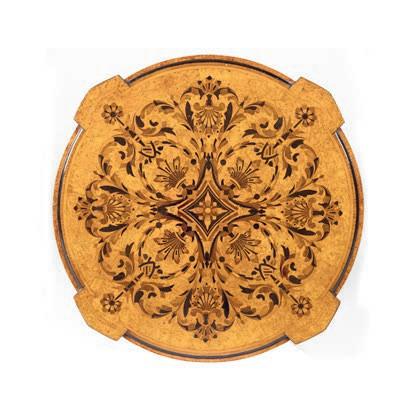
Owen Jones
Much of Jackson & Graham’s success was due to their employment of talented professional designers. Among those who worked for the firm were Bruce Talbert, Christopher Dresser and the British architect, orientalist and decorator Owen Jones (1809-1874) whose 1856 book The Grammar of Ornament and later The Grammar of Chinese Ornament in 1866 had a great influence on furniture design of the day.
From 1862-1864, Jackson & Graham was commissioned to furnish new rooms at the country house of Alfred Morrison of Fonthill, in Wiltshire. They were also commissioned to work on Morrison’s London home, Carlton House Terrace three years later.
Alfred was the son of the successful entrepreneur, haberdasher and MP, James Morrison, who had, years before, entertained the young Owen Jones at his family home. So it was no surprise when Jones was called on, along with Jackson & Graham, to design the new rooms.
Two recently-discovered tables (one of which can be seen below) show a style in complete contrast to Jackson & Graham’s ivory inlaid furniture. Both reflect Jones’ highly-stylised and radical new form, embracing his love of the “Mauresque”, drawing inspiration from the Alhambra Palace in Granada.
One of the tables is inlaid on a satinwood ground, with the other walnut. The maker has chosen different methods of top support to the undersides.
Posthumous exhibition
It is probable that the tables were made as companion pieces to a suite of furniture supplied by Jones to Alfred Morrison and are comparable to an armchair and a centre table now in the Art Institute of Chicago.
In 1874, the year of Jones’ death, there was a posthumous tribute to him at the London International Exhibition. While there are no photographs of the exhibition, and the catalogue is not illustrated it does tantalisingly list ‘Forty Drawings, in Three Portfolios. Exhibited by Messrs. Jackson & Graham’ with number 198 being an “Inlaid Table (Drawing Room) …. Exhibited by Mr. Alfred Morrison”, unfortunately not a full enough description to allow a positive identification.
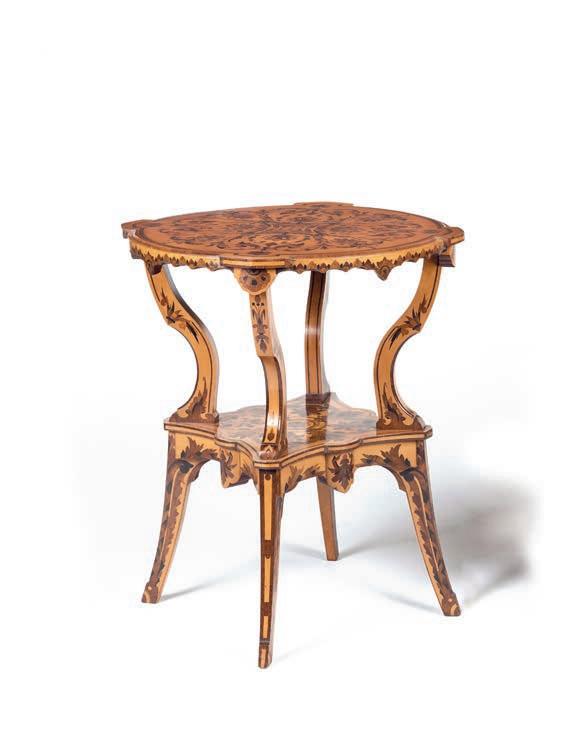
ANTIQUE COLLECTING 53
‘The desk’s blackand-white detail is a startling and innovative modernisation of the dressing table now at Waddesdon Manor, made in c. 1781 by Jean-Henri Riesener (1734-1806) for MarieAntoinette’
THE EXPERT COLLECTOR Jackson & Graham
Above e only known signed piece of furniture by Jackson & Graham, detail from the vitrine, image courtesy of the Trustees of the Cecil Higgins Art Gallery ( e Higgins Bedford)]
Left An ebonised display cabinet with ivory inlay, possibly designed by Owen Jones and the only piece of Jackson & Graham furniture on record with the signature of Peter and Forster Graham, partners in the rm. Part of the Jackson & Graham commission from Alfred Morrison, it is, uniquely, dated ‘1866’, image courtesy of the Trustees of the Cecil Higgins Art Gallery ( e Higgins Bedford)
be described as ‘High Victorian’ employing the skills of fashionable designers such as Alexandre Eugène Prignot, Hugues Protât and even the celebrated sculptor Carrier-Belleuse.


eir cooperation with the best Paris rms was sealed by the inclusion, in 1851, of a large bronzemounted ebony-veneered display cabinet by the bronze foundry of Ferdinand Barbedienne.
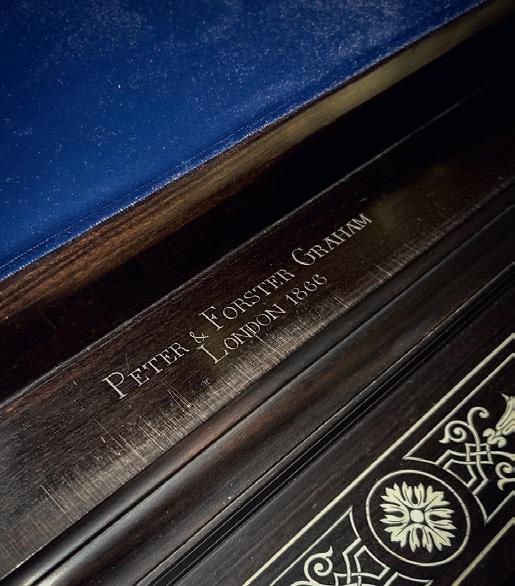
High Renaissance style
For the 1867 Paris Exposition, as well as a rare, signed display cabinet (left), Jackson & Graham chose to show a large hardstone-encrusted cabinet in the High Renaissance style (right).
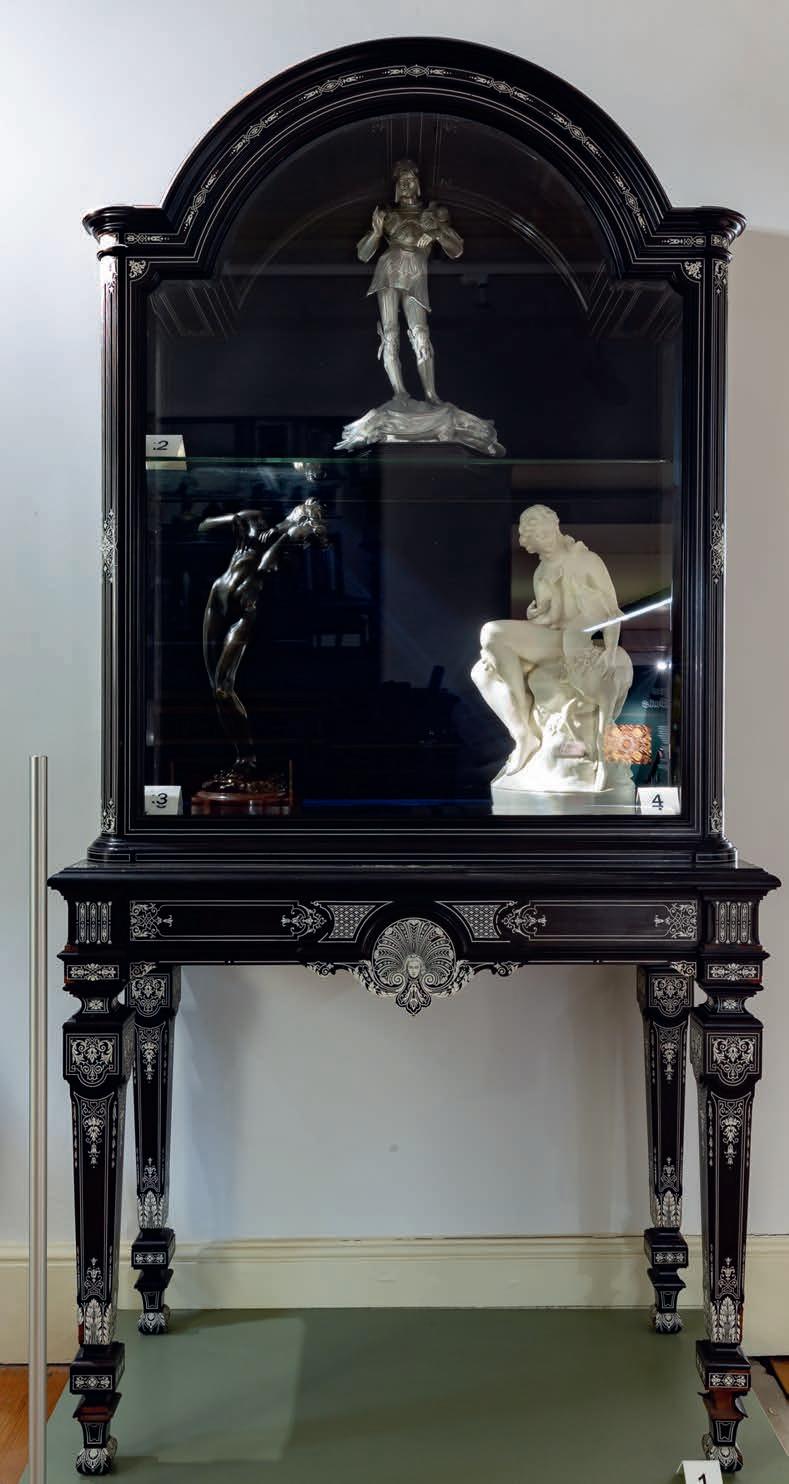
It was designed by the French-born Alfred Lormier, Jackson & Graham’s principal designer, whose misspelt name is often confused with the Scottish designer, Sir Robert Lorimer (1864–1929).
e cabnet was made by one of the best ivory workers at the rm – a Danish immigrant called Ole Petersen who died aged 39 in 1876. According to Peterson’s obituary he had ‘for many years past been almost exclusively engaged upon the exhibition work of Messrs. Jackson & Graham’.
Jackson & Graham were clearly under enormous pressure to nish their exhibits on time. So much so that they were only able to show the lower portion and the cabinet failed to sell.
Four years later it was shown in completed form at the 1871 International Exhibition in London. George Wallis, the keeper of the art collections at the South
54 ANTIQUE
COLLECTING
Kensington Museum, later V&A, wrote: ‘ e CABINET… will be classed amongst the most admirable specimens of its class: perhaps no country, in our time, has produced a work so perfect..”
£5m today
However, it again failed to nd a buyer, probably because of a combination of two factors: cost and a waning British interest in large, Renaissance-style cabinets.
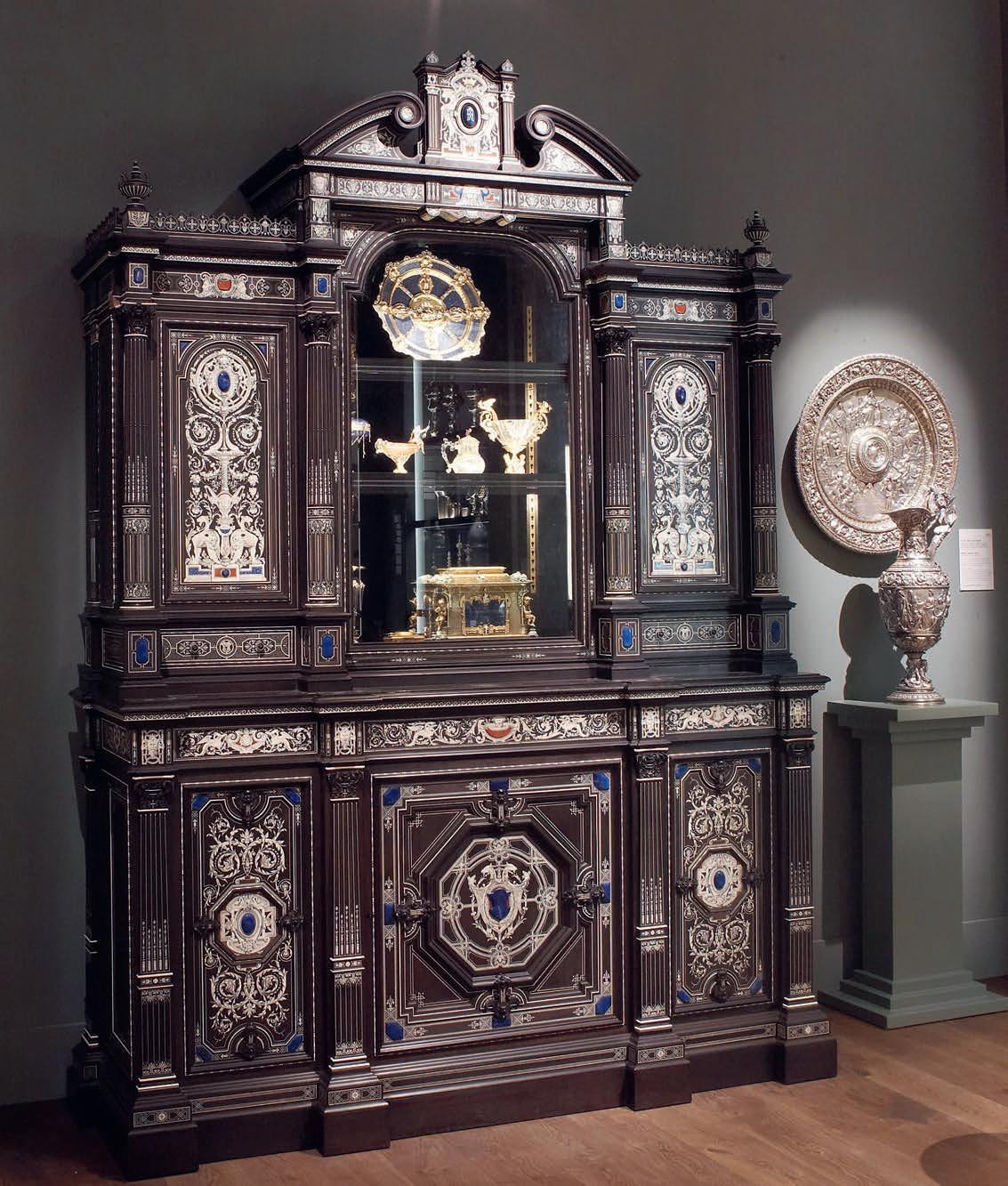
Sent abroad again, this time to Vienna for the 1873 World’s Fair, it was eventually returned to Jackson & Graham in London. Intriguingly, for such a ne piece
that would have taken countless hours to make with a considerable outlay of materials and time, the precise circumstances surrounding the commission are uncertain.
ere was speculation that it was commissioned by the future Earl of Bective (1844–1893) to celebrate his marriage to Lady Alice Maria Hill in 1867. e cost of the cabinet is seemingly unparalleled at £4,000, the equivalent of close to £5m today. However, this does not square with the fact that the cabinet was shown again in London and Vienna over the next six years, and eventually sold at auction for 500 guineas.
ANTIQUE COLLECTING 55
Above A High Renaissance cabinet in ivory and ebony designed by Alfred Lormier and made by Ole Petersen for Jackson & Graham. e locks are stamped ‘Chubb & Co., Makers to Her Majesty, No. 596210’, image courtesy of Galerie Neuse
THE EXPERT COLLECTOR Jackson & Graham
My Favourite Piece
And so we come to another piece which must be from the same workshops of Jackson & Graham – the little ebony and ivory-inlaid writing table, seen on the opening page, and one of the most fascinating examples of British furniture made in the French idiom.
e black-and-white detail is a startling and innovative modernisation of the dressing table now at Waddesdon Manor, made in c. 1781 by Jean-Henri Riesener (17341806) for Marie-Antoinette.
Riesener was one of the greatest French cabinetmakers of all time. From humble beginnings as a German immigrant in Paris, he found fame through the delivery of a magni cent roll-top desk to Louis XV in 1769 and went on to become Marie-Antoinette’s favourite cabinetmaker, supplying the queen and the court of Louis XVI with sumptuous furniture of superb quality.
Revolutionary sales
Dispersed during the revolutionary auctions, by c. 1852 the original table had found its way into the collection of the 10th Duke of Hamilton whose wealth was boosted by marriage to daughter of the richest commoner in England, William Beckford. ere were two occasions as to when the ‘copy’ might have been made. e rst opportunity was when the original desk was exhibited on loan to the South Kensington Museum as exhibit number 826 in 1862, the description and provenance in an unillustrated catalogue. e second was when it was o ered on behalf of the 12th Duke’s sale of part of the contents of Hamilton
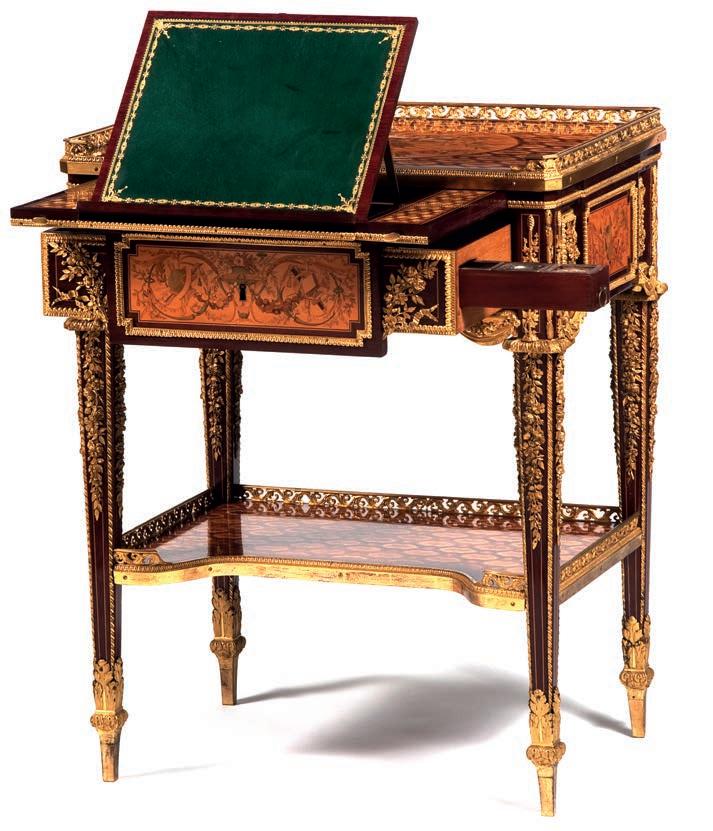
Above e original table made by the Parisian ébéniste Jean-Henri Riesener (1734-1806) for Marie-Antoinette in c. 1781. Veneered with detailed marquetry trophies emblematic of Poetry and the Arts, the gilt-bronze mounts attributed to the gilder Francois Remond (Waddeson Manor)
Palace on June 20, 1882, as lot 303, where it was purchased by the dealer Samson Wertheimer on behalf of Baron Ferdinand de Rothschild and is now at Waddesdon Manor.
Striking inlay
e 1882 auction price was an astonishing £6,000, far and above other furniture at the auction. e Jackson & Graham interpretation, made by Ole Petersen, is not dated, all we have to go on is the lock stamped simply ‘VR’ but this author’s guess it was in the 1860s, at the height of the rm’s production and audacity.
With superb cabinet work, the maker has echoed the ‘ormolu’ of the original in two-dimensional form, with beautiful and striking inlaid and engraved ivory interpreting the original marquetry. Even the pierced ebony gallery meticulously copies the design of the original, but in ebony.
Left An engraving of lot 303 from the 1882 catalogue of the Hamilton Palace auction, illustrating the original table supplied by Riesener to MarieAntoinette in c.1781, author’s image 20% SAVE OVER
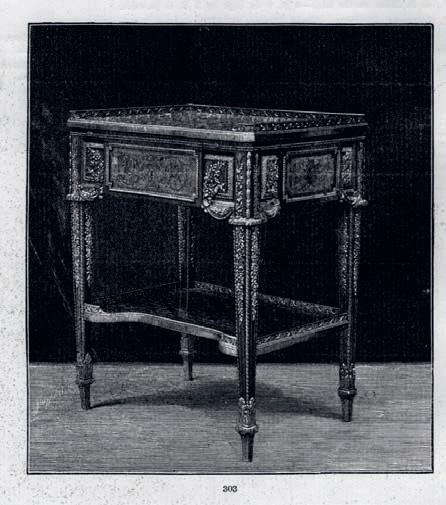
Christopher Payne is the author of British Furniture 1820-1920: e Luxury Market which, decade by decade, charts the century’s main stylistic periods including gothic revival, rococo revival and art and crafts. Published by ACC Art Books and priced £125, subscribers can buy the book for just £95 plus £6 p&p. To order a copy email uksales@accartbooks. com or call 01394 389950.
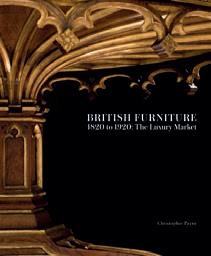
56 ANTIQUE COLLECTING
‘The firm flourished with large, extensive showrooms in Oxford Street which, as well as inventive, high-quality furniture, included soft furnishings, an increasing trend adopted by all the major metropolitan and provincial firms. Their work was supplied to Queen Victoria for Buckingham Palace, the Khedive of Cairo and, among others, the King of Siam’
FAIR NEWS
Winter magic
With Christmas firmly in mind, the Winter Art and Antiques Fair opens its doors at the west London location of Olympia from October 30 to November 5.
Throughout the seven-day event established dealers present an array of pieces, from ancient to contemporary, including classic and 20th-century jewellery, art deco, glass, mirrors, silver, furniture, art, Asian objects and stunning “one-offs”.
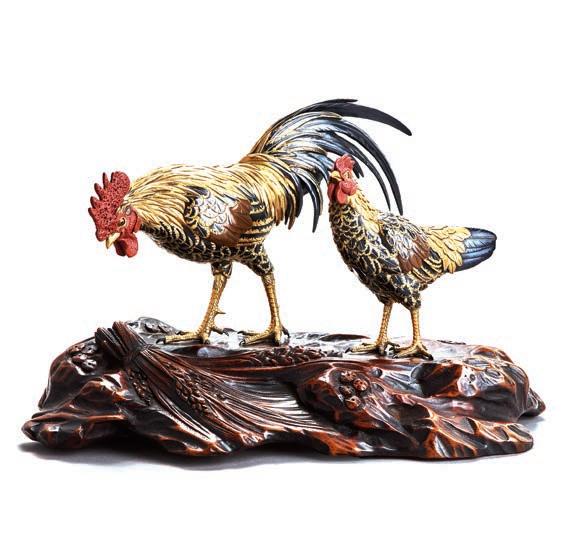
Fair director, Mary Claire Boyd, said: “Each year, we bring together the finest dealers to showcase their curated collections. From ancient artefacts to modern masterpieces, there is something for seasoned collectors and first-time buyers alike at the Olympia Fair.”
The fair runs alongside the Spirit of Christmas Fair, in the grand hall at Olympia, promising extra seasonal sparkle.
Battersea power
One of the longest-running and most popular of the capital’s antiques fairs returns to its specially-built pavilion in Battersea Park this month. The Decorative Fair, running from October 3-8 brings together 135 of the country’s best dealers in decorative antiques and 20th-century design.
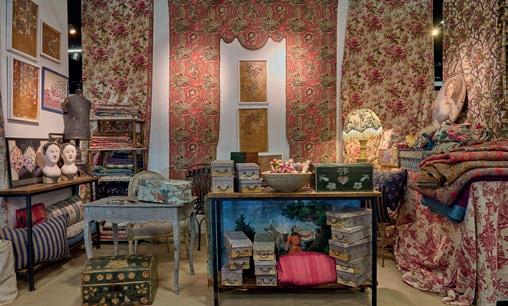
This autumn’s outing will also welcome the Tribal Art London fair taking place on a mezzanine stage. Both dedicated collectors and the interiors community make a beeline to Battersea three times a year to source stand out pieces from the fair which has been running since 1985.
Clock this

A superb collection of antique clocks from the 18th to 20th century will be a major attraction at the Chester Decorative Antiques and Art Fair from October 20-22.
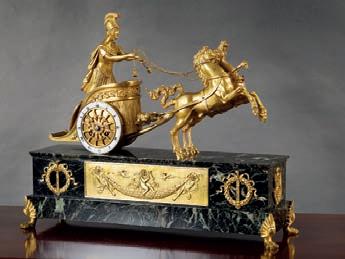
Taking place at the Grandstand Pavilion at Chester Racecourse, the exhibition is curated by specialist dealers Olde Time Antiques and also includes pieces from the art nouveau and art deco eras. One of the highlights is a clock by the French maker, Jean Vincenti, who started a highly-successful clockmaking workshop in 1823 in Montbeliard.
Double vision
The Pavilion of Art and Design (PAD) takes place in a marquee in the capital’s Berkeley Square at the same time as Frieze London and Frieze Masters, both taking place in Regent’s Park.
PAD London, from October 10-15, is the 15th edition of the event in the UK which celebrates contemporary and 20th-century design, with contributions from 62 galleries from 16 countries,
One of the highlights on offer is a bar cabinet in mahogany, brass, glass and mirror attributed to the Swedishborn furniture designer Otto Schulz (1882-1970) on offer from the Stockholm and London dealer, Modernity.
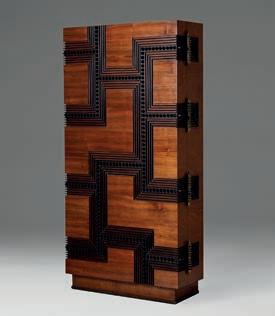
Frieze has confirmed details of its curated programme at Frieze London and Frieze Masters 2023, both taking place from October 11–15 in the famous park.
This year boasts a number of workshops and tours, as well as the highly-respected Frieze Masters Talks, for the fourth year by Dr Nicholas Cullinan, the director of the National Portrait Gallery.
Above Japanese bronze group of a rooster and hen signed Mitani Tokusei, Meiji period (1868-1912) on o er at this month’s fair from the Japanese specialist dealer Laura Bordignon
Above A bar cabinet in mahogany, brass, glass and mirror attributed to the Swedish-born furniture designer Otto Schulz (1882-1970) on o er from the Stockholm and London dealer, Modernity
Above A set stand from French antiques and textiles specialist Katharine Pole Antique Textiles
Above A French marble and ormolu chariot clock, signed Vincenti, c.1870, on o er from Olde Time Antiques priced £12,500
Keep up to date with this month’s best events with our guide to four top-notch fairs taking place in London and Chester
ANTIQUE COLLECTING 57 OUT AND ABOUT October
FAIRS Calendar
Because this list is compiled in advance, alterations or cancellations to the fairs listed can occur and it is not possible to notify readers of the changes. We strongly advise anyone wishing to attend a fair especially if they have to travel any distance, to telephone the organiser to confirm the details given.
LONDON:
Inc. Greater London
Adams Antiques Fairs
020 7254 4054
www.adamsantiquesfairs.com
Adams Antiques Fair, The Royal Horticultural Halls, Elverton Street, SW1P 2QW, Oct 8
Clarion Events Ltd
0207 3848147
www.olympia-art-antiques.com
Winter Art And Antiques
Fair, National Hall, Olympia, Hammersmith Road, London, W14 8UX, Oct 30 - Nov 5
Decorative Fair
www.decorativefair.com
020 7616 9327
Evolution London Battersea Park
London SW11 4NJ
Oct 3-8
Etc Fairs 01707 872 140
www.bloomsburybookfair.com
Bloomsbury Book Fair, Turner Suite at Holiday Inn, Coram Street, London, WC1N 1HT, Bloomsbury Book Fair, Oct 15
LAPADA Fair 020 7823 3511 lapadalondon.com
LAPADA Art & Antiques Fair Berkeley Square, London, W1J 6BR, Oct 1
Sunbury Antiques 01932 230946
www.sunburyantiques.com
Kempton Antiques Market, Kempton Park Race Course, Staines Road East, Sunbury-on-Thames, Middlesex TW16 5AQ, Oct 10, 31
SOUTH EAST & EAST ANGLIA: including Beds, Cambs, Essex, Hertfordshire, Kent, Norfolk, Suffolk, Surrey, Sussex.
Antique, Vintage and Collectables Fair
020 8776 0108
Rotary in Langley Park and
Bromley DeafPLUS, Hayes Free Church 111 Pickhurst Lane Hayes, Kent, BR2 7HU Oct 28
Blackdog Events
01986 948546
www.ablackdogevent.com
The Runway Flea Market, Debach Airfield, IP13 6QS, Grove Farm, Woodbridge, Oct 1
Dovehouse Fine Antiques Fair
07952689717
dovehousefineantiquesfairs.com
Antiques and Decorative Arts Fair, Dorking Halls, Reigate Road, Dorking, Surrey, RH4 1SG, Oct 22
Grandmas Attic Antique and Collectors Fairs
www.grandmasatticfairs.co.uk
Antique and Collectors Fair, Woking Leisure Centre, Kingfield Road, Woking, GU22 9BA, Oct 8
The Westgate Leisure Centre, Via Ravenna, Chichester, HPO19 1RJ, Oct 15
Love Fairs
01293 690777
www.lovefairs.com
Brighton Antiques, Collectables and Vintage Fair, Brighton Racecourse, Freshfield Road, Brighton, East Sussex, BN2 9XZ, Oct 22
Marcel Fairs
07887648255
www.marcelfairs.co.uk
Antique and Collectors Fair, Sarratt Village Hall, The Green, Rickmansworth, Herts WD3 6AS, Oct 8
Antique and Vintage Fair, Eagle Farm Road, Biggleswade, Bedfordshire, SG18 8JH, Oct 15
Rural Magpie
07803 052918
Great Chishill Antiques & Vintage Fair, Village Hall, Hall Lane, Great Chishill, Cambridge, SG8 8SH, Oct 1
SOUTH WEST including Berkshire, Buckinghamshire, Cornwall, Devon, Dorset, Gloucestershire, Hampshire, Isle of Wight, Oxfordshire, Somerset, Wiltshire.
Arun Fairs
07563 589725
Emsworth Antiques and Collectors Fair, Emsworth Community Centre, North Street, Emsworth, Hampshire, PO10 7DD, Oct 8
Grandmas Attic Antique and Collectors Fairs
www.grandmasatticfairs.co.uk
07960 502508
The Pavilion, Westover Road, Bournmouth, BH1 2BU, Oct 21-22
EAST MIDLANDS including Derbyshire, Leicestershire, Lincolnshire, Northamptonshire, Nottinghamshire, Rutland.
Arthur Swallow Fairs
01298 274493, www.asfairs.com
Antiques & Home Show
Lincolnshire Showground, Lincoln,LN2 2NA, Oct 3
Vintage Flea Market, EXO Centre, Lincolnshire Showground, Lincoln, LN2 2NA, Oct 15
IACF 01636 702326
www.iacf.co.uk
Newark International Antiques & Collectors Fair, Newark and Nottinghamshire Showground, Newark, Nottinghamshire, NG24 2NY, Oct 23
Newark International Antiques Runway Monday at Newark Antiques and Collectors Fair, Oct 5-6
Stags Head Events 07583 410862
www.stagsheadevents.co.uk
Antiques & Vintage Fair
Hodson Hall, Endowed Campus, Off A6, Loughborough, LE11 2AQ, Oct 1
WEST MIDLANDS including Birmingham, Coventry, Herefordshire, Shropshire, Staffordshire, Warwickshire, Worcestershire
Ludlow Castle Square Antique
Flea And Collectors Fair 07973 655903
Castle square, Ludlow, Shropshire, SY8 1AX Oct 1
WALES
Continiuity Fairs
01584 873634
www.continuityfairs.co.uk
Blingley Hall, Stafford Showground Ltd
Weston Rd, Stafford ST18 0BD Oct 21-22
Anglesey, Anglesey Agricultural Society
The Showground, Gwalchmai, Holyhead, LL65 4RW, Oct 14-15
NORTH including Cheshire, Cumbria, Lancashire, Northumberland, Tyne and Wear, Yorkshire.
The Northern Antiques Fair
www.northernfair.com
Tennants, Harmby Road, Leyburn, North Yorkshire DL8 5SG , Oct 1
V&A Fairs
01244 659887
www.vandafairs.com
Nantwich Town Square Antiques Market, Nantwich Square, Nantwich, Town Centre, Cheshire, CW5 5DH, Oct 21
Nantwich Civic Hall Antique and Collectors Fair, Civic Hall Nantwich Beam Street, Nantwich, Cheshire England, CW5 5DG, Oct 19
SCOTLAND
Glasgow, Antique, Vintage & Collectors Fair 07960 198409
Bellahouston Leisure Centre, 31 Bellahouston Drive, Glasgow, G52 1HH, Oct 15
IRELAND
Waterford Antiques, Vintage & Collectables Fair +353 85 862 9007
Gorey Antiques, Vintage & Collectables Fair
Amber Springs Hotel Wexford Road, Gorey, Oct 1
South Dublin Antiques
Vintage & More Fair
Royal Marine Hotel Marine Road, Dun Laoghaire, Oct 8
58 ANTIQUE COLLECTING
LOWESTOFTPORCELAINAUCTION
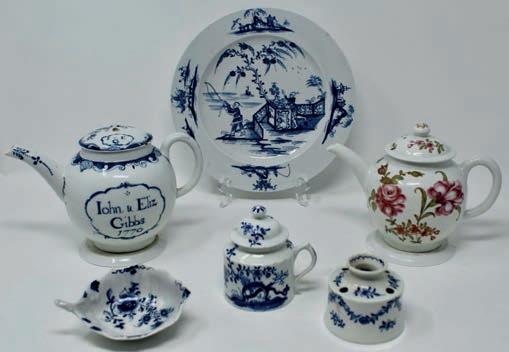
ZOËSPRAKE
Wednesday25thOctober2023,7pm
Viewing3-7pm
FORTHCOMING AUCTIONS
JEWELLERY, WATCHES & SILVER

THURSDAY 19 TH OCTOBER
FINE ART & ANTIQUES
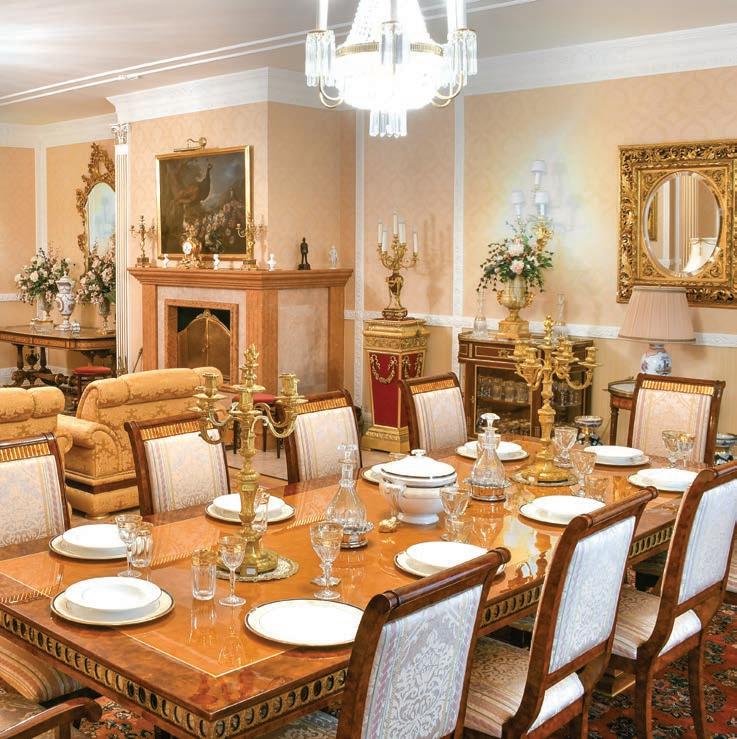


THURSDAY 28 TH SEPTEMBER
THURSDAY 26 TH OCTOBER
FINE WINE, CHAMPAGNE & WHISKY

We are now accepting entries for our June & July auctions. Get in touch for a complimentary auction estimate.
WEDNESDAY 18 TH OCTOBER
FORTHCOMING AUCTIONS
HotelVictoria,Lowestoft,NR330BZ
Guestauctioneer:ElizabethTalbotofTWGaze
website:www.lowestoftchina.co.uk email:lowestoftchina@gmail.com telephone:01986892736/07885773795
Brooch Estimate £80,000-£120,000 ALL ENQUIRIES 0207 431 9445 info@dawsonsauctions.co.uk www.dawsonsauctions.co.uk
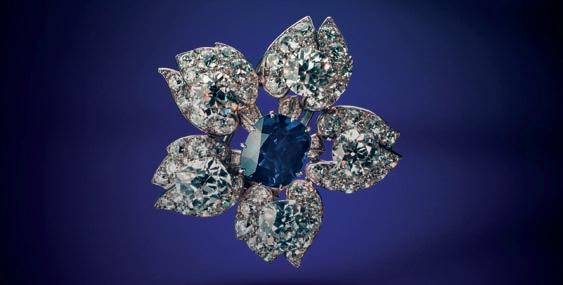
A Rare

ANTIQUE COLLECTING 59
Cartier Kashmir Sapphire & Diamond
AUCTION Calendar
Because this list is compiled in advance, alterations or cancellations to the auctions listed can occur and it is not possible to notify readers of the changes. We strongly advise anyone wishing to attend an auction especially if they have to travel any distance, to telephone the organiser to confirm the details given.
LONDON: Inc. Greater London
Adam Partridge
The London Saleroom, The Auction Room , Station Parade, Ickenham Road, West Ruislip HA4 7DL, 01895 621991
www.adampartridge.co.uk
Antiques and Fine Art, Oct 10
Bonhams
101 New Bond St, London W1S 1SR, 020 7447 7447
www.bonhams.com
Design, Oct 3
Sir Roger Moore the Personal Collection, Oct 4
Fine & Rare Wines, ends Oct 5
Making a Mark: A Fundraising Sale for the Quentin Blake Centre for Illustration, ends Oct 6
Modern and Contemporary African Art, Oct 12
Post-War and Contemporary Art, Oct 12
Pop X Culture, Oct 18
Expressionism: Germany, Austria and Beyond, Oct 19
Impressionist and Modern Art, Oct 19
Orientalist Art, Oct 25
Bonhams
Montpelier St, Knightsbridge, London, SW7 1HH, 020 7393 3900 www.bonhams.com
Votes for Women: the Lesley Mees Collection, ends Oct 3
Knightsbridge Jewels, Oct 11
Prints and Multiples, Sept 20
Silver and Objects of Vertu, Oct 18
The Marine Sale, Oct 18
Asian Art, Oct 30
Chiswick Auctions
Barley Mow Centre
Chiswick, London, W4 4PH
020 8992 4442
www.chiswickauctions.co.uk
Modern and Contemporary Prints and Multiples, Oct 3
Autographs and Memorabilia, Oct 10
Silver and Objects of Vertu, Oct 11
Worldwide Stamps and Postal History, Oct 17
Islamic and Indian Art, Oct 27
Chiswick Auctions
1Roslin Square, Roslin Road, London, W3 8DH www.chiswickauctions.co.uk
Photographica, Oct 18 Interiors, Homes and Antiques, Oct 24
Christie’s
8 King St, St. James’s, SW1Y 6QT, 020 7839 9060 www.christies.com
Modern British and Irish Art Evening Sale, Oct 18 Modern British and Irish Art Day Sale, Oct 19
Fine and Rare Wines (Online), Oct 11-24
Art of the Islamic and Indian Worlds including Rugs and Carpets, Oct 26
The Collector: London, Oct 13-31
Elmwood’s 101 Talbot Road London, W11 2AT, 0207 096 8933 www.elmwoods.co.uk
None listed in October
Forum Auctions
220 Queenstown Road, London SW8 4LP, 020 7871 2640 www.forumauctions.co.uk
Books and Works on Paper including Illustrated and Children’s Books (Online), Oct 5 Editions and Works on Paper
1500 - 2022, Oct 12
Books and Works on Paper (Online), Oct 19
Travel Books, Maps and Atlases (Online), Oct 26
Hansons Auctioneers
The Normansfield Theatre, 2A Langdon Park, Teddington TW11 9PS, 0207 018 9300
www.hansonsauctioneers.com
None listed in October
Lyon & Turnbull Mall Galleries, The Mall, St. James’s, London SW1Y 5AS, 0207 930 9115
www.lyonandturnbull.com
Select Jewellery (Live Online)
Oct 17
Select Watches (Live Online)
Oct 17
Travel and Vintage Posters (Live Online) Oct 25
Lalique, Oct 26
Avant Garde from 1890 to Now, Oct 26
Modern Made: Modern and PostWar Art, Design and Studio and Conemporary Ceramics and Craft, Oct 27
Noonans Mayfair
16 Bolton St, Mayfair, W1J 8BQ, 020 7016 1700 www.noonans.co.uk
The Roy Ince Collection of British Coins, date tbc
The Richardson Collection of George III Coins, Oct 3 World Coins, Oct 4 Orders, Decorations, Medals and Militaria, Oct 11
Brtish and Irish Banknotes, Oct 12 Historical Medals, Oct 17
Phillips 30 Berkeley Square, London, W1J 6EX, 020 7318 4010
www.phillips.com
20th Century & Contemporary Art Day Sale, Oct 12
20th Century & Contemporary Art Evening Sale, Oct 13
Picasso Ceramics (Online), Oct 26 Design, Oct 31
Olympia Auctions
25 Blythe Road, London W14 0PD, 020 7806 5541
www.olympiaauctions.com
Paintings, Works on Paper & Sculpture including the Artists’ Studio Sale, featuring works from Artists’ Estates, Oct 11
Modern and Contemporary African and Middle Eastern Art, Oct 25
Roseberys
Knights Hill, Norwood, London, SE27 0JD, 020 8761 2522
www.roseberys.co.uk
Traditional Home (Live Online), Oct 17
Modern Home (Live Online), Oct 17
Antiquities, Islamic and Indian Arts, Oct 30
Sotheby’s New Bond St., London W1A 2AA, 020 7293 5000
www.sothebys.com
The Now Evening Auction, Oct 12 Contemporary Evening Auction, Oct 12
Contemporary Day Auction, Oct 13
Modern and Contemporary African Art (Online), Oct 13-19
Fine and Rarest Wines (Online), Oct 5-19
20th-Century Art/ Middle East, Oct 24
The Orientalist Sale, Oct 24
Modern and Contemporary South Asian Art, Oct 24
The Edith and Stuart Cary Welch Collection, Oct 25
Arts of the Islamic World and India, Oct 25
The Edith and Stuart Cary Welch Collection, (Online) Oct 18-27
Modern and Contemporary Japanese Art, Oct 27
Timeline Auctions
23-24 Berkeley Square
London W1J 6HE
www.timelineauctions.co.uk
020 7129 1494
None listed In October.
SOUTH EAST AND EAST
ANGLIA: Inc. Bedfordshire, Cambridgeshire, Essex, Hertfordshire, Kent, Norfolk, Suffolk, Surrey, Sussex
Bishop and Miller
19 Charles Industrial Estate, Stowmarket, Suffolk, IP14 5AH, 01449 673088
bishopandmillerauctions.co.uk
The Oak Interior, Oct 18-19
Maritime, Exploration and Scientific, Oct 18
Bishop and Miller
Unit 12 Manor Farm, Glandford, Holt, Norfolk, NR25 7JP
bishopandmillerauctions.co.uk
None listed in October
Bellmans
Newpound, Wisborough Green, West Sussex, RH14 0AZ, 01403 700858
www.bellmans.co.uk
Wines and Spirits, Oct 2
Old Master, British and European Paintings, Oct 10
Antiques and Interiors, Oct 11-12
Fine Jewellery and Watches, Oct 12
The Seymour Stein Collection, pt. III, Oct 13
60 ANTIQUE COLLECTING
Burstow & Hewett
The Auction Gallery, Lower Lake, Battle, East Sussex,TN33 0AT, 01424 772 374 www.burstowandhewett.co.uk
Homes and Interiors, Oct 4-5
Antique Sale, Oct 19
Fine Art and Sculpture, Oct 19
Luxury Watches, Fine Jewellery and Silver, Oct 27
The Canterbury Auction Galleries 40 Station Road West, Canterbury, Kent, CT2 8AN, 01227 763337 canterburyauctiongalleries.com
Peter Cushing Sale - Personal Documents and Movie Ephemera, Oct 1
Fine Art and Antiques, Oct 2
Catherine Southon Auctioneers
Farleigh Court Golf Club, Old Farleigh Road, Selsdon, Surrey, CR6 9PE, 0208 468 1010 www.catherinesouthon.co.uk
October Specialist Paintings, Oct 18
Cheffins Clifton House, Clifton Road, Cambridge, CB1 7EA 01223 213343, www.cheffins.co.uk
The Interiors Sale, Oct 5
Ewbank’s London Rd, Send, Woking, Surrey, 01483 223 101 www.ewbankauctions.co.uk
Vintage Posters, Oct 6
Trading Cards, Oct 13 Interiors and Modern Design, Oct 26
Contemporary Art, Editions and Modern British Pictures, Oct 26
Vintage Fashion, Oct 27
Excalibur Auctions Limited
Unit 16 Abbots Business Park
Primrose Hill Kings Langley, Hertfordshire, WD4 8FR 020 3633 0913
www.excaliburauctions.com
Marvel, DC and Independent Comic Books, Oct 7
Gorringes 15 North Street, Lewes, East Sussex, BN7 2PE, 01273 472503
www.gorringes.co.uk
Lux and Weekly Sale, Oct 2
Autumn Fine Sale, Oct 3
Toy, Doll and Teddy and Weekly, Oct 9
Book and Weekly, Oct 16
Music and Science and Weekly, Oct 23
John Nicholson’s Longfield, Midhurst Road, Fernhurst, Haslemere, Surrey, GU27 3HA, 01428 653727
www.johnnicholsons.com
None listed in October
Lacy Scott & Knight 10 Risbygate St, Bury St Edmunds, Suffolk, IP33 3AA, 01284 748 623
www.lskauctioncentre.co.uk
Homes and Interiors, Oct 21
Toys and Models, Oct 27
Lowestoft China Hotel Victoria, Lowestoft, NR33 0BZ 01986 892736 / 07885 773795
www.lowestoftchina.co.uk
Lowestoft Porcelain Auction, Oct 25
Mander Auctioneers
The Auction Centre
Assington Road
Newton, Sudbury, Suffolk CO10 0QX, 01787 211847
www.manderauctions.co.uk
Antiques and Interiors, Oct 14
Parker Fine Art Auctions
Hawthorn House, East Street, Farnham, Surrey, GU9 7SX, 01252 203020
www.parkerfineartauctions.com
Fine Art and Frames, Oct 5
Reeman Dansie 8 Wyncolls Road, Severalls Business Park, Colchester, Essex, CO4 9HU, 01206 754754
www.reemandansie.com
Single Owner Picture Collection (Timed Online) ends Oct 1
Sworders Fine Art Auctioneers
Cambridge Road, Stansted Mountfitchet, Essex, CM24 8GE, 01279 817778
www.sworder.co.uk
Homes and Interiors (Online), Oct 3, 24
Books and Maps, Oct 10 Modern and Contemporary Art, Oct 17
Fine Wine and Spirits (Timed Online), Oct 20-29
Design, Oct 31
Toovey’s Antique & Fine Art Auctioneers
Spring Gardens, Washington, West Sussex, RH20 3BS, 01903 891955
www.tooveys.com
Coins, Banknotes and Medallions, Oct 4 (am)
Silver and Plate. Jewellery, Oct 4 (pm)
Furniture, Oct 5 (am)
Arts and Crafts Furniture, Metalwork and Applied Art, Collectors’ Items, Works of Art and Light Fittings, Rugs and Carpets, Oct 5 (pm)
T.W. Gaze
Diss Auction Rooms, Roydon Road, Diss, Norfolk,IP22 4LN, 01379 650306. www.twgaze.com
Blyth Barn Furniture Auction, Oct 3, 10, 17, 24, 31 Antiques and Interiors, Oct 6, 13, 20, 27
SOUTH WEST: Inc. Berkshire, Buckinghamshire, Cornwall, Devon, Dorset, Gloucestershire, Hampshire, Isle of Wight, Oxfordshire, Somerset, Wiltshire
Adam Partridge
The Devon Saleroom, The Antique Village Station Road Hele, Exeter EX5 4PW 01392 719826
www.adampartridge.co.uk
Fine Art, Antiques and Collectors’ Items, incl. Toys and Dolls, Oct 30
Bearnes Hampton & Littlewood
St. Edmund’s Court, Okehampton Street, Exeter EX4 1DU, O1392 41310
www.bhandl.co.uk
The Autumn Auction, Oct 10-11
British Bespoke Auctions
The Old Boys School, Gretton Rd, Winchcombe, Cheltenham, GL54 5EE 01242 603005
www.bespokeauctions.co.uk
Antiques and Collectables, Oct 26
Chippenham Auction Rooms
Unit H, The Old Laundry. Ivy Road, Chippenham, Wiltshire. SN15 1SB, 01249 444544 chippenhamauctionrooms.co.uk
Jewellery, Silver, Gold, Wristwatches, Coins and select Collectables, tbc
Chorley’s
Prinknash Abbey Park, Near Cranham, Gloucestershire, GL4 8EU, 01452 344499
www.chorleys.com
Asian Art and Carpets, Sept 19
Ceramics and Glass, Sept 20
The Library: Printed Books and Manuscripts, Sept 20
David Lay Auctions
Penzance Auction House , Alverton, Penzance, Cornwall 01736 361414, TR18 4RE
www.davidlay.co.uk
Watches, Oct 5
Peter Hone: The London Collection, Oct 12
Cornish Art and Fine Art, Oct 26-27
Islamic Rugs, Sept 28
Dawsons
Unit 8 Cordwallis Business Park, Clivemont Rd, Maidenhead, Berkshire, SL6 4BU, 01628 944100
www.dawsonsauctions.co.uk
Fine Wine, Champagne and Whisky, Oct 18
The October Jewellery, Watches and Silver Auction, Oct 19
The October Fine Art and Antiques Auction, Oct 26
Dominic Winter Mallard House, Broadway Lane, South Cerney, Cirencester, Gloucestershire, GL7 5UQ, 01285 860006
www.dominicwinter.co.uk
Printed Books, Maps and Documents, Oct 11-12
Fine Art, Antiques and Historic Textiles, including Pictures from Beeleigh Abbey, Oct 18
The David and Sarah Battie Collection of Far-Eastern and European Antiques, Oct 19
Dreweatts
Donnington Priory Newbury, Berkshire, RG14 2JE 01635 553 553
www.dreweatts.com
Robert Kline: The Personal Collection (Three Days) (Live Online), Oct 4-6
Art Online, Oct 13
Interiors (Live Online), Oct 17
Old Master, British and European Art (Live Online), Oct 18
Wine, Champagne, Port and Spirits (Live Online), Oct 24
Modern and Contemporary Art (Live Online), Oct 25
Duke’s Brewery Square, Dorchester, Dorset, DT1 1GA, 01305 265080
www.dukes-auctions.com
Sporting and Natural History, Oct 4
Interiors, Oct 5
The Autumn Auction, Oct 18 Art and Design Post 1880, Oct 19
East Bristol Auctions Unit 1, Hanham Business Park, Memorial Road, Hanham, BS15 3JE, 0117 967 1000 www.eastbristol.co.uk
Memorabilia from the Collection of Valerie Leon, Oct 27
ANTIQUE COLLECTING 61
AUCTION Calendar
Because this list is compiled in advance, alterations or cancellations to the auctions listed can occur and it is not possible to notify readers of the changes. We strongly advise anyone wishing to attend an auction especially if they have to travel any distance, to telephone the organiser to confirm the details given.
Greenslade Taylor Hunt
The Octagon Salerooms, 113a East Reach, Taunton, Somerset TA1 3HL, 01823 332525
www.gth.net
Antique and Sporting Sale, Oct 5
Greenslade Taylor Hunt
Sedgemoor Auction Centre, Sedgemoor, Somerset, J24, TA6 6DF, 01823 332525
www.gth.net
General Sale, Oct 19
Hansons Auctioneers
49 Parsons St, Banbury, Oxford, OX16 5NB, 01295 817777
www.hansonsauctioneers.co.uk
None listed in October
Harper Field Auctioneers
The Stroud Auction Saleroom
Ebley Road, Stonehouse, Stroud, Gloucestershire, GL10 2LN 01453 873800
www.harperfi eld.co.uk
October Auction,to include
Vinyl Records, Toys, Musical Instruments, Pictures and Paintings, Books, Ephemera, and Stamps, Oct 11-12
Kinghams 10-12 Cotswold Business Village, London Road, Moreton-in-Marsh, Gloucester, GL56 0JQ, 01608 695695
www.kinghamsauctioneers.com
Fine and Decorative Arts, Oct 5-6
Lawrences Auctioneers Ltd The Linen Yard, South St, Crewkerne, Somerset, TA18 8AB, 01460 703041
www.lawrences.co.uk
Pictures, Oct 16
Silver and Vertu, Oct 17
19th-20th Century Design, Oct 18
Ceramics and Oriental Works of Art, Oct 18
Collectors and Sporting, Oct 18
Jewellery and Watches, Oct 19
Furniture, Clocks and Rugs, Oct 20
Militaria, Coins and Medals, Oct 23
Mallams Oxford
Bocardo House, St Michael’s St, Oxford, OX1 2EB 01865 241358
www.mallams.co.uk
Art and Music, Oct 18
Mallams Cheltenham
26 Grosvenor St, Cheltenham. Gloucestershire, GL52 2SG 01242 235 712
www.mallams.co.uk
None listed in October.
Mallams Abingdon
Dunmore Court, Wootten Road, Abingdon, OX13 6BH, 01235 462840
www.mallams.co.uk
The House and Gardens Sale, Oct 16-17
Moore Allen & Innocent Burford Road Cirencester, Gloucestershire GL7 5RH, 01285 646050
www.mooreallen.co.uk
Vintage and Antique Furniture and Home Interiors, Oct 11-12
Timed Vintage And Antique Furniture Auction (Timed), Oct 13-18
Philip Serrell Barnards Green Rd, Malvern, Worcestershire.
WR14 3LW, 01684 892314
www.serrell.com
Interiors, Oct 12
Special Auction Services Plenty Close, Newbury, Berkshire, RG14 5RL 01635 580 595
www.specialauctionservices.
Antiques and Collectables, Oct 3 Photographica and Cameras, Oct 10
Watches, Oct 17 Bank Note and Coins, pt. One, Oct 24-25
Popular Diecast Toys and Trains, Oct 31
Cotswold Auction Company
Bankside Saleroom, Love Lane, Cirencester, Gloucestershire, GL7 1YG, 01285 642420
www.cotswoldauction.co.uk
Pictures, Antiques and Interiors, Oct 17-18
Cotswold Auction Company
Chapel Walk Saleroom, Chapel Walk Cheltenham, Gloucesterhire, GL50 3DS, 01242 256363
www.cotswoldauction.co.uk
None listed in October
The Pedestal The Dairy, Stonor Park, Henley-on-Thames, Oxfordshire RG9 6HF, 01491 522733
www.thepedestal.com
None listed in October
Wessex Auction Rooms
Westbrook Far, Draycot Cerne Chippenham, Wiltshire, SN15 5LH, 01249 720888
www.wessexauctionrooms.co.uk
Militaria, Oct 6
Vinyl Records and Music
Memorabilia, Oct 12-13
Antiques, Collectables and Furniture, Oct 14, 28
Toys, Oct 19-20
Woolley & Wallis
51-61 Castle Street, Salisbury, Wiltshire, SP1 3SU, 01722 424500
www.woolleyandwallis.co.uk
Furniture, Works of Art and Clocks, Oct 4-5
Design, Oct 18
Single Owner n of Jewellery, Oct 24
Fine Jewellery, Oct 25-26
Silver and Objects of Vertu (Day One), Oct 31
Wotton Auction Rooms
Tabernacle Road
Wotton-under-Edge, Gloucestershire, GL12 7EB, 01453 708260
www.wottonauctionrooms.co.uk
October Sale, Oct 9-11
EAST MIDLANDS: Inc.
Derbyshire, Leicestershire, Lincolnshire, Northamptonshire, Nottinghamshire, Sheffield
Bamfords The Derby Auction House, Chequers Road, Derby, DE21 6EN, 01332 210 000
www.bamfords-auctions.co.uk
Toys From The Attic - An Important Single-Owner Collection of Fine Dolls, Toys and Automata From A Derbyshire Home, Oct 10
Antiques, Interiors, Estates and Collectables Auction, Oct 11, 25
Three-Day Fine Art and Antiques, Oct 25-27
Bamfords The Bakewell Auction House Peak Shopping Village
Chatsworth Road, Rowsley, DE4 2JE, 01629 730 920
www.bamfords-auctions.co.uk
The Bakewell Country Home Interiors and Collectors Auction, Oct 4, 11
Batemans Ryhall Rd, Stamford, Lincolnshire, PE9 1XF, 01780 766 466
www.batemans.com
Fine Art and Collectables, Oct 7
Gildings Auctioneers
The Mill, Great Bowden Road, Market Harborough, LE16 7DE 01858 410414
www.gildings.co.uk
Jewellery and Watches, Oct 3
Golding Young & Mawer
The Bourne Auction Rooms, Spalding Road, Bourne, Lincolnshire PE10 9LE 01778 422686
www.goldingyoung.com
Bourne Collective Sale, Oct 4-5
Bourne Toy, Transport and Autombilia Sale, Oct 18
Golding Young & Mawer
The Grantham Auction Rooms, Old Wharf Road, Grantham, Lincolnshire NG31 7AA, 01476 565118
www.goldingyoung.com
Grantham Collective Sale, Oct 25-26
Golding Young & Mawer
The Lincoln Auction Rooms, Thos Mawer House, Station Road North Hykeham, Lincoln LN6 3QY, 01522 524984
www.goldingyoung.com
Lincoln Fine Art, Oct 11-12
Hansons Heage Lane, Etwall, Derbyshire, DE65 6LS 01283 733988
www.hansonsauctioneers.co.uk
October Two-Day Fine Art Auction, Oct 5-6
Specialist Toy Auction, Oct 17
John Taylors Auction Rooms
The Wool Mart, Kidgate Louth, Lincolnshire LN11 9EZ 01507 611107
www.johntaylors.com
General Antiques, Oct 10
62 ANTIQUE COLLECTING
WEST MIDLANDS: Inc.
Birmingham, Coventry, Herefordshire, Shropshire, Staffordshire, Warwickshire
Cuttlestones Ltd
Pinfold Lane, Penkridge Staffordshire
ST19 5AP, 01785 714905
www.cuttlestones.co.uk
Antiques and Intreriors, Oct 12, 26
Excalibur Auctions
Unit 16 Abbots Business Park
Primrose Hill
Kings Langley
WD4 8FR , 020 3633 0913
www.excaliburauctions.com
Marvel, DC and Independent Comic Books, Oct 7
Fellows
Augusta House, 19 Augusta Street, Hockley, Birmingham, B18 6JA 0121 212 2131
www.fellows.co.uk
Jewellery Day One, Oct 3, Jewellery Day Two, Oct 4,
Pawnbrokers, Jewellery and Watches, Oct 5, 17
Watches and Watch Accessories, Oct 5
The Designer Collection, Oct 9
The Gemstone Sale, Oct 10 Antiques, Fine Art and Collectables, Oct 11
Fine Jewellery, Oct 12
Jewellery and Costume Jewellery
Day One and Two, Oct 17-18
Bags of Costume Jewellery, Oct 19
Fieldings Mill Race Lane, Stourbridge, DY8 1JN 01384 444140
www.fieldingsauctioneers.co.uk
Decades of Design Incl Clarice
Cliff, Oct 19-20
Halls
Bowmen Way, Battlefield, Shrewsbury, Shropshire, SY4 3DR 01743 450700
www.hallsgb.com/fine-art.com
Pictures, Ceramics, Collectables and Modern Design, Oct 4
Modern and Contemporary Art (Timed), Oct 13-31
Silver, Jewellery and Watches, Oct 25
Modern and Contemporary Art (Timed), Oct 13-31
Hansons Auctioneers
Bishton Hall, Wolseley Bridge, Stafford, ST18 0XN,
0208 9797954
www.hansonsauctioneers.co.uk
October Country House Fine Art and Interiors Auction, Oct 3-4
Trevanion
The Joyce Building, Station Rd, Whitchurch, Shropshire, SY13 1RD, 01928 800 202
www.trevanion.com
Fine Art and Antiques, Oct 18
NORTH: Inc. Cheshire, Co. Durham, Cumbria, Humberside, Lancashire, Greater Manchester, Northumberland, Tyne & Wear, Sheffield, Yorkshire
Adam Partridge Withyfold Drive, Macclesfield, Cheshire, SK10 2BD 01625 431 788
www.adampartridge.co.uk
Studio Ceramics: FiredUp4
Auction, Oct 19
Studio Ceramics, Oct 20
Harry Ousey: Artist Studio Sale, Oct 21
Adam Partridge The Liverpool Saleroom, 18 Jordan Street, Liverpool, L1 OBP 01625 431 788
www.adampartridge.co.uk
Rock and Pop with Antiques and Collectors’ Items, Oct 4-5
Anderson and Garland Crispin Court, Newbiggin Lane, Westerhope, Newcastle upon Tyne, NE5 1BF, 0191 432 1911
www.andersonandgarland.com
Homes and Interiors, Oct 3, 17, 31
The Collectors’ Auction, Oct 10-11
The Music Auction, Oct 25
Capes Dunn The Auction Galleries, 40 Station Road, Heaton Mersey, SK4 3QT. 0161 273 1911
www.capesdunn.com
Interiors, Vintage and Modern Furniture, Oct 2, 16, 30
Single Owner Collection of Ornithological Pictures, Ceramics, Books, etc., Oct 3
Antiquarian and Collectable Books, Maps, Prints and Affordable Art, Oct 4
Antique Furniture, Clocks, Eastern Carpets; Traditional Paintings, Oct 17
Northern Artists and Modern Art, Oct 31
David Duggleby Auctioneers
The Gallery Saleroom, Scarborough, North Yorkshire,
YO11 1XN, 01723 507 111
www.davidduggleby.com
Musical Instruments, Oct 13
Jewellery and Watches, Oct 19 Coins and Banknotes, Oct 19
The Stamp Sale, Oct 19 Decorative Antiques and Collectors, Oct 20
Affordable Art, Oct 21 Furniture and Clocks, Oct 21
Duggleby Stephenson
The Saleroom, York Auction Centre, Murton, York YO19 5GF,01904 393 300
www.dugglebystephenson.com
Jewellery and Watches, Oct 26
Antiques and Collectors, Oct 26 Collectors and Clearance, Oct 26
Fine and Affordable Art, Oct 27 Furniture, Rugs and Interiors, Oct 27
Elstob
Ripon Business Park, Charter Road, Ripon, North Yorkshire HG4 1AJ, 01677 333003
www.elstob.co.uk
Silver, Fine Art and Antiques, Oct 11
Gerrards Auction Rooms
St Georges Road, St Annes Lancashire, FY82AE, 01253 725476
www.gerrardsauctionrooms.com
Fine Art, Antiques, Jewellery, Gold and Silver, Porcelain and Quality Collectables, Oct 26-27
Omega Auctions Ltd
Sankey Valley Industrial Estate, Newton-Le-Willows, Merseyside WA12 8DN, 01925 873040
www.omegaauctions.co.uk
Punk Highlights, Oct 10
The Beatles Collections, Oct 10
The Andy Phillips CollectionTimed Online Sale of Rock/Pop Photography (Timed), Oct 16-29
Soul, Jazz, Blues and Rare Vinyl, Oct 31
The Boy London Archive, Oct 31
Ryedale Auctioneers
Cooks Yard, New Road Kirkbymoorside, North Yorkshire, YO62 6DZ
01751 431 544
www.ryedaleauctioneers.com
Monthly Antiques, Interiors and Collectables, Oct 5-7 Collectables and Militaria, Oct 20-21
Sheffield Auction Gallery Windsor Road, Heeley,
Sheffield, S8 8UB, 0114 281 6161
www.sheffieldauctiongallery.com
Specialist Collectable Toys and Comics, Oct 12
Silver, Jewellery and Watches, Oct 12, 26
Antiques and Collectables
Auction, Oct 13, 27
Vinyl Records and Music
Ephemera, Oct 26
Shelby’s Auctioneers Ltd Unit 1B Westfield House, Leeds LS13 3HA, 0113 250 2626
www.shelbysauctioneers.net
Antiques and General Sale, (Online) Oct 3, 17, 31
Tennants Auctioneers
The Auction Centre, Harmby Road, Leyburn, North Yorkshire DL8 5SG, 01969 623780
www.tennants.co.uk
Antiques and Interiors, Oct 6, 20 20th-Century Design, Oct 7
The Raymond Booth Studio Sale, Oct 7
Modern and Contemporary Art, Oct 7
The Harlequin Sale, Oct 7
The Austria Sale: A Private Estate from Vienna, Oct 14
Stamps, Postcards and Postal History, Oct 25
Thomson Roddick
The Auction Centre, Marconi Road, Burgh Road Industrial Estate, Carlisle, Cumbria, CA2 7NA, 01228 535 288
www.thomsonroddick.com
Fine Art and Antique Sale of Ceramics, Jewellery, Watches, Coins, Silver, Glass, Miniatures, Oriental Ceramics, Works of Art, Bronzes, Metal Work and Contemporary Works of Art, Oct 10
Antiquarian and Collectable Books and Related Items, Oct 26
Vectis Auctions Ltd
Fleck Way, Thornaby, Stockton on Tees, TS17 9JZ, 01642 750616
www.vectis.co.uk
Vinyl, Music and Assocated Items, Oct 10
Dolls and Teddy Bears, Oct 12 Specialist Diecast, Oct 17 General Sale, Oct 18
Tinplate and General Sale, Oct 18
TV and Film Related Sale, Oct 24 Star Wars Sale, Oct 25
Model Trains, Oct 26
Matchbox Sale, Oct 31
ANTIQUE COLLECTING 63
AUCTION Calendar
Wilkinson’s Auctioneers
The Old Salesroom, 28 Netherhall Road, Doncaster, South Yorkshire, DN1 2PW, 01302 814 884
wilkinsons-auctioneers.co.uk
Fine Furniture, Decorative items and Effects, Oct 1
Wilson55 Victoria Gallery, Market St, Nantwich, Cheshire
CW5 5DG, 01270 623 878
www.wilson55.com
Fine and Classic, Oct 12
SCOTLAND
Bonhams 22 Queen St, Edinburgh, EH2 1JX 0131 225 2266
www.bonhams.com
Scottish Art, Oct 11
Lyon & Turnbull
33 Broughton Place, Edinburgh. EH1 3RR, 0131 557 8844
www.lyonandturnbull.com
Design Since 1860, Oct 11
McTears Auctioneers
31 Meiklewood Road, Glasgow, G51 4GB, 0141 810 2880
www.mctears.co.uk
Antiques and Interiors, Oct 5, 19
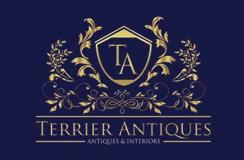
Militaria, Maps and Ethnographica, Oct 11
British and International, Oct 11
Sporting Medals, Oct 12
Clocks and Instruments, Oct 12
Fine Furniture and Works of Art, Oct 12
Jewellery, Oct 13
Toys and Pop Culture, Oct 13
Thomson Roddick
The Auction Centre, 22 Smith Street, Ayr, KA7 1TF 01292 267681
www.thompsonroddick.com
A General Sale of Household Furnishings to Include Antique and Modern Furniture. Glass and Decorative Ware, Assorted
Pocket and Wrist Watches, Gold Gem Set Jewellery, Oct 5
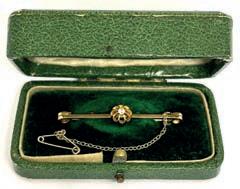
Antique Sale, Oct 19
Thomson Roddick The Auction Centre, 118 Carnethie Street, Edinburgh, EH24 9AL 0131 440 2448
www.thompsonroddick.com
None listed in October
WALES
Anthemion Auctions, 15 Norwich Road, Cardiff, CF23 9AB., 029 2047 2444
www.anthemionauction.com
General Sale of Ceramics, Glass, Paintings, Furniture, Clocks, Works of Art, Books, Sporting Memorabilia, Oct 4
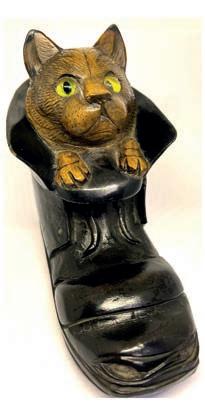
Jones & Llewelyn
Unit B, Beechwood Trading Estate, Llandeilo, Carmarthenshire, SA19 7HR, 01558 823 430
www.jonesandllewelyn.com
General Sale, Oct 7, 21
Rogers Jones & Co
Because this list is compiled in advance, alterations or cancellations to the auctions listed can occur and it is not possible to notify readers of the changes. We strongly advise anyone wishing to attend an auction especially if they have to travel any distance, to telephone the organiser to confirm the details given. Whaley
17 Llandough Trading Estate, Penarth, Cardiff, CF11 8RR, 02920 708125
www.rogersjones.co.uk
The Club House: Rugby World Cup Special, Oct 6 Fine Art and Interiors, Oct 13
Rogers Jones & Co Colwyn Bay Saleroom, 33 Abergele Road, Colwyn Bay, Conwy, North Wales LL29 7RU, 01492 532176

www.rogersjones.co.uk
Jewellery and Collectables, Oct 10
IRELAND
Adam’s 26, Stephens Green, Dublin 2, D02 X665, Ireland 00 353 1 6760261
www.adams.ie
The Jewellery Box, Oct 2 Country House Collections at Townley Hall, Oct 10

Fonsie Mealy’s Chatsworth Auction Rooms, Chatsworth St., Castlecomer, Co. Kilkenny, Ireland 00 353 56 4441229
www.fonsiemealy.ie
None listed in October
Whyte’s 38 Molesworth St. Dublin D02 KF80 Ireland 00 353 1 676 2888
www.whytes.ie
Important Irish Art, Oct 2
Tel: 07767 617507 or 01663 733209
64 ANTIQUE COLLECTING
Bridge, High Peak, Derbyshire
For a superb selection of over 100 Genuine Antique longcase, wall, and bracket clocks
7 days by appointment 01422 843189 o ce@terrierantiques.co.uk www.terrierantiques.co.uk QUALITY ANTIQUES & OBJETS D’ART 26 Market St, Hebden Bridge, West Yorkshire, HX7 6AA
www.antique-clock.co.uk The Chimes Antique Clock Centre
Open
•WANTED•
for epic East Yorkshire Georgian townhouse restoration.

Labelled/ stamped branded furniture from Georgian to Victorian, eg Thomas Butler, Morgan & Sanders, J Alderman, Ross of Dublin (pictured), Gregory Kane, Wilkinson of Ludgate Hill, Robert James of Bristol, James Winter, W Priest, Samuel Pratt and many others. Tables all types, chairs, bookcases, , Davenport. mirrors etc. Campaign shower.
Georgian chamber horse exercise chair (pictured)
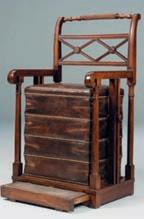
Signed and unusual furniture. Georgian, Regency, William IV. Sofa / Pembroke / side tables, library furniture / bookcases. Also Victorian campaign chests, armchairs etc. Ross of Dublin, Morgan & Sanders, Williams & Gibton, James Winter, Hill & Millard and many others.

•WANTED• VINTAGE WRISTWATCHES
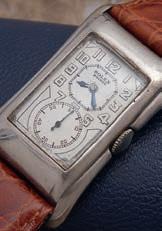
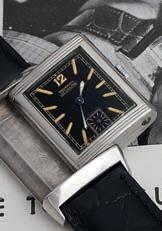
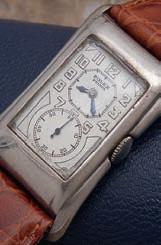
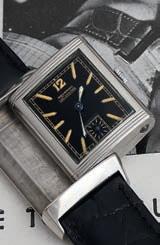
Omega Seamasters and pre-1980s Omegas in general.
IWC and Jaeger LeCoultres, all styles. Looking for Reversos. American market filled and 14k pieces possibly, at the right price.
Omega Seamasters and pre-1980s Omegas in general. IWC and Jaeger LeCoultres, all styles. Looking for Reversos. American market filled and 14k pieces possibly, at the right price.
Breitling Top Times, Datoras and 806 Navitimers.
Pre-1960s Rolex models, with a focus in pre-war tanks, tonneaus etc. Gold or silver/steel. Also World War I Rolex 13 lignes etc. Princes.
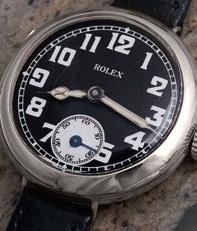

Breitling Top Times, Datoras and 806 Navitimers. Pre-1960s Rolex models, with a focus in pre-war tanks, tonneaus etc. Gold or silver/steel. Also World War I Rolex 13 lignes etc. Princes.
Longines, Tudors and Zeniths, pre-1970. Even basic steel models in nice condition. All the quirky oddities like Harwoods, Autorists, Wig Wag, Rolls etc, and World War I hunter and semi-hunter wristwatches.
Longines, Tudors and Zeniths, pre-1970. Even basic steel models in nice condition. All the quirky oddities like Harwoods, Autorists, Wig Wag, Rolls etc, and World War I hunter and semi-hunter wristwatches.
Early, pre-war ladies’ watches also wanted by Rolex, Jaeger LeCoultre etc. Prefer 1920s/30s deco styles, but early doughnuts also considered.
Early, pre-war ladies’ watches also wanted by Rolex, Jaeger LeCoultre etc. Prefer 1920s/30s deco styles, but early doughnuts also considered.
Yorkshire based, but often in London and can easily collect nationwide.
Yorkshire based, but often in London and can easily collect nationwide.

vintagejewellery@yahoo.co.uk or tel 07958 333442
J Alderman. Daws and George Minter reclining chairs. Shoolbred/ Hamptons / Cornelius Smith Victorian armchairs.

Unusual Georgian to William IV architectural features eg doors, door frames, over door pediments. 18th century staircase spindles and handrail needed. Anything Georgian or Regency with lots of character considered.
Marble fire surrounds. Georgian / Regency/ William IV. Bullseyes etc. Exceptional Georgian / Regency fire grates
Rectangular Georgian fanlight.
Sash windows x 4 identical. Georgian reclaimed. Approx 58” high x 36” wide. Wide reclaimed floorboards. Approx 100 m2. Early decorative oil / gas / electric light fittings. Ceiling, wall or table. Early gasoliers. Colza lamps. Gimble lamp.
Four identical reclaimed Georgian wooden sash windows with boxes, approx 60 high x 37 wide.
Roland Ward, Van Ingen taxidermy. Human skull. Hippopotamus skull. Stuffed crocodile / alligator.
Marble fire surrounds from 1750 to 1850ish. White or coloured. Bullseyes, William IV styles etc. Brass Regency reeded fire insert and Victorian griffin grate (pictured)
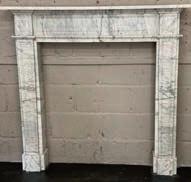
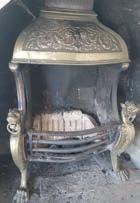
Quirky architectural features. Regency columns, corbels, marble and stone pieces, over door pediments, folding/rolling multi part Georgian room dividing doors.
Human skull, stuffed crocodile/ alligator. Grand tour souvenirs.
Victorian canopy shower bath. Decorated toilets etc Unitas, Simplicitas, Deluge etc. Decorated basins x 3.

vintagejewellery@yahoo.co.uk

PM Antiques & Collectables are a modern and innovative antiques retailer based in Surrey. Specialising in a wide array of collector’s items, including contemporary art, entertainment and memorabilia, vintage toys, decorative ceramics, watches and automobilia.
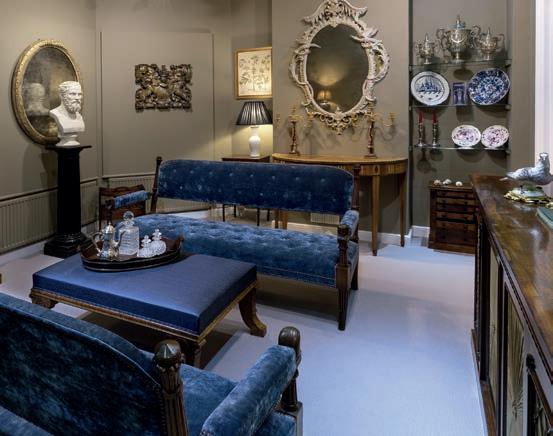




East Yorkshire town house renovation. ~ WANTED ~ vintagejewellery@yahoo.co.uk or tel 07958 333442 & Collectors Fair Three Counties Showground, Worcs. WR13 6NW. Tel: 01636 676531 www.b2bevents.info
7.30am-3.30pm - £5 Sunday 15th October Up to 400 inside & outside exhibitors. ANTIQUE COLLECTING 65 ANTIQUE COLLECTING 65
1978 1 The Square, Church Street, Edenbridge, Kent TN8 5BD 01732 865 988 or 07836233473 cato@lennoxcato.com
•WANTED• VINTAGE WRISTWATCHES
or tel 07958 333442
For
Entrance:
LENNOX CATO ANTIQUES & WORKS OF ART EST:
www.lennoxcato.com
vintagejewellery@yahoo.co.uk
or tel 07958 333442
Buy & Sell pm-antiques.co.uk Contact us: phil@pm-antiques.co.uk 01932 640113 PMAntiques2015 PM_Antiques
We
Marc My Words
Will Marc Allum’s recent trip to Jordan prove to be his last crusade ?

As I’ve got older, life has paradoxically become more complicated. I nd myself constantly trying to scratch an archaeological itch while weighing up whether I am still capable of pulling o another adventure in the face of advancing age.
Most often though it is my thirst for knowledge that wins out and, in the case of a recent visit to Jordan, it was inspired by the gift of a canteen of water from the River Jordan collected by a lady called Jane Boodle in 1854. I didn’t know much about the owner, or her travels, but it stirred a desire to follow in her footsteps.
Previous lives

So, it was with an intrepid ourish that my wife Lisa and I embarked on a tour of some of the world’s most holy, historic and enigmatic sights (and sites).
e city of Jerash (or Gerasa), north of the capital Amman, is an incredible Greco-Roman city which didn’t disappoint. Once you’ve run the gauntlet of souvenir sellers and ‘guides’, the imposing 2nd century arch, built to honour Hadrian’s visit in 129AD, stands majestically against the clear azure sky.
But this was just the prelude to the city’s huge colonnaded forum, its majestic cardo (the north–south street at the centre of many Roman cities) and the stunning Temple of Artemis. Yet, despite all this imposing architecture, I was engrossed by what was going on under my ‘world boots’ – the name given to my worn-out leather footwear that has been to so many historic places and which I refuse to throw in the bin.
As is often the case, these great sites are littered with small fragments and reminders of life thousands of years ago. I love sifting through this detritus, studying pot sherds and shards of iridescent ancient glass, while also
Above Marc gazes down on the forum and cardo in the ancient city of Jerash

Above right e rst sighting of Petra approached from the siq Below right e water bottle which sparked the trip
being mindful of the fact you must never remove archaeological fragments from sites – however insigni cant they might seem.
A visit to Mount Nebo, where Moses viewed the Promised Land before he died, placed us close to a con uence of history, with Israel visible in the distance through the haze of the Jordan Valley. Again, the standing remains were littered with quern stones and pottery. It was followed by a Moses’ spring at Wadi Musa, where the prophet struck water from the rock for his followers, and from which I scooped a sample for my collection of ‘holy waters’.
Rose red city
But best of all, of course, was Petra. e similarity of my clothes to those of Indiana Jones had already been commented on and, sure enough, the numerous souvenir sellers made the most of the fabled city’s appearance in the 1989 lm Indiana Jones and the Last Crusade
Nothing quite prepares you for that long walk through the siq (valley) and your rst glimpse of the treasury. Despite its fame, Petra still has that sense of rst-time discovery because it’s so vast and seemingly so far removed. We spent nine hours walking in 35-degree heat, scaling cli s while sifting through the carpet of broken ceramics, glass and artefacts that blanket the oors. e lack of health and safety added to a sense of adventure I’ve never quite felt before. As for my ‘world boots’? It might not be the last trip they ever make.

66 ANTIQUE COLLECTING LAST WORD Marc Allum
‘These great sites are littered with small fragments and reminders of life thousands of years ago. I love sifting through this detritus, studying pot sherds and shards of iridescent ancient glass’
Marc Allum is an author, lecturer and specialist on the BBC’s Antiques Roadshow, for more details go to www.marcallum.co.uk
Decorative Art, Fine Furniture & Effects
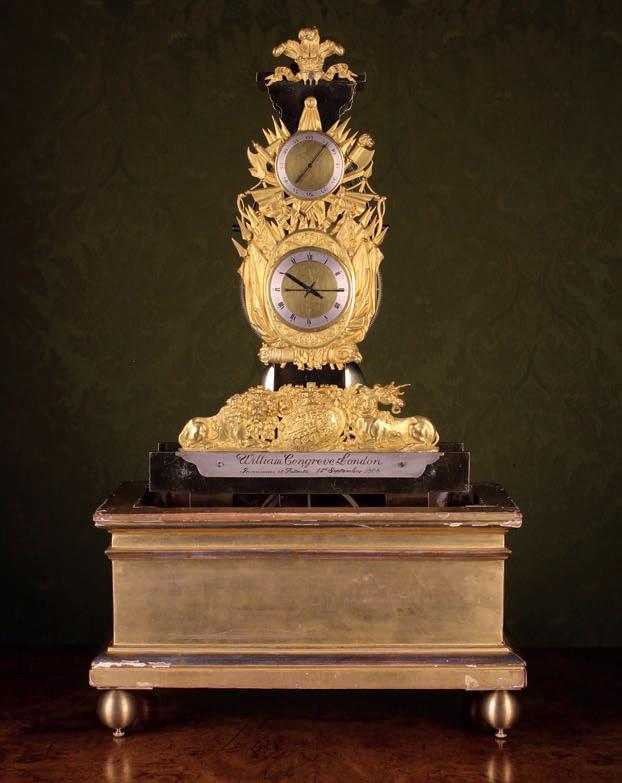
Sale Date: Sunday 1st October 11am
VIEWING DATES
Thursday 29th September 10-4pm
Friday 30th September 10-4pm
Sunday 1st October 9-11am or by Private Appointment
Hardcopy catalogues are available for £10, the online catalogue is available at: drouot.com, invaluable.com, the-saleroom.com, wilkinsons-auctioneers.co.uk
Wilkinsons Auctioneers Ltd
The Old Saleroom, 28 Netherhall Road, Doncaster, South Yorkshire, DN1 2PW Telephone: 01302 814884 www.wilkinsons-auctioneers.co.uk
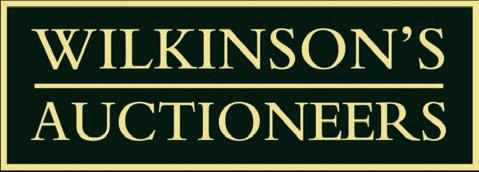

























 Georgina Wroe, Editor
Georgina Wroe, Editor






































































































































 Left Frank Walter (19262009) Antiguan Lady on Green Grass, undated. Courtesy Frank Walter Family and Kenneth M. Milton Fine Arts, on show at the Garden Museum
Right Frank Walter (1926-2009) Untitled (Goat Field), 1984 © Kenneth M. Milton Fine Arts, courtesy Kenneth M. Milton Fine Arts and David Zwirner, on show at David Zwirner, Hong Kong
Below Frank Walter (1926-2009) Untitled (Palm Tree Frond), undated, oil on singleply cardboard, 42.7 x 28.7cm. Courtesy Frank Walter Family and Kenneth M. Milton Fine Arts, on show at the Garden Museum
Left Frank Walter (19262009) Antiguan Lady on Green Grass, undated. Courtesy Frank Walter Family and Kenneth M. Milton Fine Arts, on show at the Garden Museum
Right Frank Walter (1926-2009) Untitled (Goat Field), 1984 © Kenneth M. Milton Fine Arts, courtesy Kenneth M. Milton Fine Arts and David Zwirner, on show at David Zwirner, Hong Kong
Below Frank Walter (1926-2009) Untitled (Palm Tree Frond), undated, oil on singleply cardboard, 42.7 x 28.7cm. Courtesy Frank Walter Family and Kenneth M. Milton Fine Arts, on show at the Garden Museum





















 e set of model skulls is expected to make £200-£300
e set of model skulls is expected to make £200-£300





































































































 BY SIMON BERTRAND
BY SIMON BERTRAND



 BY A.S.G. BUTLER, GEORGE STEWART, CHRISTOPHER HUSSEY
BY A.S.G. BUTLER, GEORGE STEWART, CHRISTOPHER HUSSEY



































































